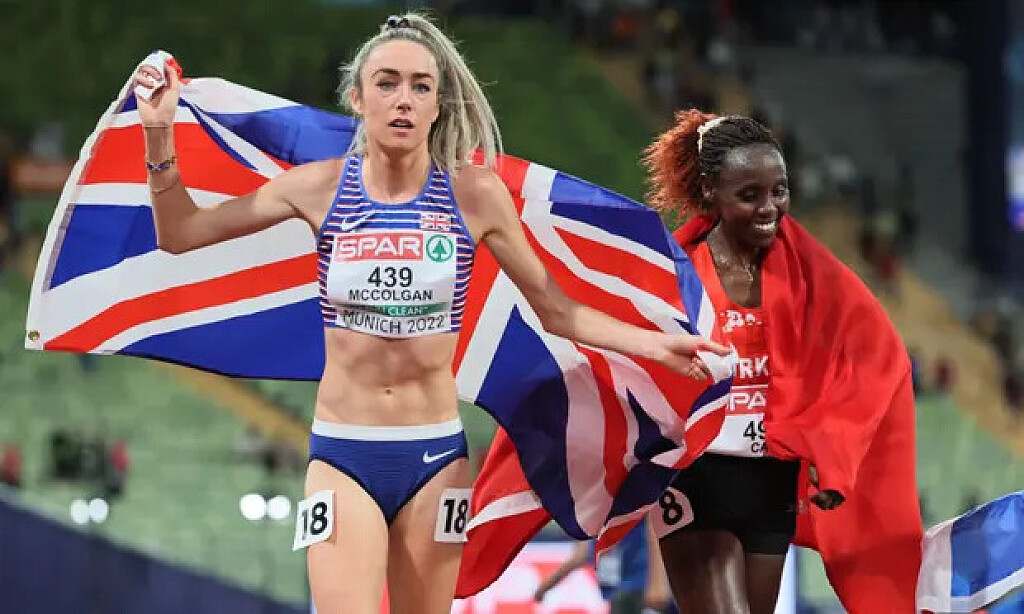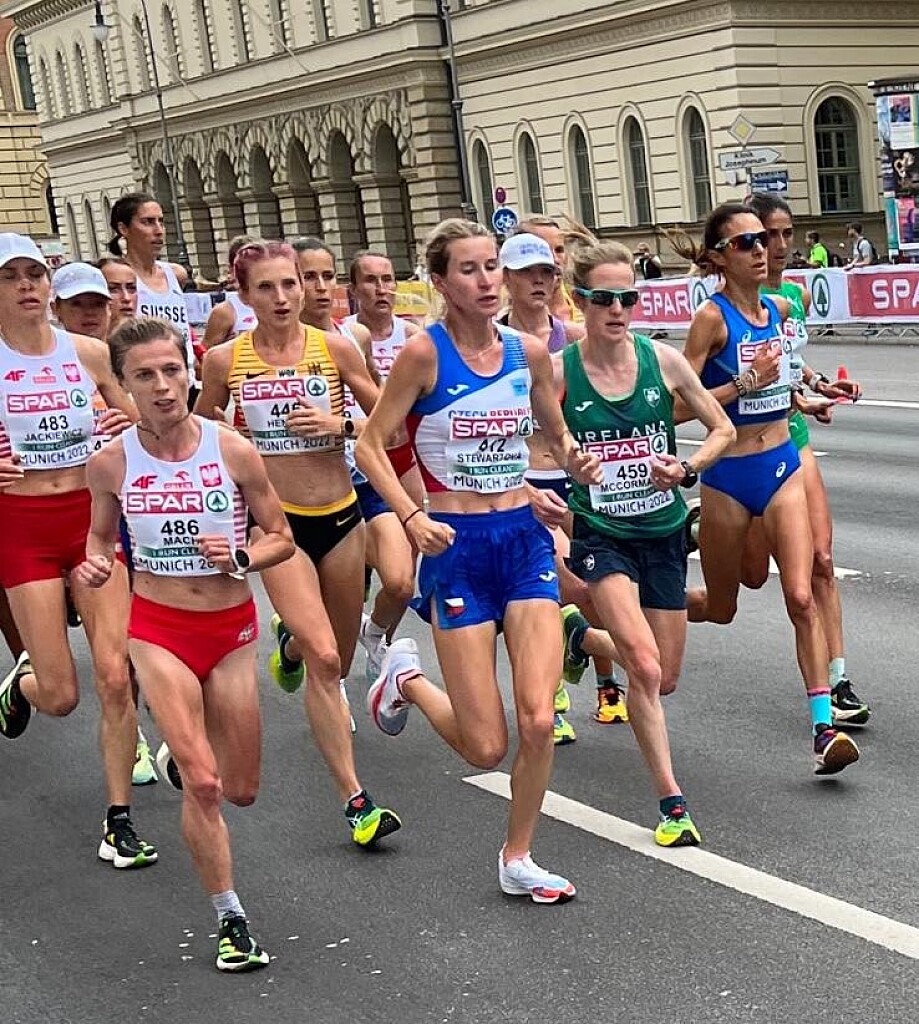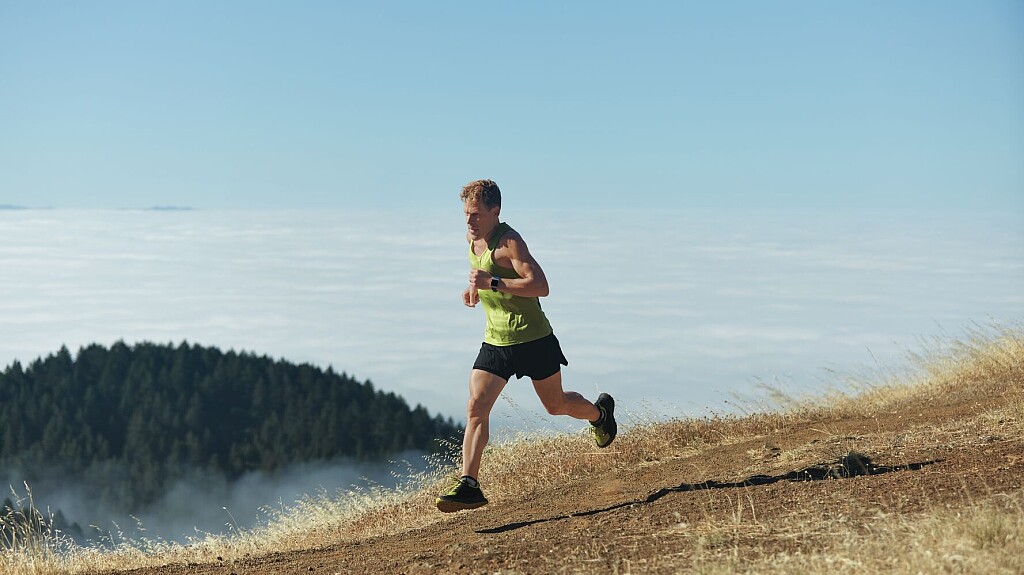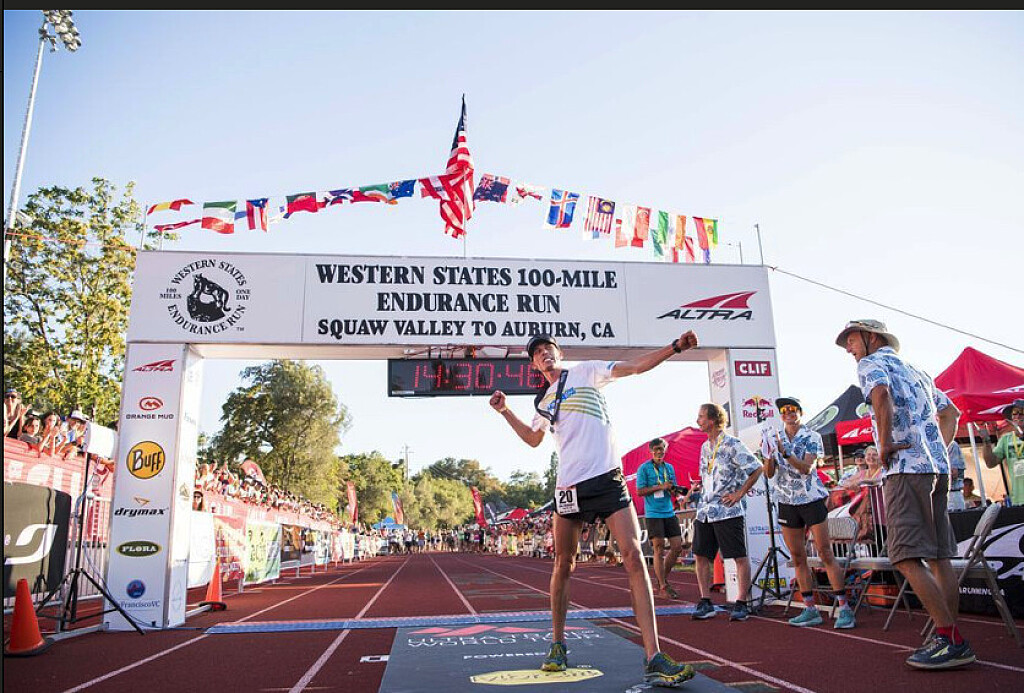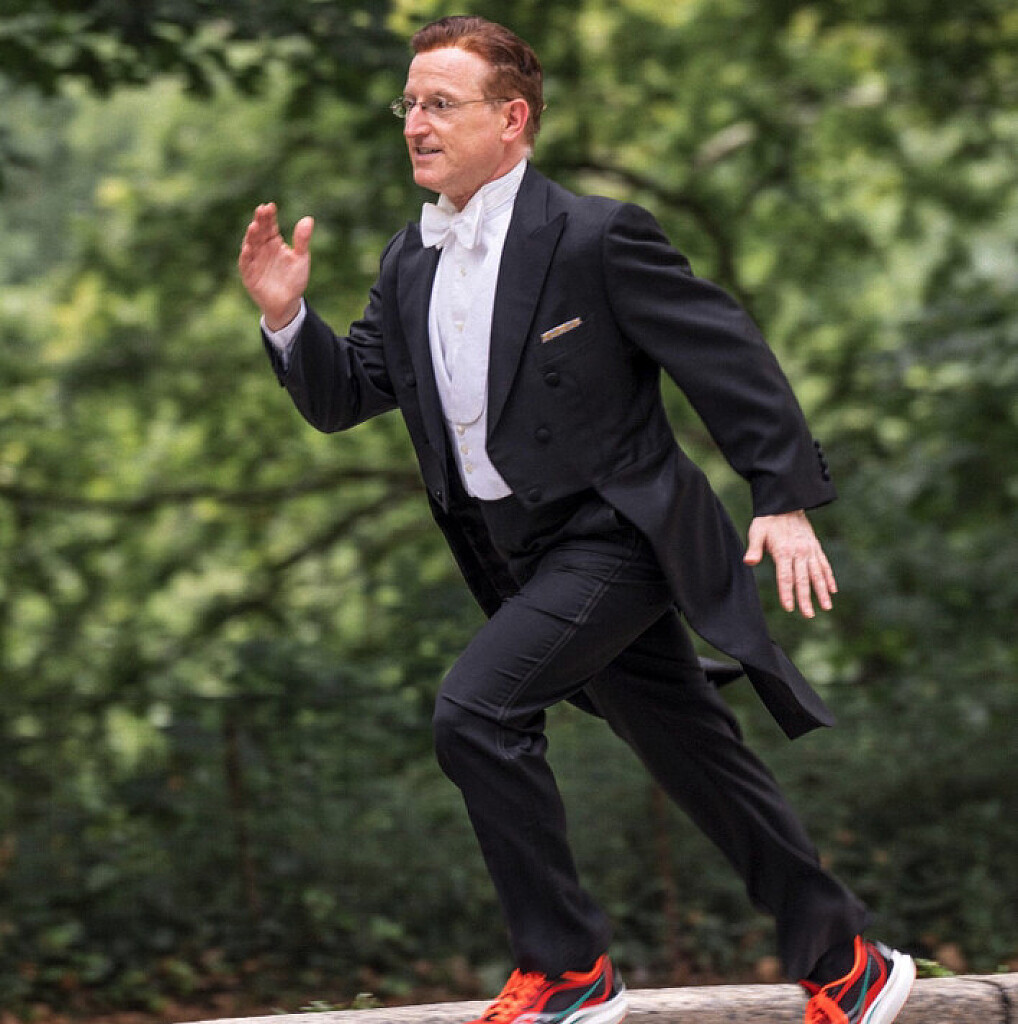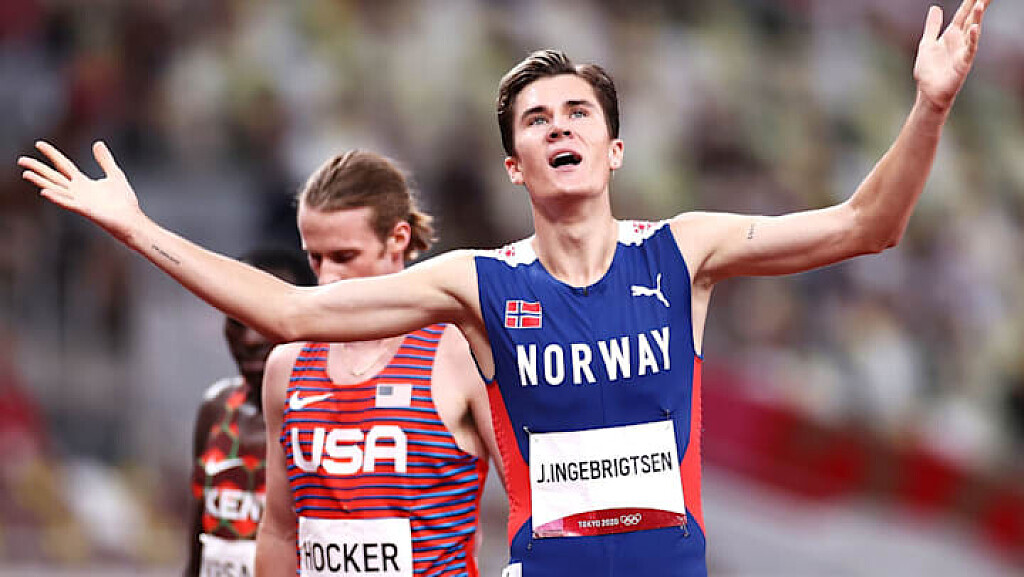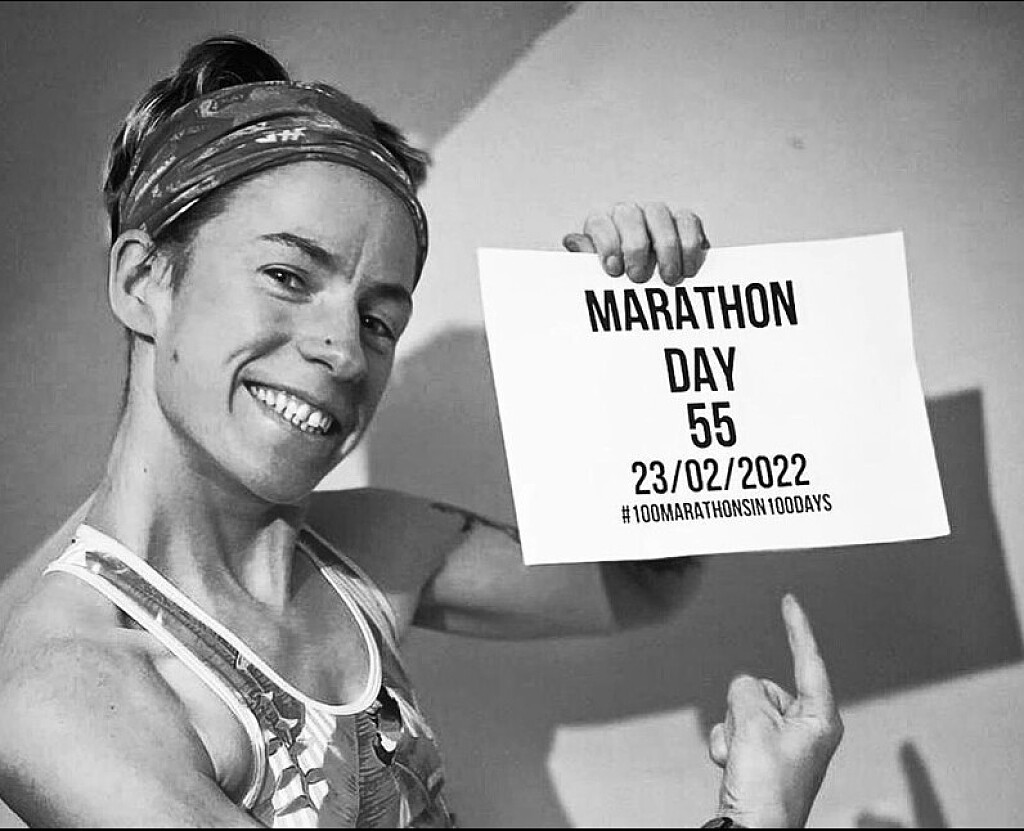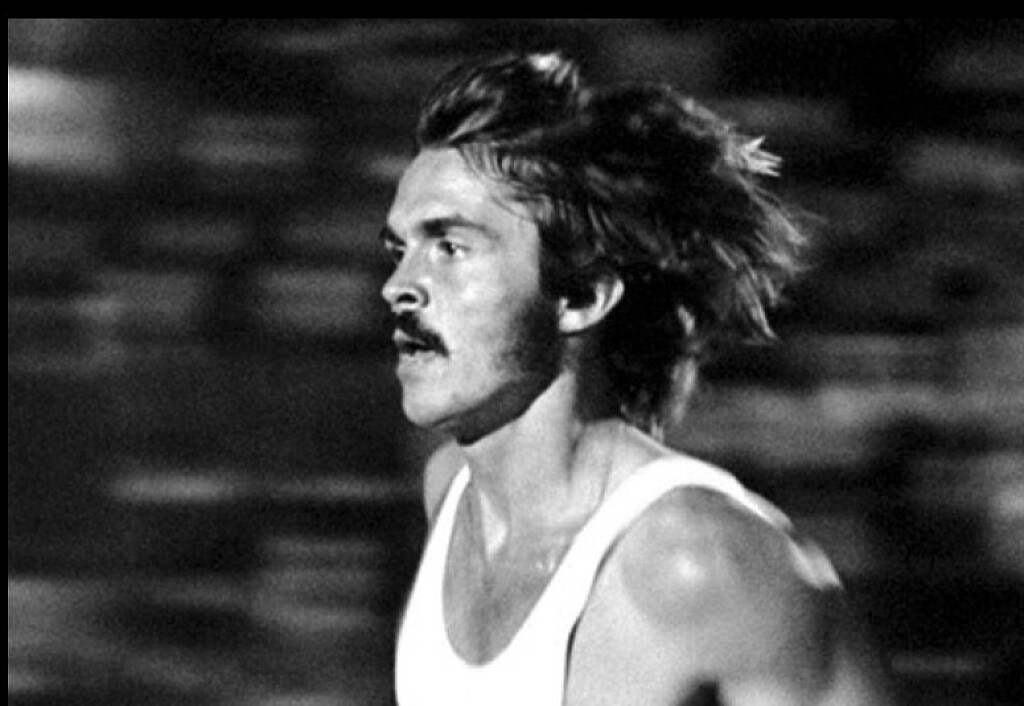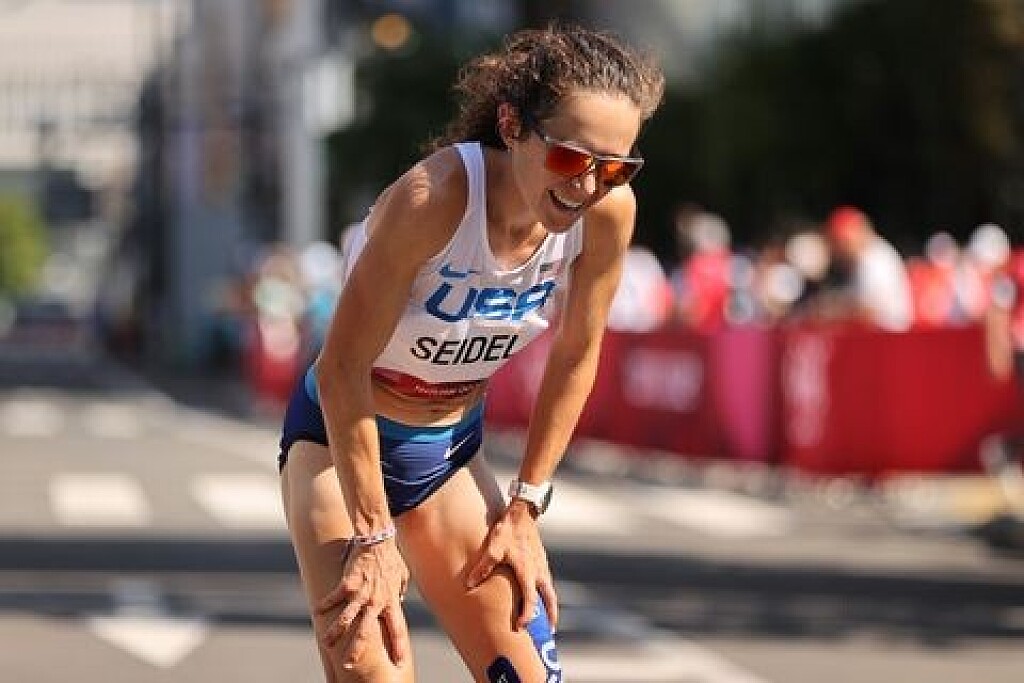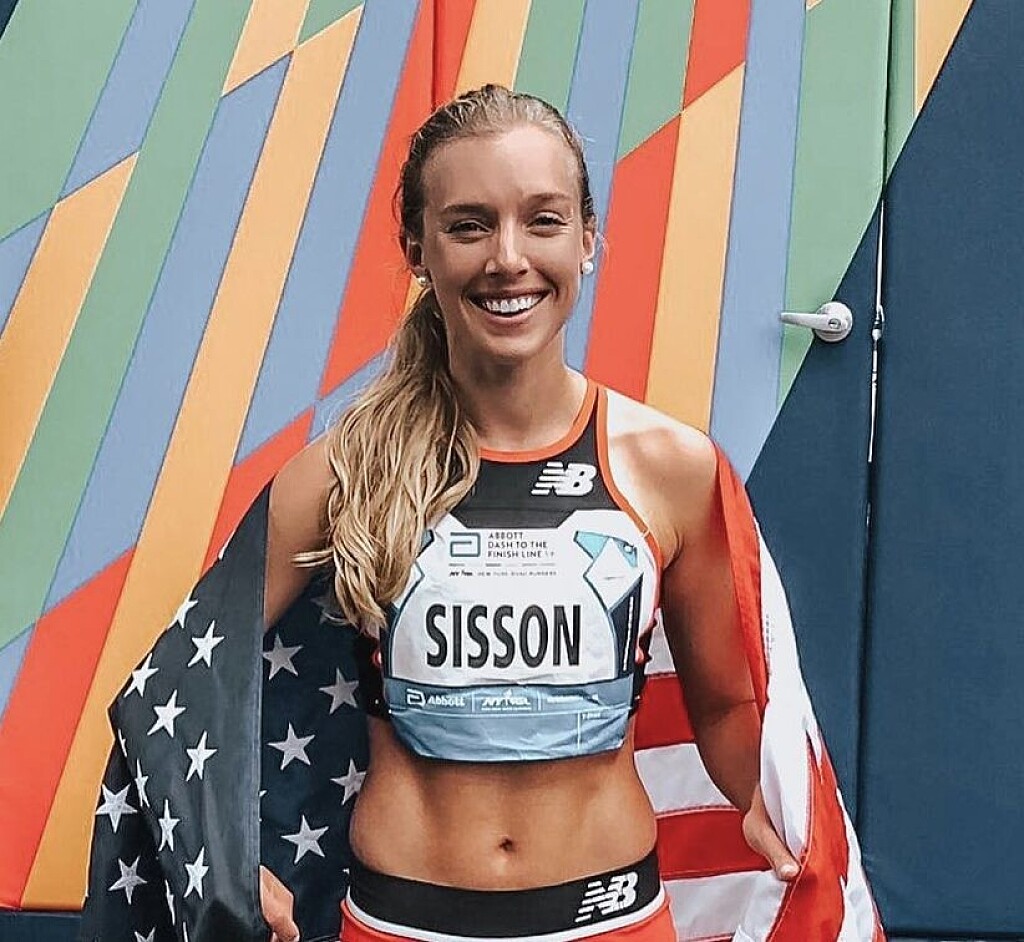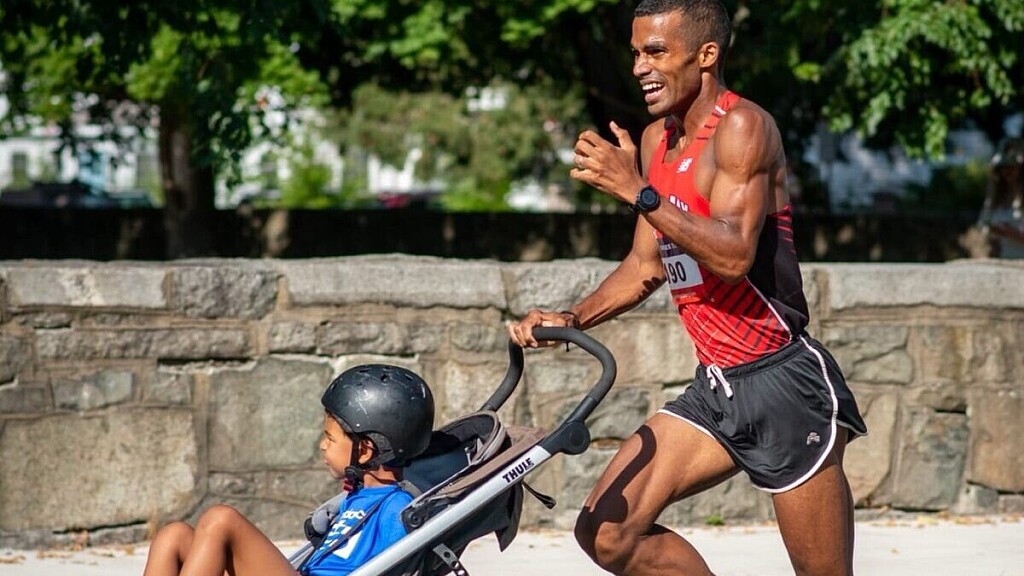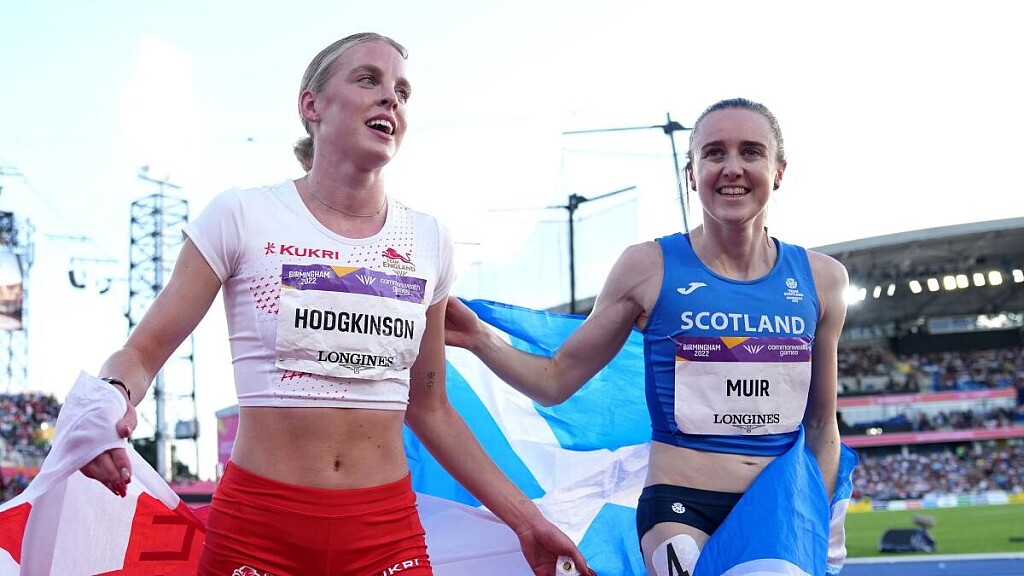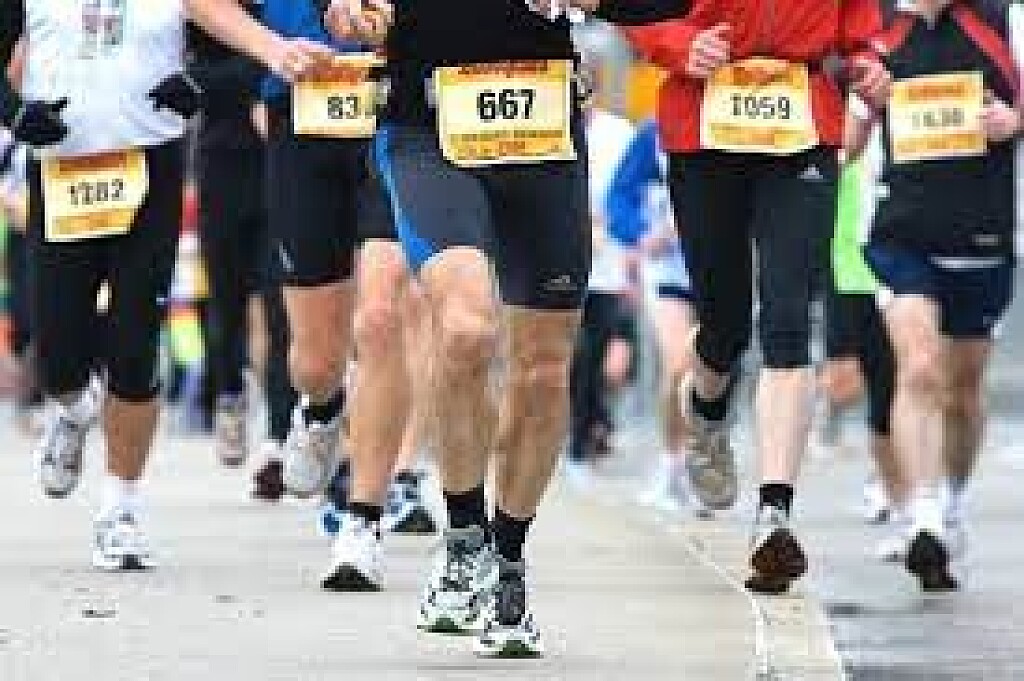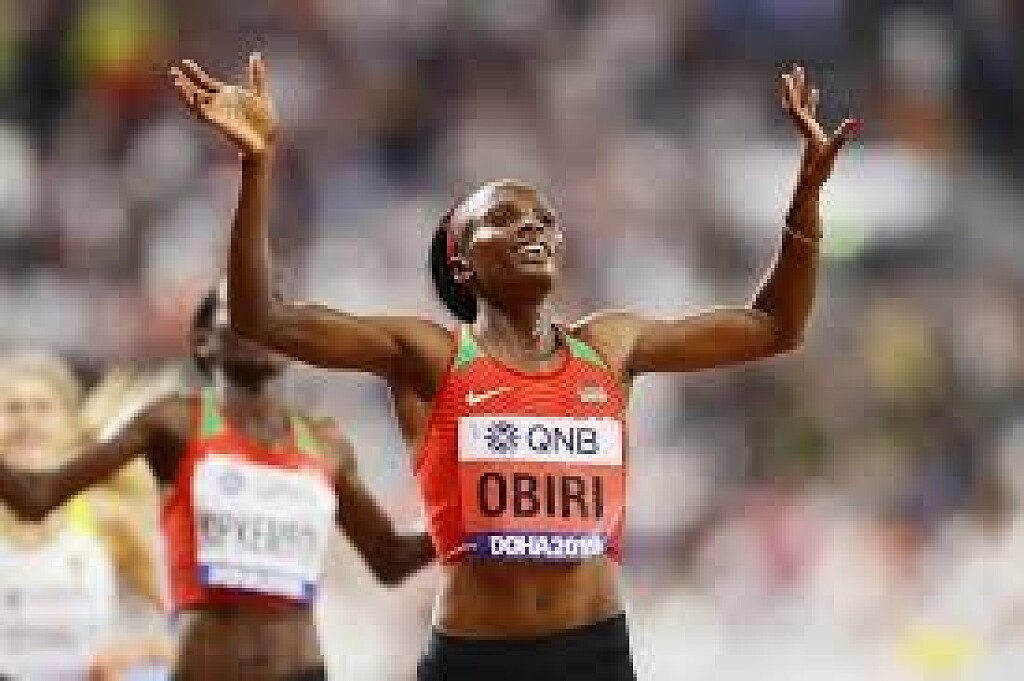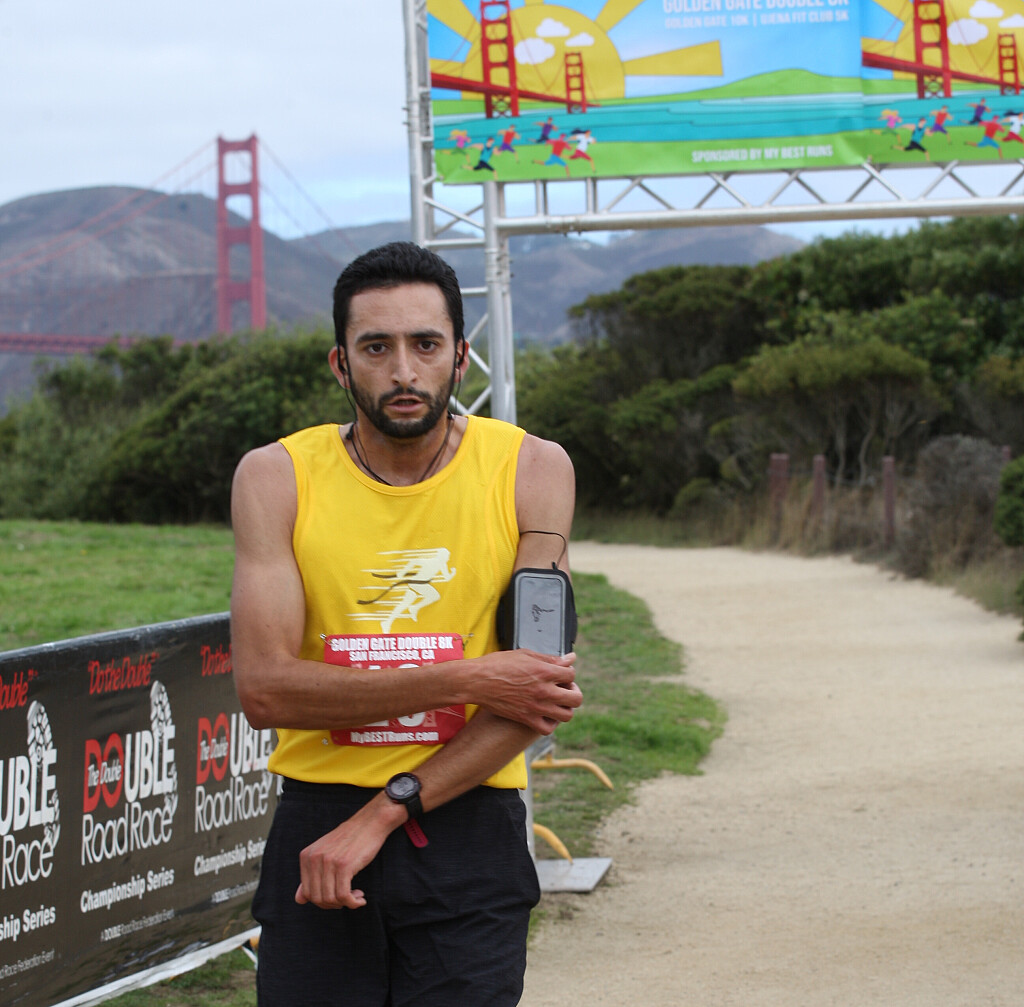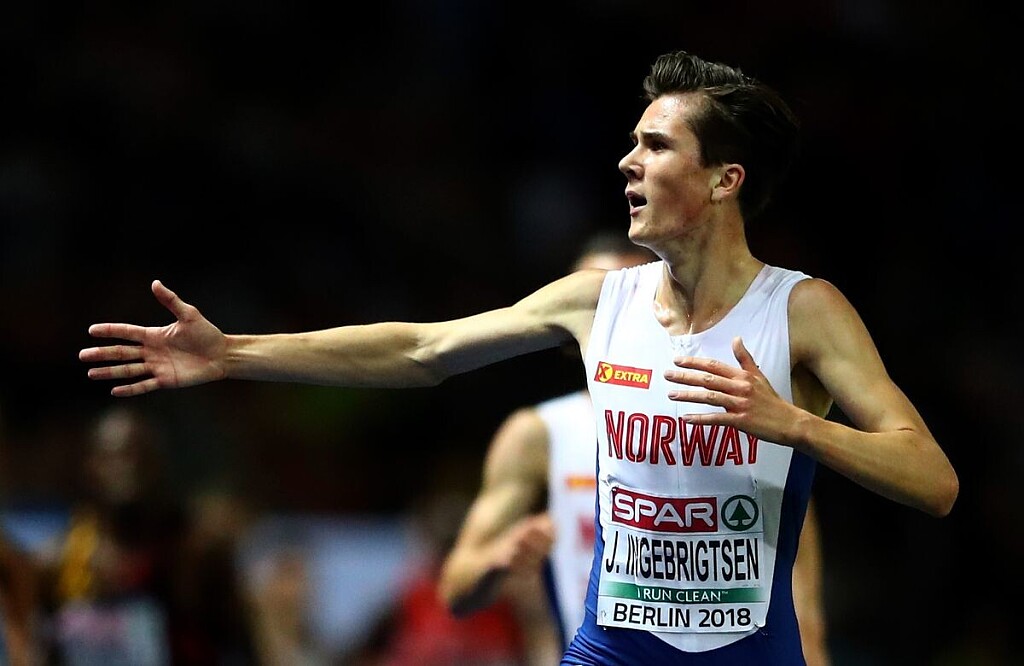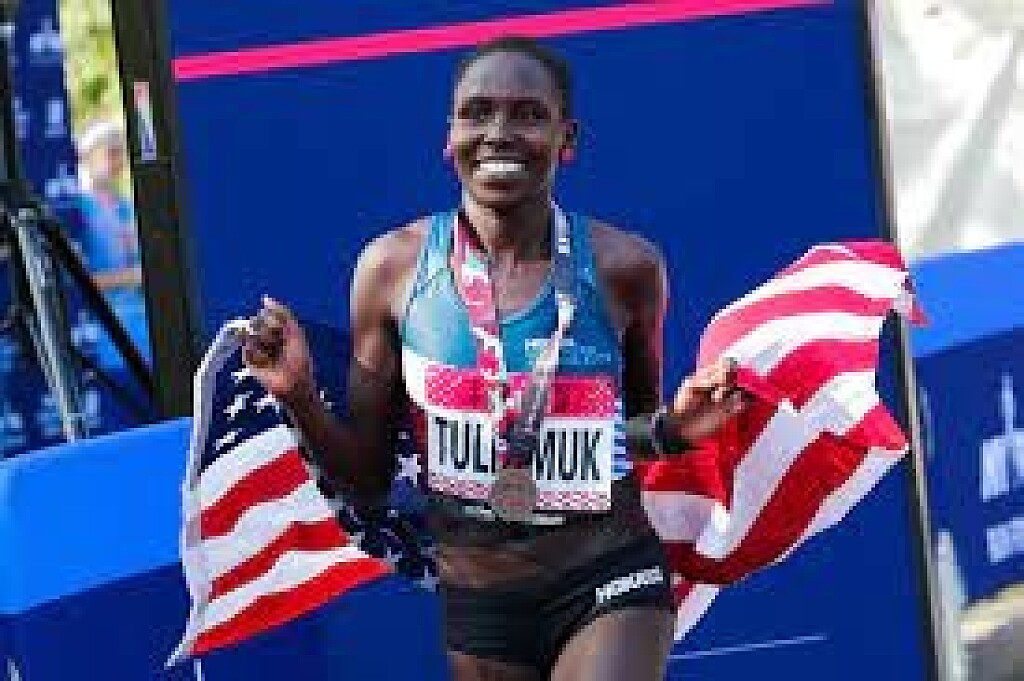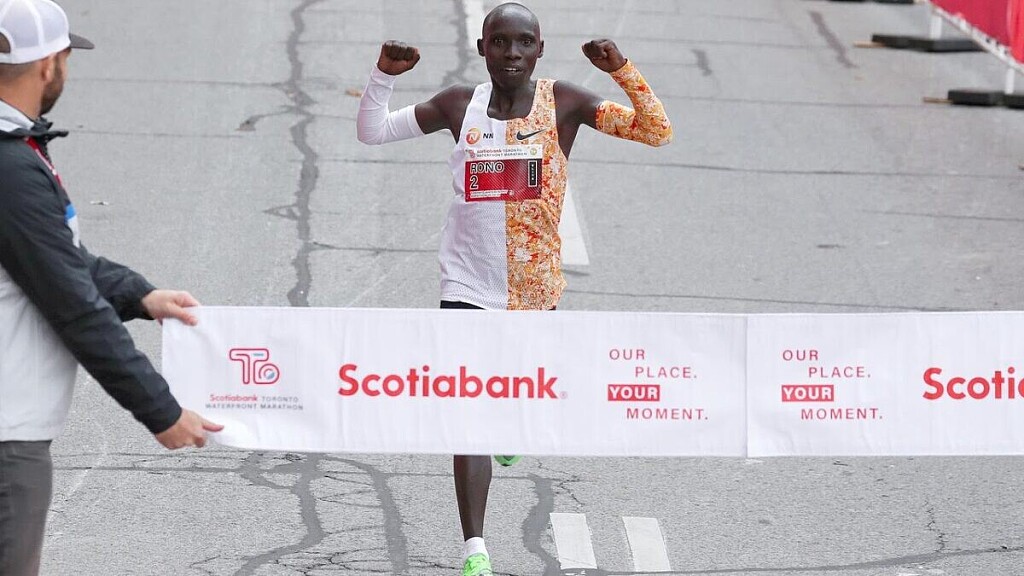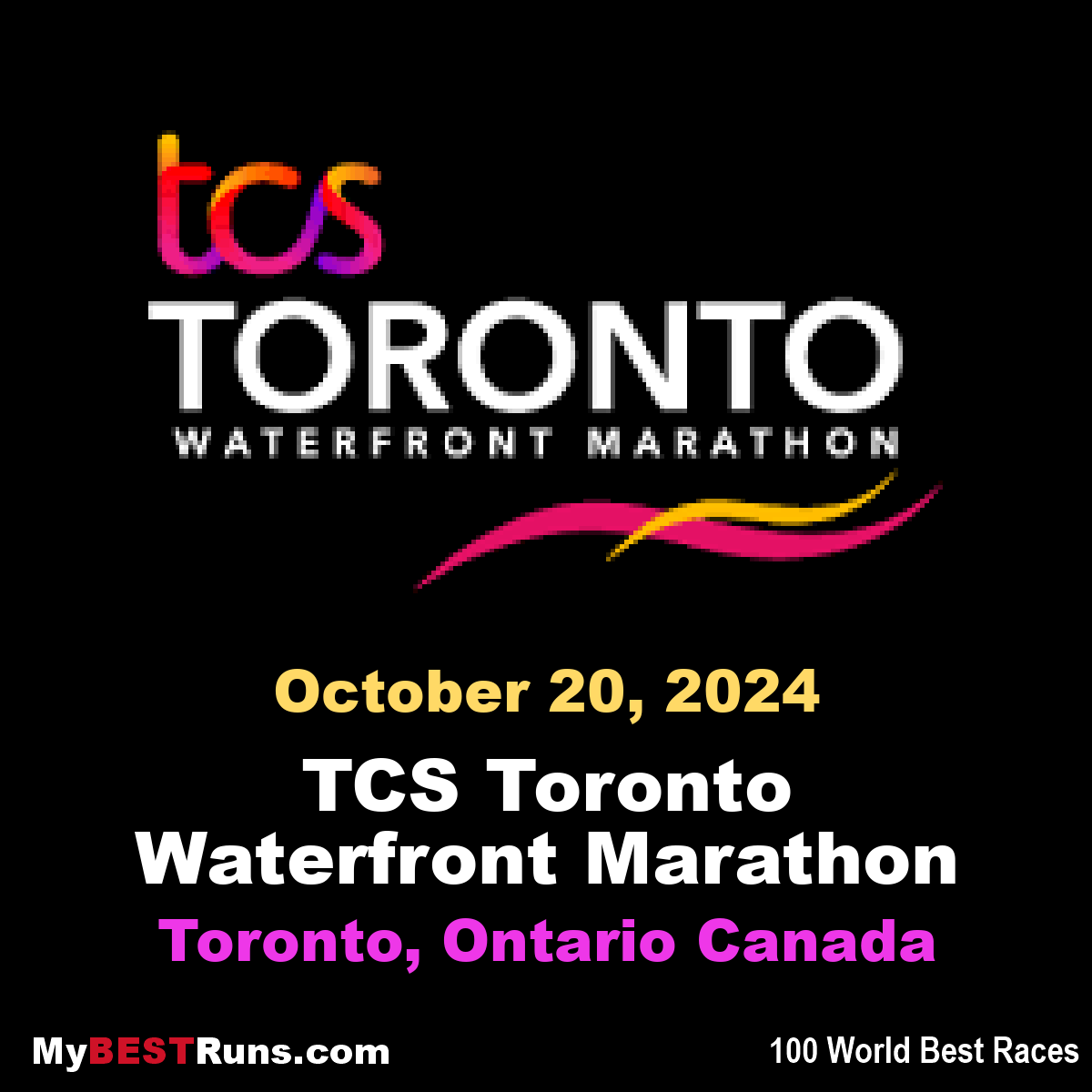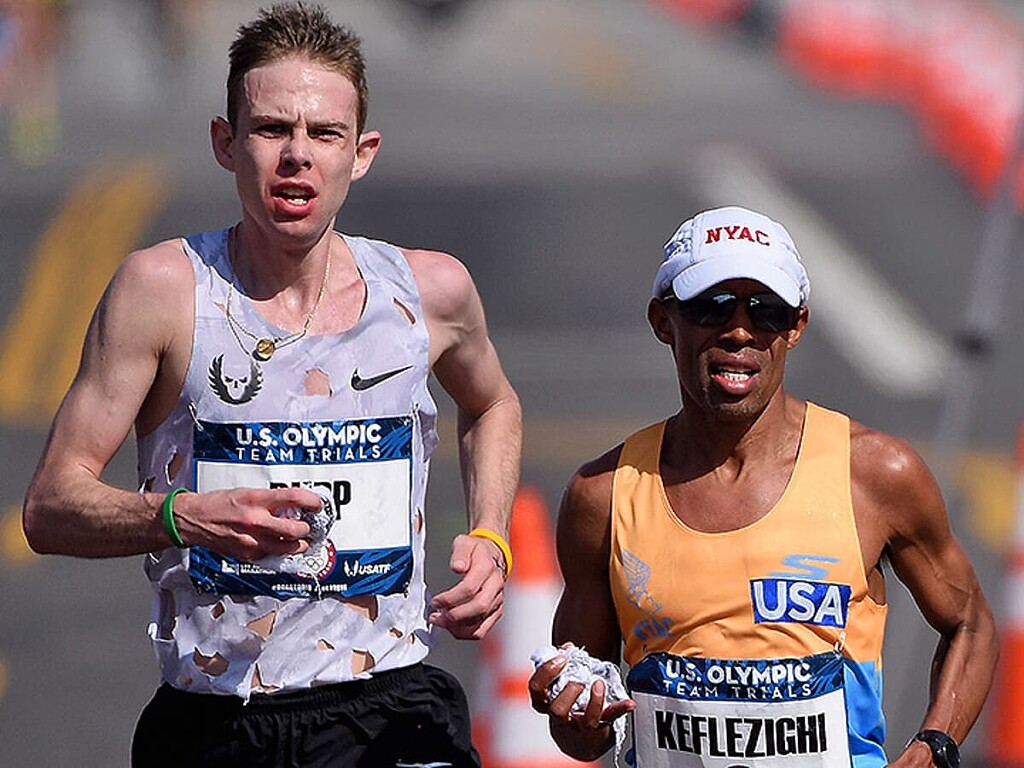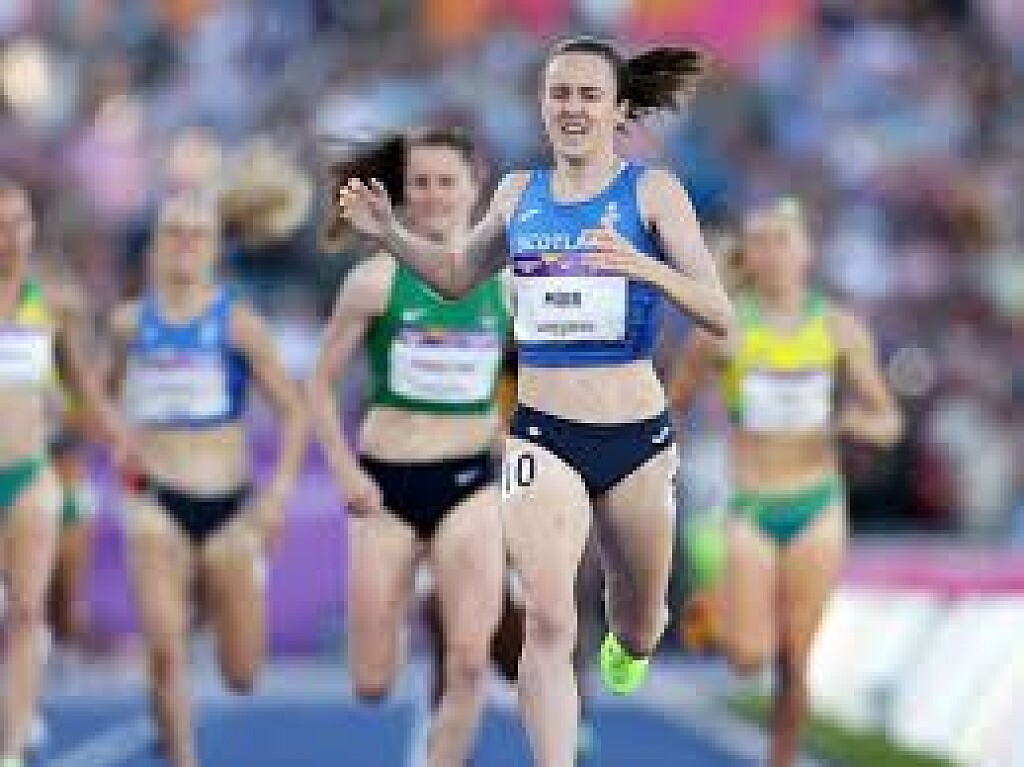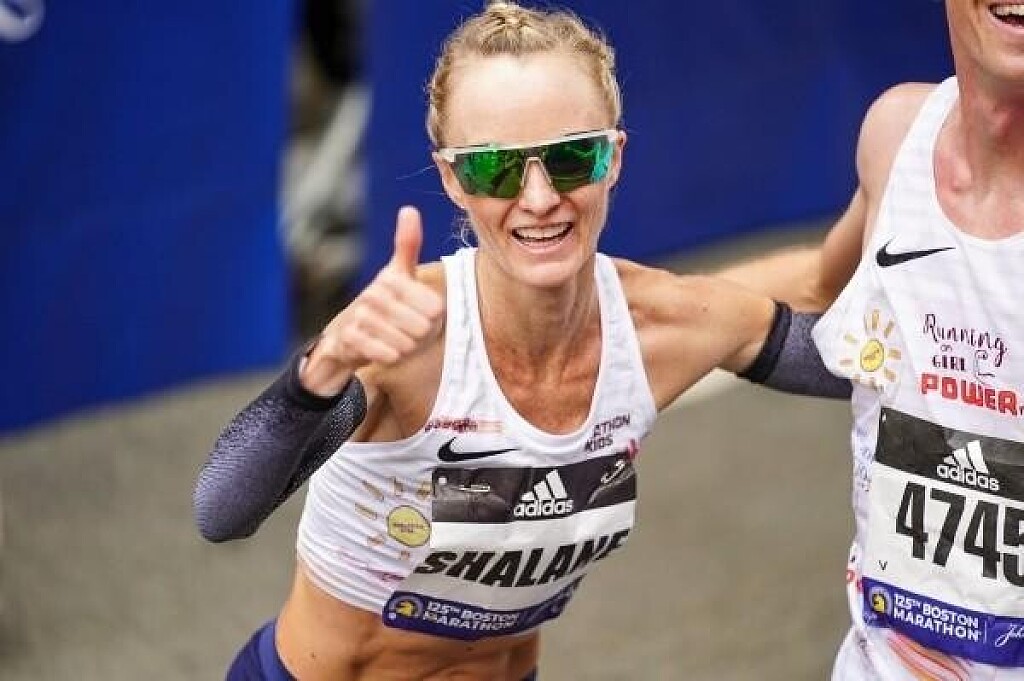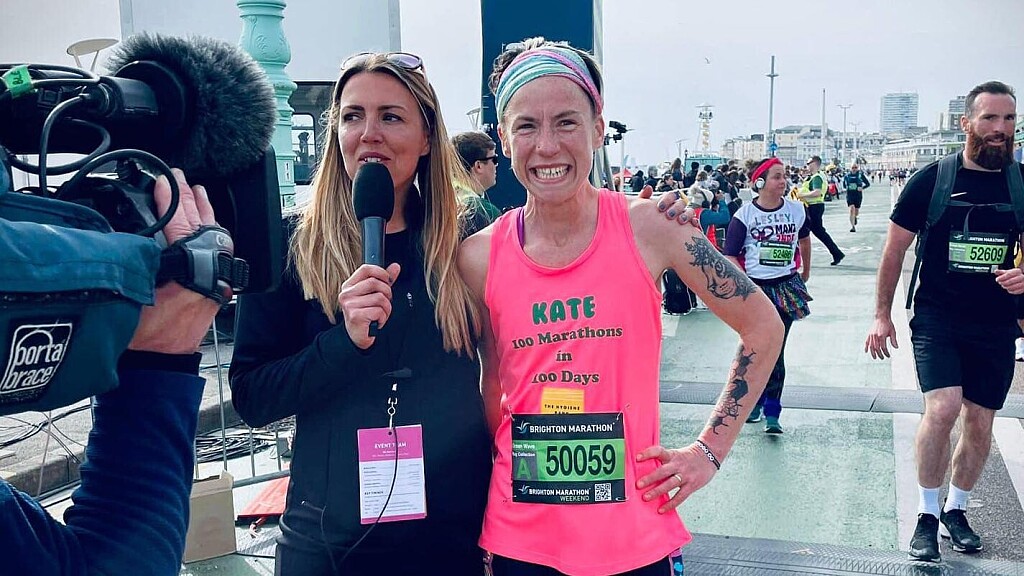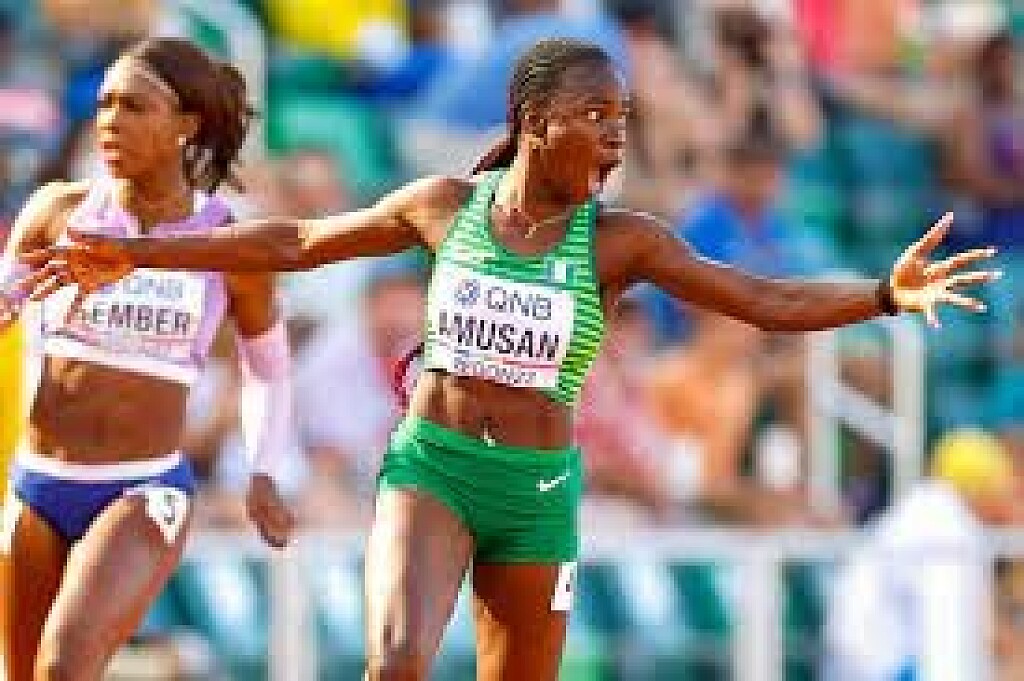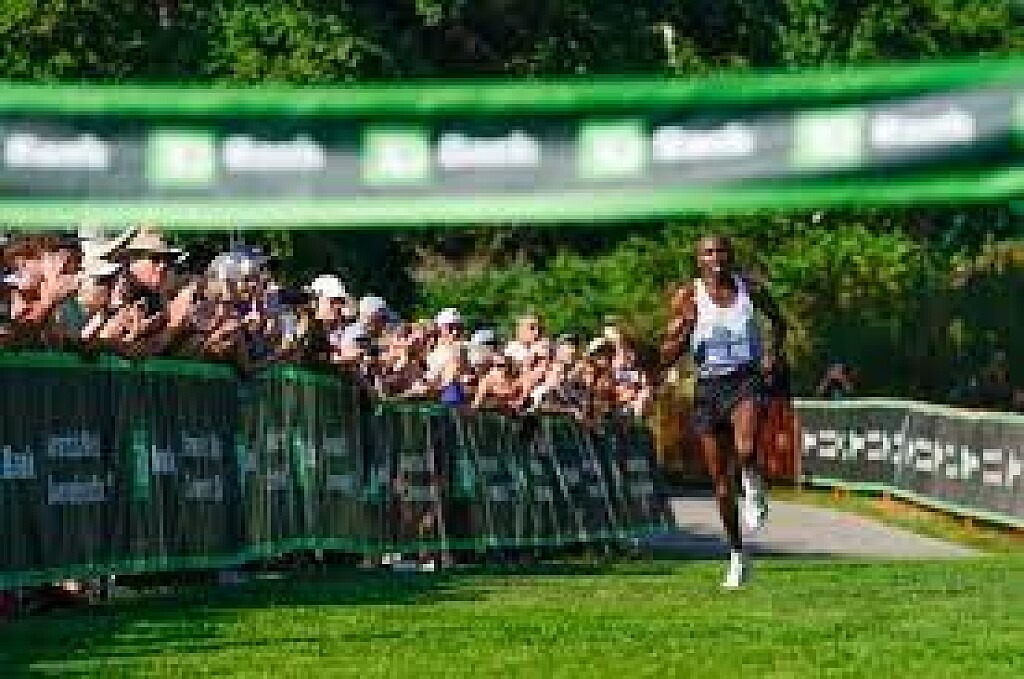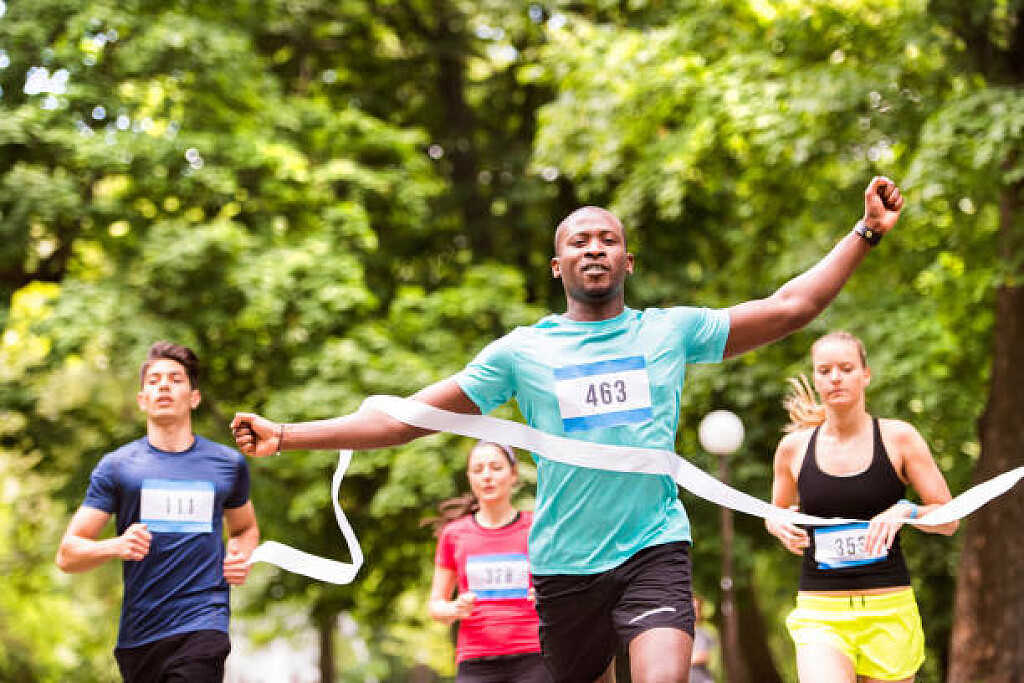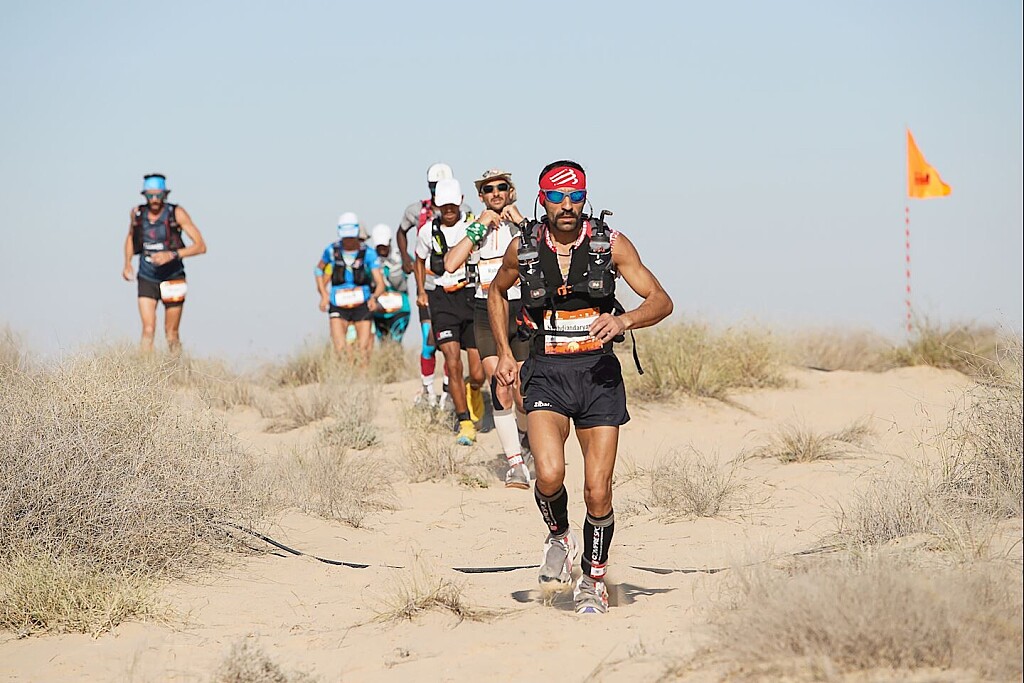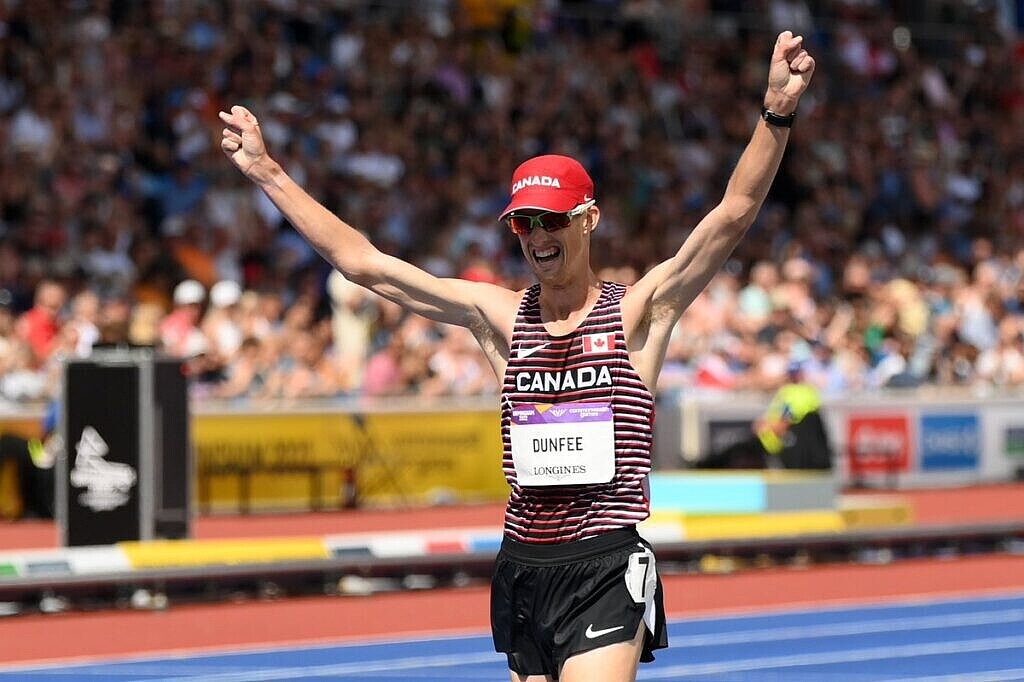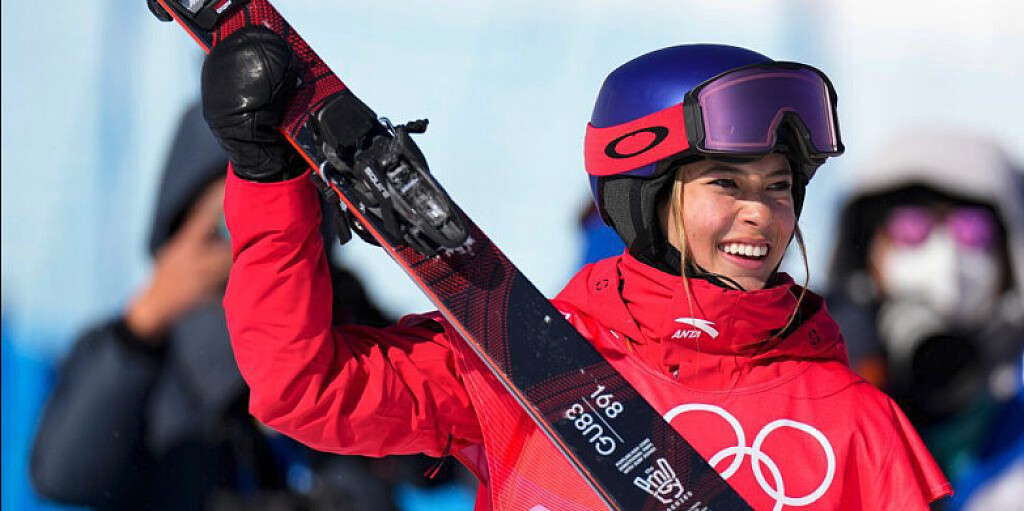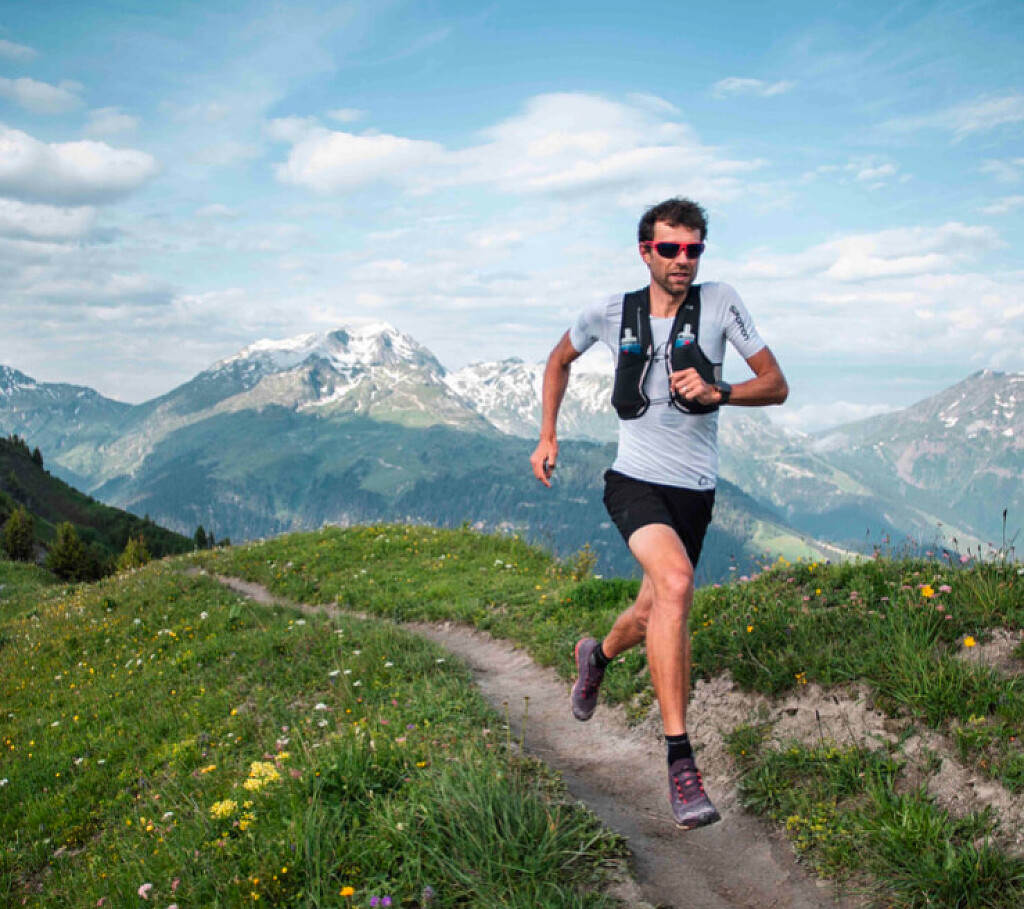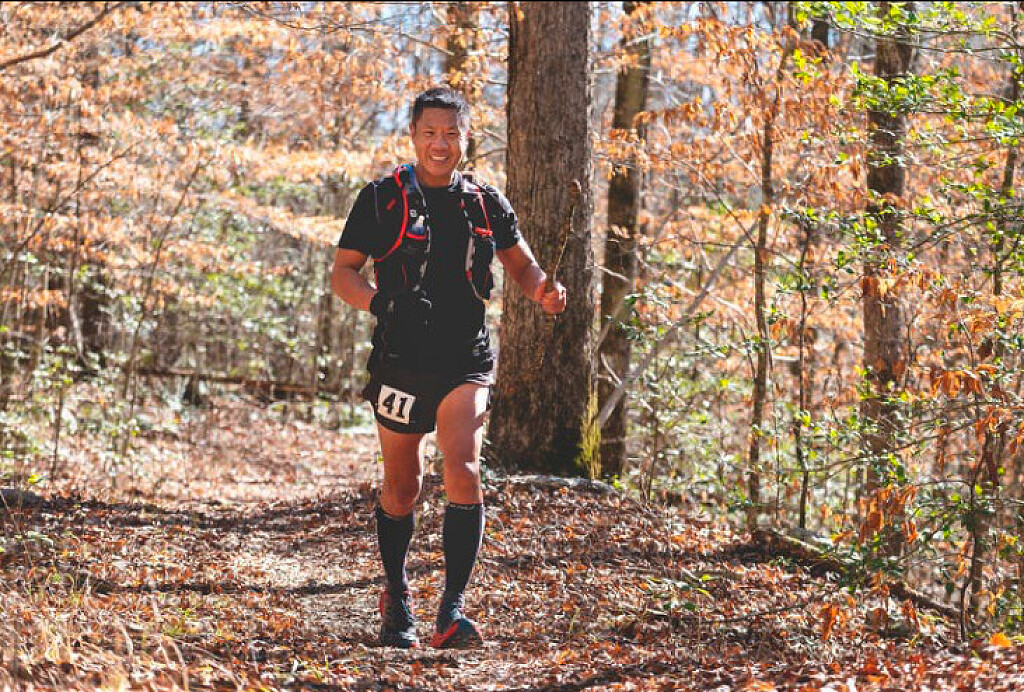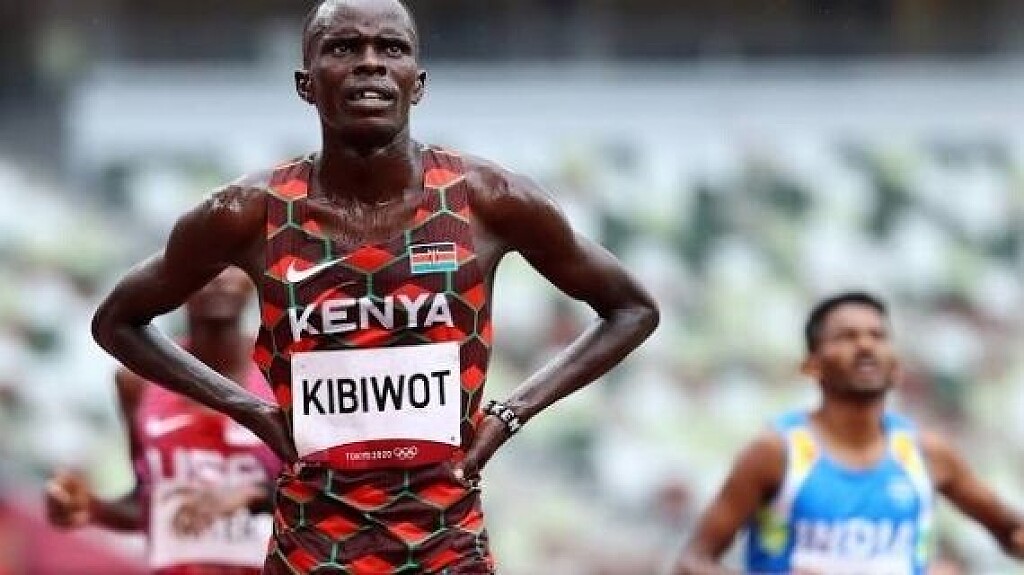Running News Daily
Running News Daily is edited by Bob Anderson. Send your news items to bob@mybestruns.com Advertising opportunities available. Train the Kenyan Way at KATA Kenya and Portugal owned and operated by Bob Anderson. Be sure to catch our movie A Long Run the movie KATA Running Camps and KATA Potato Farms - 31 now open in Kenya! https://kata.ke/
Index to Daily Posts · Sign Up For Updates · Run The World Feed
Great Britain's Eilish McColgan took women's 10,000m silver at the European Championships as Turkey's Yasemin Can claimed a superb win in Munich
Eilish McColgan, 31, won her first major title as she triumphed in the event at the Commonwealth Games 12 days ago.
Having also finished second in the 5,000m at Birmingham 2022, the Scot earned another silver as she ran clear of Israel's Lonah Chemtai Salpeter.
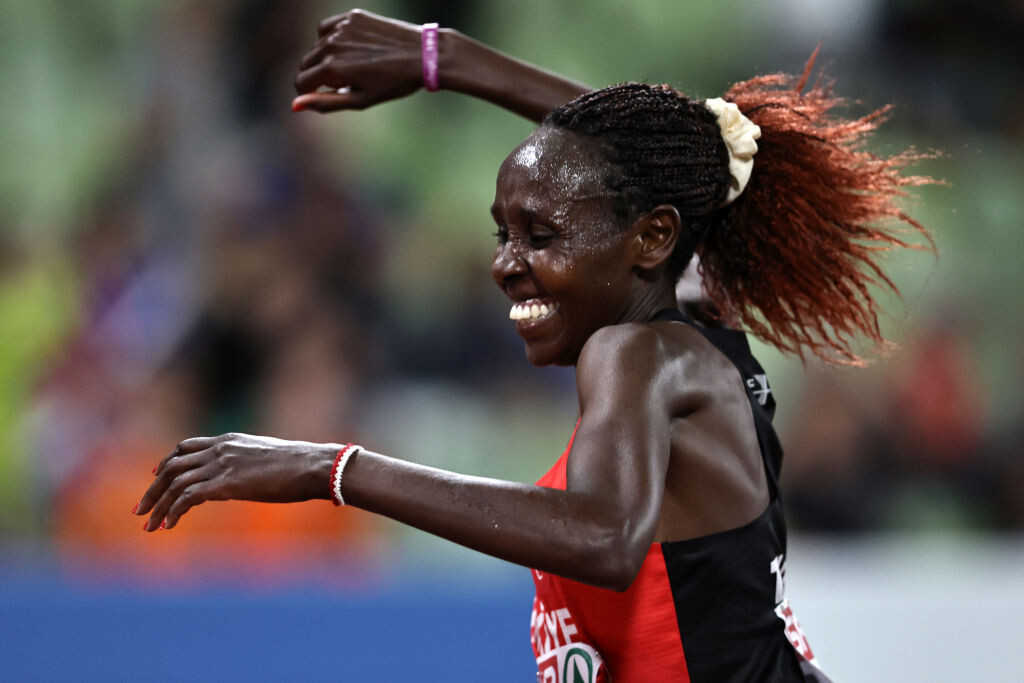
Can kicked clear with seven laps to go to win in 30:32.57.
"I'm pleased. I'm obviously disappointed, I would have loved to become European champion tonight - but tired, tired legs," McColgan told BBC Sport.
A fortnight of soaring glories continued for Eilish McColgan as she fought off her extreme post Commonwealth Games fatigue, and the attentions of a high-class field, to claim a brilliant European 10,000m silver in Munich. The 31-year-old had been so weary before this race that she had spent the day in a deep slumber. Yet fuelled by caffeine and a desire for her third medal in 12 days, she produced another performance of immense grit and steel.
In blustery conditions, McColgan applied the template that had served her so well in Birmingham, pushing to the front early and applying a cobra-like squeeze for lap after painful lap. But this time the Kenyan-born Turkish athlete Yasemin Can proved to have a powerful antidote.
With seven laps remaining Can made a decisive move, breaking away before coming home the winner. But McColgan had enough in the tank to beat Israel’s Lonah Chemtai Salpeter for silver.

“I felt very tired all this week,” McColgan admitted afterwards. “I hadn’t slept for several nights after the 10,000m in Birmingham and then I had to do it again in the 5,000m. And then all the media the following day when you’re up at the crack of dawn and on your feet all day – I’m not used to that.
“All I did today was sleep. My roommate just thought I was dead. And even though the housekeeper came in, I didn’t even hear it. I was just totally knocked out.”
However McColgan still packed a punch when it mattered. After a sedate opening kilometre, she decided enough was enough and kicked on. Soon the field was strung out and screaming. With 18 of the 25 laps remaining, only four athletes were left in contention. And while gold ultimately proved beyond her, this was another impressive performance.
“I didn’t want a last kilometre burn-up,” McColgan said. “But when the pace went up, I just didn’t quite have that zip. But it was probably to be expected. I’m not a superhuman and I have to respect that my legs were going to be tired.
“And I knew it was going to be tough with Can. I knew she was the one to beat tonight and she just was super strong. I couldn’t stay with her.”
Fellow Britons Samantha Harrison and Jessica Judd finished sixth and 10th respectively.
McColgan followed in the footsteps of her mother Liz - Commonwealth 10,000m champion in both 1986 and 1990 - as she recorded the biggest win of her career on 4 August.
In a hugely impressive season, McColgan also broke the European 10km, British half-marathon and Scottish 10,000m records earlier this year.
Though illness and injury hindered her World Championships medal aspirations in July, the 2018 European 5,000m silver medallist has returned to form emphatically - delivering one of the key moments of Birmingham 2022 as she out-kicked Kenyan Irene Cheptai in front of a packed Alexander Stadium.
In Munich's Olympia stadion, McColgan took it upon herself to increase the pace after a relaxed opening kilometre and by halfway only Can, defending champion Salpeter and Germany's Konstanze Klosterhalfen were able to remain in touch.
But Can, champion in 2016, made her stunning bid for gold with over a quarter of the race remaining, surging away from the competition to leave McColgan and Salpeter to chase.
While they could not close the gap, McColgan was able to move clear of Salpeter on the final lap, finishing in 30:41.05.
(08/15/2022) ⚡AMPEuropean Athletics Champioships Munich 2022
European Championships Munich 2022 will be the biggest sports event in Germany since the 1972 Summer Olympics. From 15-21 August 2022, European sport will be united as its best athletes compete for the highest accolade of their sport on the continent – the title of ‘European Champion’. The second edition of the European Championships will feature nine Olympic sports:Athletics, Beach...
more...Richard Ringer and Aleksandra Lisowska take marathon thrillers
There was joy for the hosts in a dramatic finish to the men’s marathon on day one of the 2022 European Athletics Championships in Munich on Monday (15 August).
Israel's Maru Teferi looked to have a decisive lead with 200m to go, but Germany's Richard Ringer - a bronze medallist over 5000m in 2016 - showed that track speed to surge into the lead and take gold in a time of 2:10.21.

A stunned Teferi came home second ahead of fellow Ethiopian-born teammate Gashau Ayale.
Earlier, Aleksandra Lisowska took the first gold of the competition in the women's marathon.
The Pole crossed the line in 2:28:36, six seconds ahead of Matea Parlov Kostro of Croatia with Dutch runner Nienke Brinkman just denying home favourite Miriam Dattke the bronze.
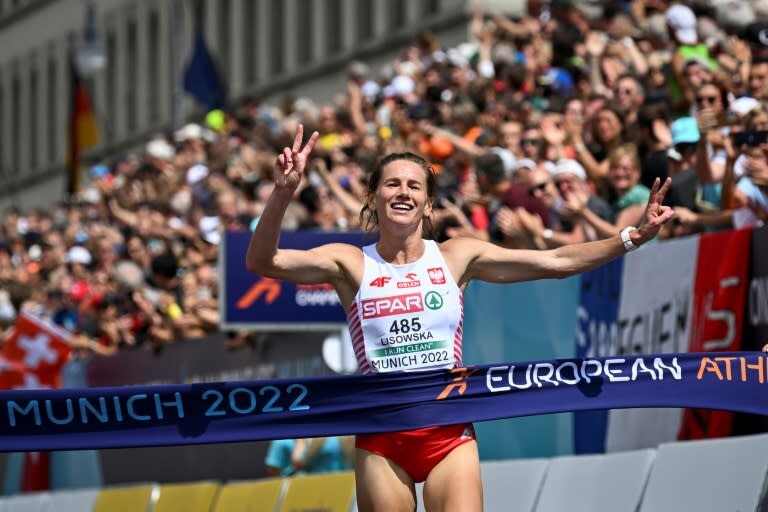
Teferi appeared to have the race at his mercy with German Amanal Petros well placed for silver.
But it was all change in the home stretch as Ringer, who was 26th in the Tokyo 2020 marathon last year, sprinted to victory from the two Israelis with Petros finishing fourth.
The women’s was wide open until the last 5km when Dattke, in just her second marathon having made her debut in Seville in February, injected pace and whittled the lead group down to eight runners.
But Lisowska, 35th in the Olympic marathon last year, made an attack of her own and came clear to secure her first major career triumph.
Parlov Kostro took silver with Dattke just missing out on the medals behind Brinkman.
(08/15/2022) ⚡AMP
by Evelyn Watta
European Athletics Champioships Munich 2022
European Championships Munich 2022 will be the biggest sports event in Germany since the 1972 Summer Olympics. From 15-21 August 2022, European sport will be united as its best athletes compete for the highest accolade of their sport on the continent – the title of ‘European Champion’. The second edition of the European Championships will feature nine Olympic sports:Athletics, Beach...
more...Olympic 100m champion Marcell Jacobs given the green light to chase the European 100m title in Munich 2022
The presence on the final entry-list of the Olympic 100m champion Marcell Jacobs adds a huge and intriguing element to the sprints at the Munich 2022 European Athletics Championships from 15-21 August, part of the wider multisport European Championships.
The 27-year-old Italian was a surprise winner at the Tokyo 2020 Olympic Games in a European record of 9.80, although his win over 60m at the European Athletics Indoor Championships earlier in the year indicated his rising potential having started his career primarily as a long jumper.
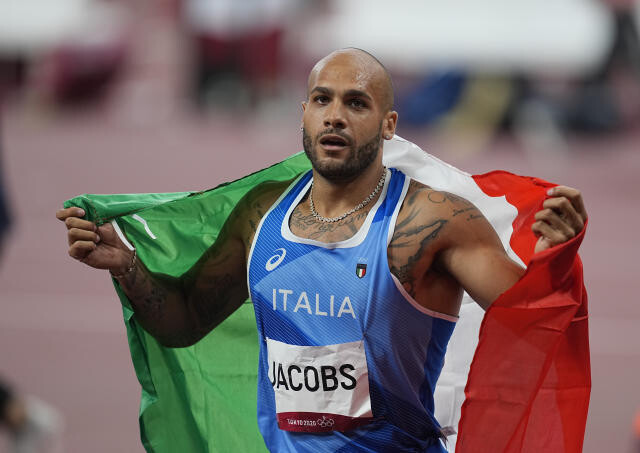
In March this year he beat the defending world indoor champion Christian Coleman to the world indoor 60m title in Belgrade but Jacobs’ outdoor season has been undermined so far by illness and muscle problems which forced him to scratch from the semifinals at the World Athletics Championships in Oregon.
It will be a huge feature of the Munich 2022 athletics programme if he can toe the line in the 1972 Olympic stadium – and it will be fascinating to see what degree of fitness he has been able to reclaim.
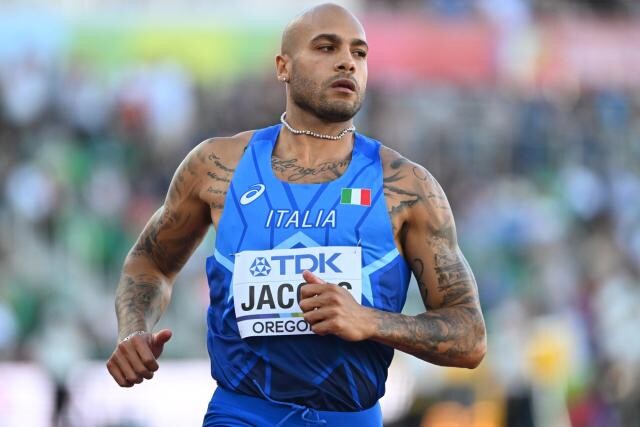
On the eve of the championships, Jacobs’ coach Paolo Camossi was optimistic about his prospects in the Munich Olympic Stadium next week. "He's running free, he's having fun, the workouts are promising. If we are here in Munich it is because he is fine and can compete…Marcell is the Olympic gold medalist and he is here to win, but it is not a race to be taken lightly," said Camossi as quoted by FIDAL.
Among his prospective rivals include Great Britain’s Zharnel Hughes who stands ready to defend the 100m title he won in Berlin four years ago in a championship record of 9.95.
Hughes had an ultimately frustrating time at last summer’s Olympics, false-starting in the individual 100m final and then seeing the 4x100m silver-medal winning performance to which he had contributed annulled because of a positive doping test for team-mate CJ Ujah.
Last week he indicated he is in fine racing form as he won Commonwealth silver in the 200m in Birmingham and helped England win 4x100m gold.
While Jacobs won the Olympic title in 9.80, he has only run 10.04 this year although he did open his season with a marginally wind-aided 9.99. Hughes is second fastest this season with 9.97 but top spot goes to his enigmatic fellow Briton Reece Prescod, who ran 9.93 this season at the Golden Spike meeting in Ostrava – into a significant headwind.
France’s Meba-Mickael Zeze is the third sub-10 second performer this season with 9.99 and will be in medal contention along with home sprinter Lucas Ansah-Peprah, who has clocked 10.04 this season.
And it doesn’t do to rule out the experienced French performer Jimmy Vicaut, who has run 10.10 this year but has a best of 9.86 - the former European record which Jacobs surpassed when he blazed to the Olympic title in Tokyo last summer.
A clash of youth and experience in the 200m
Fresh from a medal at the Commonwealth Games Hughes will also fancy his medal chances in the 200m, where his British teammate Nethaneel Mitchell-Blake, silver medalist four years ago, is also entered.
Turkey’s defending champion Ramil Guliyev, who has a best of 19.76 from the 2018 European Athletics Championships where he came within 0.04 of Pietro Mennea’s long-standing European record, has run 20.21 this year.
Zeze will also double up, and is looking good for a podium place given his 19.97 personal best this season.
But the most intriguing presence will be that of 18-year-old Israeli Blessing Afrifah, who won the world U20 title in Cali in a European U20 record of 19.96 - to surpass Guliyev’s previous mark of 20.04 - and in so doing beat Botswana’s hugely favoured Letsile Tebogo, who had earlier won the 100m title in a world U20 record of 9.91 despite showboating over the final 30 meters.
Afrifah was born in Tel Aviv and raised in Israel to parents from Ghana - his father came to Israel as an employee of the Ghanaian consulate – and was granted permanent residence in 2010.
Will this hugely talented runner be able to adapt to the pressures and rigors of a senior international competition less than two weeks after his record-breaking exploits in Cali? It will be fascinating to see.
Also in the 200m mix will be a sprinter who brought home the baton for a historic 4x100m victory at last year’s Tokyo 2020 Games - Italy’s Filippo Tortu - who has run a personal best of 20.10 this season and harbors aspirations of broaching the 20 second-barrier for the first time.
Jacobs and Tortu are also named in an Italian 4x100m relay squad that could produce another historic performance in Munich although a squad - admittedly devoid of Jacobs who was injured - didn’t make it through the heats at the World Athletics Championships.
Reigning champions Great Britain, France, hosts Germany and Turkey will all offer strong opposition along with surprise Tokyo 2020 Olympic finalists Denmark.
(08/15/2022) ⚡AMPEuropean Athletics Champioships Munich 2022
European Championships Munich 2022 will be the biggest sports event in Germany since the 1972 Summer Olympics. From 15-21 August 2022, European sport will be united as its best athletes compete for the highest accolade of their sport on the continent – the title of ‘European Champion’. The second edition of the European Championships will feature nine Olympic sports:Athletics, Beach...
more...Trail or Treadmill - The Pros and Cons
Few things can compete with running outside, but there is another side to running on the treadmill.
Trail or treadmill: which one provides the best workout? The debate has been around since treadmills came onto the scene in the 1960s. There are arguments for and against each one of them, and much of it is down to personal preference, as well as the goal you are trying to achieve via each type of workout. There are genuine advantages and disadvantages for both, as we shall see.
Distractions and Entertainment
It may shock some of our readers, but for some, perhaps many people, running can be either something that has to be endured through gritted teeth, aching limbs and burning lungs, while for others it is simply boring.
Treadmill
Some treadmills come ready equipped with a TV, but even if yours doesn’t there are plenty of opportunities to take your mind off what your legs are doing, via your own phone or tablet. Catch up on the latest episodes of Netflix series like Stranger Things, browse sites like Unibet for the latest Premier League Odds with all the different modalities and categories, or even watch a live match if football is your thing.

Trail
Obviously watching something while running outside is out of the question, but there is nothing stopping you from listening to music or a podcast. That said, however, one of the huge advantages of running in the great outdoors is exactly that: the great outdoors. Who needs anything else? Admittedly, not everyone is lucky enough to have incredible scenery in their backyard, but for those who do, or even a path with some greenery, there is nothing like running outside. Fresh air in your lungs (hopefully), scenery that changes day to day, month to month, season to season. There may even be wildlife. Netflix or live Premier League can hardly compete with that.
The Surface
A treadmill provides a safe, secure and predictable environment for a workout
Treadmill
It was often assumed that the springiness of a treadmill was kinder on knees and ankles than the hard terrain you often encounter when running outdoors. That is questionable, and because of the subtle change in running style when on a treadmill, it may actually be worse for your knees. The one definite advantage of a treadmill is that the surface is even and true. There are no uneven footholes or other hazards that could cause you to fall or twist your ankle.
Trail
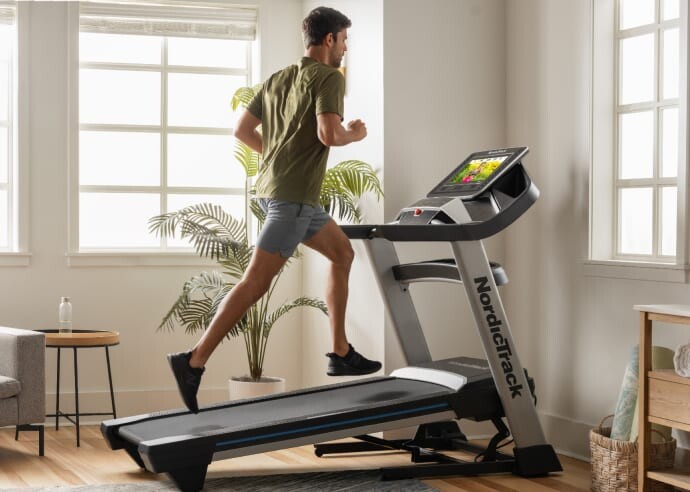
Many people don’t find running long distances on tarmac or other hard surfaces great for their joints. More injuries are sustained by those running outdoors than inside, almost certainly down to the rough terrain, something that is accentuated if the weather conditions are not ideal. Trail running does offer different types of surface, however, and a combination often provides a more varied workout.
The Actual Workout
Treadmill
Though there are limitations which we will cover below, the beauty of a treadmill is that you can program them with different workouts. You can choose the incline (as long as it is up), in terms of frequency and severity, something few have the chance to do with trail running. Because the surface you are running on is already moving, something that hopefully is not the case outside, you do expand a little less energy on a treadmill. Setting the treadmill to a slight incline does rectify that.
Trail
If you are using the run to train for an event, then running outside is by far the best way, as opposed to simply putting the miles into your legs. Outside gives you the chance to run on uneven surfaces, around bends and downhill, all of which use different muscles, and are not available to those in a gym.
Safety & Convenience
Many people either don’t have somewhere to run outside, or prefer not to do it, especially on their own. The gym treadmill provides a safe environment with a guaranteed climate. If you do suffer an injury during the run, it is far more convenient to simply press stop on the treadmill than limp the two miles back to the start.
(08/15/2022) ⚡AMPSharpen your speed, stride, and stamina without burning out, try these workouts to maintain super-fast legs with minimal fatigue
Quick legs, fast turnover, and the stamina to keep those abilities flowing over distance are the goals of every runner. Try these three types of workouts to maintain those much-desired skills year-round, without overtraining.
Intense speed-work is an effective way to increase V02 max, but runners often take a break from those super-speed sessions during the winter months.
Too much hard, fast running can lead to a plateau in improvement or even overtraining syndrome.
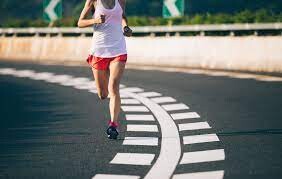
We have three types of workouts that will help you maintain quick legs without becoming burnt out.
Strides (also called leg speed and form drills)
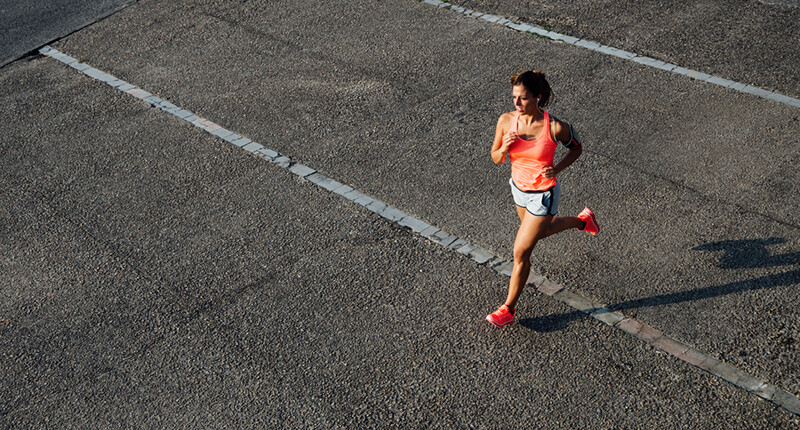
Strides can be added to your already-planned easy runs several times a week. They are a great way to run fast but avoid building lactic acid, or creating a lot of residual fatigue. If you feel out of breath during these, shorten them and reduce repeats until you’ve gained strength. Strides are perfect for beginners to experienced athletes.
Workout: 10 to 5 x of 15 seconds at a fast but controlled effort, with full recovery (45 to 90 seconds) very easy running
These can be added into the middle or end of an easy run, or tacked on to the end of your weekly long run.
Tweener repeats
Renowned coach Greg McMillan explains that ‘tweeners’ are repeats done slower than V02 max pace, but faster than your lactate threshold. The goal of these intervals is to use shorter repetitions at less-than-top speed to get the same benefits of longer speedwork sessions without the fatigue.
McMillan suggests adding recovery time if you start to breathe hard, and keeping the workouts based on effort or heart rate if possible, rather than pace. Athletes should start at approximately 85 to 87 per cent of heart rate max, and allow for an increase in later repetitions up to 92 per cent of heart rate max.
Too much calculating for you? Run these at a pace that’s hard but not full-out, and adjust the repetitions and distance as needed so that you aren’t feeling extremely fatigued between or after intervals.
Warmup: 10 minutes easy running
Workout: 4-6 x 800m at cruise interval pace with 200m recovery between each one
Cooldown: 10 minutes easy running
Hill sprints
Find a steep hill (eight to 12 per cent incline) or set your treadmill incline. These short sprints are very intense, but over quickly enough so that you shouldn’t feel out of breath or like you’re struggling to run fast. If you’re finding it hard to breathe, shorten them until you can sprint continuously without feeling winded.
Warmup: 20 minutes easy running
Workout: 10 x 10 seconds uphill sprinting, recovering with two to three minutes easy running in between each hill sprint
Cooldown: 10 minutes easy running
As always, make sure the day following a speedy one is easy running or recovery, and hydrate well.
(08/15/2022) ⚡AMPby Running Magazine
Ultramarathon man Dean Karnazes attacked by coyote during 150-mile race
Acclaimed ultrarunner and author Dean Karnazes, 59, can boast some of the wildest accomplishments in endurance sports, but a coyote attack mid-race was a first for him.
The California-based athlete has raced (and won) some of the most legendary ultras in the world, run to the South Pole, and completed 50 marathons in 50 consecutive days in 50 different states. He’s even been attacked by a shark–but never a coyote. The athlete shared his experience mid-race on Instagram on Friday, calling it “terrifying.”

Karnazes was running Headlands 150-mile Endurance Run, a race held in Sausalito, Cali. It’s an event he has returned to over the years of his lengthy career. Headlands Endurance Run hosts everything from a marathon distance trail-race to the 150-miler.
Prior to the animal attack, Karnazes shared a video to Instagram of the night lights along the Golden Gate Strait and San Francisco Bay area. “I’m running the Headlands 150-mile foot-race in Marin County, and if you’re wondering why anyone would do such a thing, maybe this view this will give you part of the answer,” Karnazes said.
Shortly afterward, a bloodied and clearly shocked Karnazes shared his coyote debacle. “I was attacked by a coyote, that was a first,” Karnazes said. “It knocked me over; I was running with poles, thankfully, and I whacked it and it ran away.”
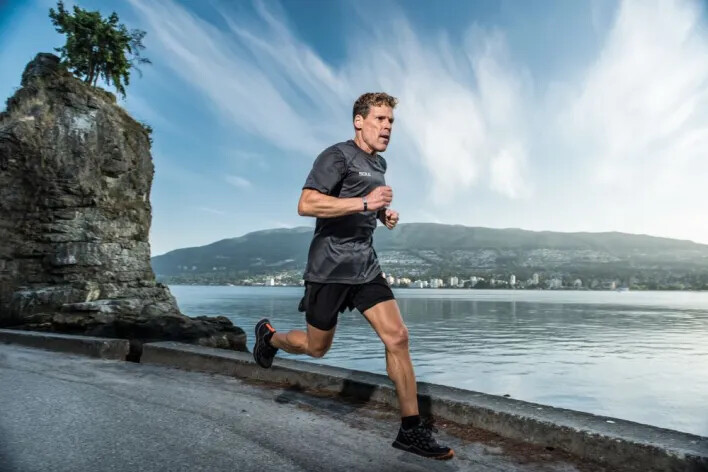
Karnazes said he wasn’t sure what he was going to do, but that he thought he had better keep going or “it might come back for me.”
Karnazes posted to his Instagram story a few hours later explaining that the coyote won the battle. With no result for his race on Ultrasignup, it appears the accomplished athlete may have had to drop out. If there’s ever a valid excuse for a DNF, a coyote attack is undoubtedly it.
(08/15/2022) ⚡AMPby Keeley Milne
Elite Runners and Coaches Bust Six Major Training Myths
Let's be honest. There's a ton of bad training advice out there. Heck, there's just unchecked advice flung here and there and everywhere these days, on all topics of living and being.
So how do you best navigate these thickets of often dubious recommendations? How do you validate what's solid, and what's not? At Trail Runner, we turn to the experts. We turn to well-respected coaches and the most consistent and high-performing elites in the business. We turn to science.


From bro science to outdated training methods, here are eight stubborn training myths that just won't go away, and some proactive solutions to keep you tacking in the right direction.
Myth #1: Always Run High Mileage
It's tempting to think the only way to improve is to run more and more and to keep piling on the miles. But, high-volume training can have diminishing returns for many athletes.
"Running more miles isn't always the answer and comes with a laundry list of disclaimers: injury, sickness, burnout. Instead of adding more miles, fold in a form of cross-training. This helps keep training fresh, the body happy, and it's still stoking that aerobic engine," says coach and elite mountain runner Tabor Hemming.
However, it's also not never the answer. Less isn't always more.
"Adapting over many training cycles usually requires alterations in stress across years, so the best volume an athlete can do is often the least they can do while still adapting consistently, as long the total is within the general range that is needed to spur high-performance in their events for their physiology and load capacity," says coach and Trail Runner columnist David Roche.
"The long-term approach to volume increases leaves room for growth, prevents stagnation, and limits breakdown that can stop an athlete in their tracks long before they figure out where their true ceiling is."
To advance and adapt, you do, in fact, need additional training stress as you progress. Just don't jump into triple-digit miles right off the bat.
Remember that running is different from other sports like cycling because repeated impact leaves athletes more injury-prone. Build up your volume over time, and back off (here's a handy guide) if you're feeling excessively fatigued or if soft tissue injuries occur. Myth #2: Always Give 110%
Elite mountain runner and coach Mason Coppi was hard on himself, always pushing his body to the limit in training and racing.
"No matter what races I won or what times I ran, it was never enough. In my mind, there was always something I could have done differently. I could have always just given a little more effort. Every race and workout I ran I tried to give 110% effort. But here's the thing about 110% effort: it doesn't exist," says Coppi.
Coppi tried to just work harder, to effort more in an attempt to reach his potential. But his performance in races declined steadily as Coppi ignored the signs his body was giving him to loosen up and rest. The more tired he felt, the harder he tried. The harder he tried, the more tired he felt. That feedback loop led to burnout, and Coppi is now taking a temporary step back from running. "You can only give what you have on that day, nothing more," says Coppi. Now, he's working to destigmatize the concept of taking easy days really easy. He works with other runners to help them understand that mental toughness is learning to listen to your body, to assess what your mental and physical needs are on a particular day and respond accordingly.
"Once I realized my best on a given day was my best, a weight was lifted off me," says Coppi. "I knew my all-out effort was enough whether I was limited by something physical or mental."
Now, he no longer chases PRs and fast times on every run and instead works on flexing his adaptability muscle in training. To quote Coach Ted Lasso, "I want 60% effort, 1000% of the time."
Consistency beats intensity when it comes to reaching your athletic potential, and enjoying the process.
Myth #3: Don't Worry About Speedwork
Speedwork is a trail runner's best friend.
"It's a myth that you have to train for ultras very slow, via many, many miles. High-intensity work is an ultrarunner's friend and diminishes the need to run 100+ mile weeks," says Jessica Riojas Schnier of Smiles and Miles Coaching. Use high and moderate-intensity workouts to train smarter and more efficiently. You'll reduce your risk of injury and burnout if you are more efficient with your training, which then makes us happier runners, for longer!"
Start by integrating 15-30 second strides at the fastest pace you can go without straining with one to two minutes of easy, recovery-effort running in between. Do four to eight sets, two to three times a week throughout your runs.
Then, you can start integrating more structured workouts into your training. We recommend beginners start with these looser, more relaxed trail workouts. More advanced runners can skip right to these race-oriented workouts, or even get into some fun, combo workouts.
Don't be afraid of a little speedwork. It'll help you train smarter, faster - and maybe you'll even have more fun. Myth #4: You Must Move to Boulder
While many top trail runners live in mountain Meccas like Boulder or Flagstaff, there are plenty of folks who live and train far from the Rocky Mountains and still compete at a high level. Take Ohio-native Arlen Glick, for example, who finished third at this year's Western States Endurance Run.
"There is still a myth that if you do not live near mountains, you can't do well or complete mountainous races. I have seen numerous athletes repeatedly train in the prairies (flat flat flat lands) of Canada and crush some of the most technical trails and races with incredible vertical gain and loss," says coach Jenny Quilty.
There's plenty you can do to prepare for steep races, even if you don't live in Chamonix. Functional leg strength, like Mountain Legs, can help build strength and resilience through specific movement patterns. Improving your running economy through speedwork and hill strides is also key for mountain adventures and competition.
Also, don't fear the dread-mill. Treadmills can help you practice power hiking, and just a few concentrated sessions are enough for some mega-mountain adaptations. Uphill treadhill doubles are also a great way of getting some vert in, all while reducing impact. Don't overlook the eccentric strength required to rock downhills, though, as many runners' legs are more affected by descents than the climbing.
Myth #5: Run a Metric-Ton of Vert
While you'll want to do some vert-specific work to get better at climbing, overdoing it can lead to slow-downs and stagnation.
"You don't have to run a ton of vert to get better at climbing," says Nike pro athlete Matt Daniels. "I have seen with many athletes that the ones who have developed more speed and better running economy without hundreds of miles in the mountains are the ones who end up handling the vert better on race day. There has to be a fine balance between vert-heavy runs and economy build-in training to be a good climber on race day."
Work on improving overall fitness without overemphasizing vert. According to coach and columnist David Roche, "The best climber is usually the best runner with just enough specific training on climbs." Focus on improving your running in training, while mixing in strength work (like mountain legs) and incorporating more vert as you get closer to your goal event.
Try to get out on trails with race-similar terrain on the weekends leading up to your event, and mix in some mid-week vert during workouts and easy runs, too. Try to run the downhills with intention to get your legs ready for the muscle breakdown they'll incur on race day.
Myth #6: Don't Race Until Perfectly Trained
Curious about diving into your first trail race? Don't wait!
"It's a myth that you have to already be an accomplished trail runner to register for a trail race. Most trail races are not that much different than road races (except if you're racing in the mountains, of course) in terms of their footing," says Denver-based Strength Running Coach Jason Fitzgerald. "Get a good pair of trail running shoes, get comfortable on all kinds of surfaces, and you'll have a blast at your first trail race!"
If you're curious about jumping into a trail race, reaching out to the race director can help determine if you're ready for and interested in a particular event. Researching past participants' race reports can help, too. (Remember to always take race reports with a grain of salt, since it's just one person's experience and perspective.) It doesn't hurt to have a friend sign up for the event with you for moral support and training accountability.
Our advice? Start small. Find an event that's short enough that it sounds fun, rather than a huge stretch for your first race.
Also, make sure you have a solid, consistent base of miles and you're not jumping into something that's hugely above your pay grade. We recommend at least six hours a week of training before jumping into a 50K, and closer to nine hours a week when you're looking at the 50-mile distances and up. If you're not sure where to start, check out our full catalog of training plans here.
(08/15/2022) ⚡AMPby Trail Runner Magazine
The Dos and Don'ts of Pacing and Crewing an Ultra
Although trail running - especially ultramarathons - is often framed as a solo sport, ask any veteran of the 50-mile-and-above distances and they will tell you it most certainly is not.
There are dozens of people who help runners get from the start line to the finish, sometimes hundreds of miles later. Long before the race, those folks might look like physical therapists, coaches, nutritionists, and others. But during a race, the two most important types of people upon whom a runner depends: crew and their pacers.
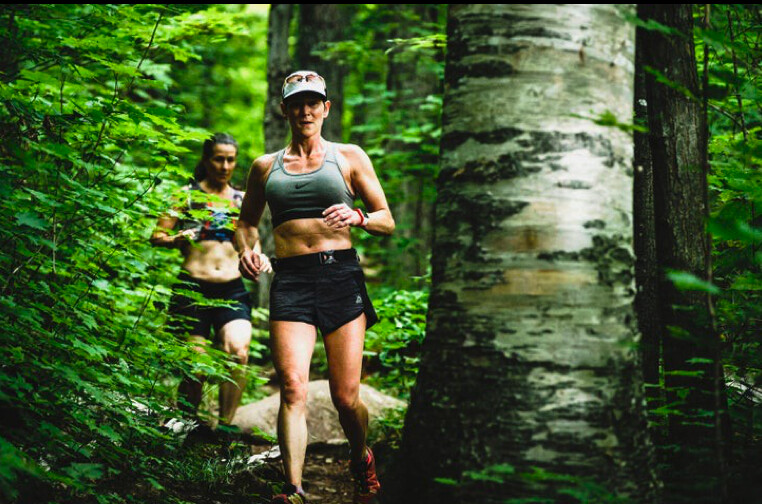

Each role comes with challenges and requires preparation to best help the athlete.
Crewing
Crew members are the pit crew of ultrarunning. They stand ready at aid stations and checkpoints prepared to dole out food, water, basic first aid, dry socks, and new shoes. Maybe even a quick massage for tight muscles. Crew members must work efficiently as a unit to help their runner move through aid stations and get the support they need in a timely fashion.
Boise, Idaho-based Alexandria Otter had already crewed both a 50K and 100-miler before completing her first ultramarathon. Now, Otter primarily crews for her husband, noting they have their method "dialed in."
"I have individual plastic bags packed for each aid station to be as efficient as possible," said Otter. "When my husband comes into the aid station, he drops his pack, I unload all the garbage in his pockets, put one of those bags into his pack, and he heads out."
Before the race, crew members are given an info sheet that lists all the aid stations, a range of ETAs based on performance, current mileage, and elevation change.
Crew members should arrive before the race starts and be ready and willing to help their athlete from the very first moments of their day. That might mean providing or taking clothing layers, getting any pre-race water or nutrition, or even just being a smiling face among the nervous energy.
It's important that crew members arrive at each aid station as early as possible. The sooner a crew arrives at an aid station, the better the parking and spots to set up camp, and the less anxiety there will be among the crew.
Prime parking spots at aid stations are highly coveted because they allow for ease of access to supplies for your runner, as well as a convenient place for you to rest between traveling to the next aid station. A good parking spot also makes it easy to load up your supplies and head to the next station.
Arriving early at each aid station also gives you the opportunity to set up your runner's supplies in an optimal location, as close to the trail as is permitted. The last thing a runner wants, miles into their race, is to weave through others' setups to try to find their crew.
Crew members will often help each other out when it comes to setting up aid stations. It's typically a family atmosphere, not one of icy aloofness.
It's not uncommon to find crew members for a variety of runners helping each other set up chairs and tables, fill up water bottles, and lay out food for each runner. Likewise, the spirit around most aid stations is one of plenty. If a crew member forgot something like sunscreen, Bandaids, or salt tabs, most other crews will be more than happy to share their supplies.
Once the race is underway, crews may end up with a lot of time on their hands as runners traverse the course in between aid stations. And sometimes, the runner's plan doesn't shake out the way they hope it will.
"When I'm in between servicing our aid stations, I'll make sure to feed myself, find a bathroom; sometimes I'll even go for a hike or run from the aid station," said Otter. "I've met a lot of awesome people - and dogs! - just by hanging out near the aid stations, too."
The hardest part usually is post-race, when the runner, pacers, and crew are tired from a day(s) of getting the athlete from point A to point B. But someone still needs to collect the food and supplies from each aid station. Staying organized by managing the athlete's equipment in drop bags at each aid station makes things much easier when it's time to depart from each station or from the race as a whole.
Alyssa Godesky holds the Fastest Known Time (FKT) for the Long Trail in Vermont, the High Peaks in Adirondacks, and the High Peaks in New Hampshire. For each of her FKT attempts, she relied heavily on a stellar crew.
"The best crews are made up of people who know how to be both leaders and good teammates," said Godesky. "So many things can shift rapidly during a race or FKT and you need to trust your crew will adjust."
For example, maybe one of the crew's cars will break down and the other crew members will need to figure out a different way to get to the next aid station. Or maybe the athlete is taking longer - or going faster - than previously expected and aid station arrival times have changed. A crew needs to be flexible and ready to change plans at a moment's notice.
The most important thing a crew can have, according to Godesky? Endless optimism.
There will be points during an ultramarathon where a runner may lose their motivation to continue the race. The crew needs to remain relentlessly positive and solutions-oriented to remind the athlete of their "why" and get them excited to head back on the trail and keep going.
"If pacers and crew members were a family," said Godesky. "The crew members would definitely be the parents - nurturing, organized, and always ready to help."
Pacing
Pacers are an ultrarunner's eyes, ears, and sanity. Pacers generally come in in the later stages of a race when a runner may be too exhausted (or too loopy) to safely continue on their own. For 50 milers, that might be around the 30- or 35-mile mark. For 100-miles or longer, pacers may be required from the 50-mile mark on. They're also helpful when a runner is gunning for a certain time goal and may be struggling to hold that pace on their own. A pacer must be patient, encouraging, and be able to run, walk or shuffle alongside their athlete. It's not unheard of for pacers to be dropped by an athlete that's having the race of their life!
Ally Gregory got her start in ultras by volunteering more than 10 years ago - she had a firsthand view of trail and ultrarunning before she even ran a race. Today, the Chicago-based ultrarunner is a race director for trail events in Illinois and frequently serves as a pacer for her friends.
"The purpose of a pacer is to provide the runner with mental support and to literally keep them moving forward," said Gregory. "This entails knowing the race course - the route, elevation, distance between aid stations - monitoring the runner's well-being, and knowing when to push the runner and when to let them rest."
Pacing is like being a therapist, coach, and friend all wrapped up in one. It is not an easy job, especially during races that are 100 miles or longer. Gregory noted that a key part of being a top-notch pacer is understanding your athlete's communication style, their expectations and motivations for the race they're running, and most importantly, how to make them laugh, even at mile 80.
Godesky thinks of her requirements for pacers in two parts: physical traits and mental traits.
"I know I'm going to be in the best shape of my life when I attempt an FKT," said Godesky. "I need my pacer to not only be able to match my speed, but do so while potentially carrying my equipment, keeping track of nutrition and hydration schedules, and pushing me to go faster if necessary."
The most critical part of pacing is being able to match your athlete's fitness. You need to be able to navigate the pacing segment (which could be 20+ miles) without slowing your athlete. On the flipside, if your athlete is having a tough day, be prepared to shuffle or walk alongside your athlete, too. It helps to have previous trail running experience and confidence in your mental and physical tenacity. As tempting as it might be to immediately say "yes!" to pacing someone, it's OK to ask to give it some thought, too.
From a mental characteristics perspective, Godesky looks for pacers who have high levels of self-awareness and emotional intelligence and who are direct, concise communicators. These traits tend to yield folks who know when to push Godesky to press on and when to respect if she needs to slow up or pause.
"Basically, I look for people I can get along with for many hours in the middle of the woods," joked Godesky.
Not everyone you would love to have as a pacer should be a pacer. Taking into account both the physical and mental strengths of your pacers is paramount over asking close friends or family to be part of your pacing team.
Unlike crewing, pacing does not require you to be at the race start, and in fact, it's best to get the rest you need and wait to show up until it's time to roll. Pacers are called upon later in a race, so do your part to get enough rest, nutrition, and hydration in the hours before meeting up with your athlete.
Ultrarunning and trail running are solo sports with a big asterisk next to solo. There are loads of people who help a runner reach the start and end lines of not just a race, but their journey leading up to the race, as well.
The best way to learn about crewing and pacing is to immerse yourself in an ultramarathon or local trail race. Aside from pacers and crew members, trail races also need volunteers to assist with everything from aid stations to race day check in. Signing up to volunteer can give you a first-hand look at the ups and downs each runner faces across the race and how pacers and crew members react to best support their athlete.
"There's no better way to learn about the sport than jumping into the ultrarunning community," said Godesky. "Whether that's volunteering at a race, joining a local run club, or taking the plunge and running a race yourself, you will learn how to best pace and crew by being open to learning from experience."
Pacing and crewing are skill sets in and of themselves. Not being afraid to ask questions, volunteer, and hone your skills by joining the ultra community are key to becoming an invaluable pacer and crew member. You can find a run club (trail and/or road) by finding them through Facebook groups, asking your local run shop, or searching for nearby trail races to help you get started in the ultrarunning community.
(08/14/2022) ⚡AMPby Trail Runner Magazine
VO2 Max Output As A High-Performance, Anti-Aging Superweapon
This article is purely theoretical. Some readers will think that the theory is obvious on its face, and others will think that it's wrong. The joy of talking about training theory at the intersection of science and anecdote is that there are too many physiological metrics to track, and too many variable responses to interventions, so the resulting conclusions fall somewhere on the spectrum between fundamental truth and biased bullshit. Throughout, I'll try to check my biases and acknowledge the unknowns.
You know I'm nervous about writing an article when the first paragraph is undercutting myself with disclaimers. To be fully real with you: I am unsure on this one.
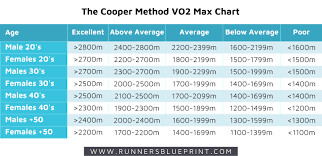
This article tries to articulate an unexpected observation that now forms a cornerstone of my coaching approach, but I have too much self-doubt to ignore my biases. It's like looking at a diagram of constellations in the night sky. The diagram might say: "This is the mighty hunter, pursuing the courageous bear."
So remember, as I try to break this down, I'm describing a scene with a mighty hunter, but I'm painfully aware it might just be dots and a phallus.
Here it is, distilled down to 3 sentences:
Output at VO2 max while climbing (measured via grade-adjusted pace) may have a high predictive value for athlete progression and regression over time, particularly with age.
The metric likely is a proxy variable for limitations of mechanical output that are faced by some athletes from the start of their running journeys, and confronted by all athletes with age.
Constant reinforcement of the metric may improve performance at all effort levels, including long ultras, and can seem to reverse the athletic decline process in some cases.
That's it. To paraphrase The Lion King: Simba, let me tell you something that my father told me. Look at the stars. YOU SEE WHATEVER YOU WANT TO SEE.
Observations From Athlete Training
Let's have some fun with training theory, reverse-engineering why I think this conclusion is significant and may be overlooked. When my co-coach/wife Megan and I started coaching (we talk about this topic more on episode 114 of our podcast), we began as acolytes to coaches like Renato Canova and Jack Daniels who excelled with Olympic-level athletes on the road and track.
We added some wrinkles here and there based on data we saw along the way, which seemed to especially manifest themselves with athletes that might not have Olympic-level VO2 maxes, whether due to genetics or age (VO2 max measures peak oxygen utilization during exercise, has a strong genetic component, declines with age, and is not highly trainable). You have probably seen me write about a lot of those wrinkles: plenty of fast strides, a higher proportion of short yet controlled intervals, and the heavy use of hill intervals year-round.
But Megan and I both kept hitting the same stumbling block: athletes over age 40 just didn't respond as well as we would like.
So we tried something new. With sub-ultra trail runner Mark Tatum and a few other athletes, we moved almost every workout into the hills, with an astounding number of power hill strides, and at least one session most weeks with short hill intervals. Mark and some others had breakthroughs, seemingly giving a big middle finger to the aging process. For Mark, a few years of training later, it led to an overall win at the Dipsea Race.
That made sense with aging athletes. Hills reduce impact forces and may increase muscle recruitment/mechanical demand (2017 review article in Sports Medicine), and short intervals may counteract natural VO2 max reductions, so they are great for the aging athlete. I've written about that before, as have others. It was nothing new, although maybe the approach was more committed to the bit.
But then something fascinating happened. A few younger athletes that we coached also seemed to have issues where traditional speedwork didn't lead to the expected adaptations. Maybe it was repeated injury cycles without clear explanations, or maybe it was just an unexplained performance reduction. So we tried a similar intervention. While results varied, the hill emphasis had a substantial effect size on results in our team, including preceding a couple national championships.
Now we were intrigued. Is it just the specificity of hills for trail running? Possibly, but we saw similar improvements in some road runners. Could it be an improvement in the VO2 max variable? That's doubtful, since there's little evidence that it can increase much in trained athletes. Lower injury rates? That likely plays a big role, but later we started to see similar results in athletes who rarely got injured. Or, to summarize: The hunter, or a random association of dots?
As we started to incorporate short hills more for all of our athletes, with all different backgrounds, we started to hone in on one primary explanation: the unique neuromuscular and biomechanical demands of mechanical output in running.
Here, mechanical output is shorthand for how aerobic processes interact with the musculoskeletal, biomechanical, and neuromuscular systems to create speed. A thorough explanation of mechanical power output is in this 2018 article in the Journal of Biomechanics, but just think of it as how each stride transmits force, rather than as conveying everything that goes with the technical term. For our purposes, effort level at VO2 max does not refer to the specific physiological measure, but is a general shorthand for high-yet-controlled outputs.
We have seen that if an athlete can improve their output around VO2 max on hills, they can counteract - even reverse - part of the athletic aging process at all distances. The reason that the short hills should lead to more broad-ranging development is that athletes accumulate lots of aerobic work over time, and those lower-level aerobic gains accumulate.
There is nothing new about this concept. For example, Norwegian training principles are so hot right now. Most of the focus is on the high volume of threshold work. But if you look closely at some of the sample weeks, you'll sometimes see a day full of short, fast hills (and that's for young, immensely talented athletes). Similar concepts were rumored to be included in the training of Jake Wightman, World Champion in the 1500 meters. Whether it's Lydiard-based systems from the 1960s and 1970s, Canova-inspired hill sprints, or hybrid approaches, once you start looking, you'll see these elements all over, even for athletes that seem to have almost no genetic or age limitations.
Possible Physiological Explanation
Okay, let's go back to first principles. VO2 max peaks at a young age, and it isn't highly trainable. So how do athletes keep getting faster if their peak oxygen intake is staying flat or declining?
The answer is that their output at VO2 max improves, usually measured as velocity at VO2 max, even as the denominator doesn't improve. The prototypical example is Paula Radcliffe (see this 2006 study in the International Journal of Sports Science & Coaching), whose VO2 max actually decreased from when she was a champion junior athlete, but her running economy (the amount of energy she used to run fast) improved by 15 percent. Those running economy improvements likely come from some mix of lower-level aerobic development leading to more efficient cellular processes of fatigue management, neuromuscular/biomechanical efficiency, and mechanical output. I'm not concerned with how much oxygen an athlete can consume, but what they do with the oxygen they have.
Running economy can be measured across multiple intensity levels. At the intense end of the spectrum, you have velocity at VO2 max (think 10ish minute effort, with variance). More toward the middle is critical velocity or velocity at lactate threshold (~30- to 60-minute effort). At the easier end of the spectrum is velocity at aerobic threshold (2-3+ hours, depending on the athlete). With age, vVO2 goes down first (often in an athlete's mid-20s), followed by vLT (30s or later), then vAeT (which can stay higher for a long time due to the aerobic component). That makes intuitive sense-athletes move up in distance with age by necessity as VO2 max and mechanical output go down, while long-term aerobic development is ongoing.
Side note: there are 10 statements in the preceding paragraphs that are controversial in exercise physiology. Sorry about that. If there's anything I learned from eating a lot of cereal as a kid, it's that if you spot them all and mail proof of purchase to General Mills, they might send a free toy!
Back to it. Our theory is that focusing too heavily on the aerobic side of the running economy equations misses out on the mechanical power side. Yes, VO2 max will decrease with time. But based on what we have seen, the mechanical output associated with VO2 max doesn't need to decrease much at all. And it can even go up very far into an athletic journey!
Mechanical Limitations
Why is that significant for an athlete competing in longer races? Think back to the experienced 60-year old athlete who progresses a bunch with short hill intervals. Their VO2 max number likely can't change much at that point of their athletic journeys, but we think that their mechanical output can. And because mechanical power is a strong performance indicator at all efforts in aging athletes, it doesn't matter that the short hills are non-specific to their race distances. It's the highest-yield stimulus for output, and it pushes back the strongest against the inertia of aging, so they get faster at everything.
If you're 50+, I think that you can take that to the bank. Focus on mechanical output/strength alongside aerobic development, and you'll be rich as hell. Now, let's dive into a more speculative investment.
The hardest logical leap is to take these principles and apply them to younger athletes. Why might they progress even when they aren't limited by mechanical output in the same way?
Our theory: they are limited in that same way, just to a less clear extent. In fact, most of us have some mechanical limitations that are semi-independent of traditional aerobic development.
Talented, elite athletes are the origin point for many training theories, and most of those athletes have few limits associated with vVO2-that's why they're elite in the first place. So they can focus more heavily on the aerobic-input components of speed, plus specific training for their events. But for most of us, mechanical power at the top-end of aerobic capacity is a limiter from when we are young, and it only gets worse with time.
That's one reason we strongly encourage athletes to eat enough, always. Running is a power sport, even if it doesn't always feel that way. And that may add another explanation of why athletes who restrict food almost never improve over time.
Theoretical Implications
Since mechanical output is the true theorized limiter, it may be better to do many of the sessions targeting it on uphills. Flat intervals are fantastic and important at times, but many athletes end up not having the biomechanical and neuromuscular efficiency to translate their aerobic ability into the same output. In our data, an athlete who is not extremely fast (in a road/track sense) will often have a faster grade-adjusted pace on a 2-minute hill interval than pace on a 2-minute flat interval, often by 20-30 seconds per mile. Combined with the higher muscular demand and lower injury risk, output around VO2 max seems to be optimized on hills.
A quick disclaimer: we could easily be confusing cause-and-effect here. Perhaps it's all driven by reduced injury rates and lower soreness levels, creating more consistency over time (or any other explanation you can think of). Going backwards from outcome to mechanism is problematic for 99 reasons, and for the strength of this theory, each and every one of them is a bitch.
But the practical takeaway is this: we have seen that if an athlete can improve their output around VO2 max on hills, they can counteract - even reverse - part of the athletic aging process at all distances. The reason that the short hills should lead to more broad-ranging development is that athletes accumulate lots of aerobic work over time, and those lower-level aerobic gains accumulate.
The aerobic system can continue to improve, but for many athletes, it runs into a ceiling that we think is often set by mechanical output. If you raise that ceiling, there can be a positive feedback cycle where improved mechanical output allows the improving aerobic system to translate to better running economy, which improves mechanical output more, and so on.
The Big Takeaway
Don't let your mechanical output be too strong of a limiter, no matter what training approach you use. For us, that involves three main elements.
First, athletes do hill strides year-round to encourage max power development. That can be as simple as 2 sessions of 4-6 by 20-30 second fast hills in the 2nd half of runs each week, or adding hill strides after a flat workout. Or it can be bigger, dedicated sessions like in the Norwegian training sample weeks. Flat strides can also work for this purpose, particularly for advanced athletes.
Second, athletes periodically do moderately hard hill intervals, as often as weekly for aging or injury-prone athletes, and as little as every 6 weeks in durable track or road athletes (with other sessions being on flat or rolling terrain). Our usual guideline is 12-20 minutes of total intervals, with each interval being 3 minutes or less with run down recovery between them. Simple go-to examples are 16-20 x 45 seconds, 8 x 90 seconds, 6 x 2 minutes, or 5 x 3 minutes, though you can get creative with it based on what's the most fun for you. Mix up the gradient, with the sweet spot being 8%, but it's cool to have fun with steeper or shallower grades, too.
Third, do strength work. We are partial to Mountain Legs and Speed Legs, but anything that improves your strength can work. Just avoid overdoing it.
And remember: this is just one element of our training theory, and our training theory is a grain of sand on the beach of training theories that are out there for free on the internet. Even for us, it interacts with hundreds of other concepts. Listen to your body and do what works for you. Ignore this if you disagree. Send all of your complaints to General Mills.
But don't accept that getting weaker is a foregone conclusion. Aging is inevitable. If you zoom out far enough, slowing down is inevitable, too. But slowing down is not inevitable tomorrow or next year. And I think there's a strong argument that it's not inevitable 5 or 10 years from now either. What do we say to
(08/14/2022) ⚡AMPby Trail Runner Magazine
Western States Endurance Run Announces This Year's Golden Ticket Races
On August 9th, 2022, the Western States Endurance Run (WSER) updated its schedule and criteria for the 2022-2023 Golden Ticket races. For the second consecutive year, the lineup will include three international races, including UTMB, and the first-ever Golden Ticket event in Asia.
The Western States Endurance Run is the U.S.'s oldest and most competitive 100-mile race and has long depended on a lottery system to modulate the number of runners on the start line. Golden Ticket events give the top two runners automatic entry into the race, allowing them to bypass the competitive lottery. In this system, 28 spots are reserved for Golden Ticket winners in WSER. If the recipient of the Golden Ticket winner already has an entry (either through the lottery or another Golden Ticket event) the ticket rolls down to the next runner without entry. All runners who finish in the top ten at Western States also get automatic entry the next year.

Like last year, the list includes Ultra Trail Mont Blanc (France, Italy and Switzerland) and Tarawera by UTMB (New Zealand). However, the Endurance Trail des Templiers (France) has been replaced with the Doi Inthanon Thailand by UTMB 100M. This is the second year that international races have been Golden Ticket events, and the first year that features an event in Asia, which spreads out and diversifies opportunities for international elites to gain entry to WSER.
There are still only four Golden Ticket races in the U.S., and each year these events get even more competitive. Historically, there have been five to six Golden Ticket events in the U.S. Notably, the Lake Sonoma 50 is no longer on the docket, which was the only sub-100k chance at a Golden Ticket. All the remaining events are now at least 100k, which is WSER's current qualifying distance. There are now three 100-mile qualifiers: UTMB, Doi Inthanon Thailand 100M, and Javelina Jundred (Arizona).
The inclusion of four UTMB-branded events signals the coalescing of trail running's most competitive events under a single UTMB banner. Additionally, if runners want to run at the UTMB main event in Chamonix, France, they need to first run a UTMB-branded race to collect sufficient running stones to qualify.
(08/14/2022) ⚡AMPby Trail Runner Magazine
How Running Has Helped The Millionaires’ Magician Perfect His Act
Steve Cohen, a longtime magician for celebrities and world leaders, became hooked on marathoning since running his first one in 2018.
For most of his life, Steve Cohen has been known for his impressive sleight of hand as the host of Chamber Magic, a live weekly show at the Lotte New York Palace Hotel. In fact, during our video interview, the “Millionaires’ Magician” made my favorite card, the ace of hearts appear out of thin air twice.
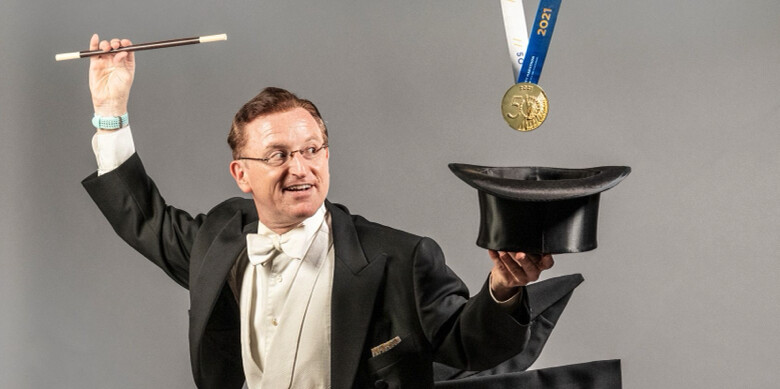
Now, those close to the performer have started complimenting him on his sleight of foot since he took up running in 2018. It's a newfound skill that Cohen says has improved his expertise as a magician and vice versa.
Until recently, Cohen, 51, never considered himself an athlete. He joined the track team in high school, competing in the 100-meter dash but quit soon after to participate in the theater program, where he thrived as a performer.
Since starting Chamber Magic in 2000, Cohen has used his shows as his form of exercise, frequently performing six times in a weekend. His audiences, which often include celebrities and royalty, get to enjoy conjuring, mind-reading, sleight of hand, and one of his most famous tricks called “think-a-drink,” in which an audience member requests a specific beverage that magically appears in Cohen's teapot. With the rapid fire energy, preparation, and effort that goes into each performance, Cohen didn't consider outside exercise for many years.
“Magicians are usually couch potatoes and it's rare to find a magician that's incredibly fit,” Cohen says. “That was kind of me.”
In 2015, Cohen's wife Yumi Morishige picked up running and encouraged him to join her. As Cohen recalls, he couldn't keep up with his wife for a full mile during their first run together. “I was huffing and puffing, and she was running loops around me to keep me going,” he says. “That demoralized me.”
After the first run, Cohen joined a gym but realized he needed more stimulation in his workouts. Instead of exercising in the gym, his wife encouraged him to focus on destination workouts, like running to Harry Houdini's house, which is about two miles away from their apartment on the upper west side of Manhattan. Over time, Cohen added more routes that excited him, including a run to Alexander Hamilton's house uptown.
With more miles under his belt, Cohen and his wife made a bet. If he entered the lottery for the New York City Marathon and gained entry, he would run the race. Cohen lost in 2016 and 2017 but the following year, he received surprising news. While sitting in the theater of the Magic Castle, a private magician's club in Los Angeles, Cohen received an email from the New York Road Runners letting him know that his application to run the marathon was finally accepted. “The first thing that came to my mind was oh shit,” Cohen says.
After spending a few minutes processing the news, Cohen realized he couldn't break the promise to his wife and came around to the idea of becoming a marathoner. “Being a magician is all about making the impossible possible,” Cohen says. “I thought, I'm going to be a magician to myself and I'll make this impossible thing that I thought I could never do, possible.”
In March 2018, Cohen started building up mileage using Hal Higdon's marathon training plan. Because his shows are on the weekends, Cohen has to fit all of his weekly mileage into five days, which means he does his long run on Wednesday.
Prior to the marathon in November 2018, the longest race Cohen had ever run was 100 meters on the track as a high school student. But he embraced the experience as an opportunity to try something different and bring his magic community along for the ride.
Before the race, he sent an email to his fanbase encouraging them to cheer him on during the New York City Marathon. He wore a t-shirt with the king of hearts printed on the front, which helped people recognize him among the thousands of competitors. Throughout the race, fans cheered for Cohen and on several occasions, he even stopped to perform magic tricks, including one in which he penetrates an earphone cord through someone's finger. “There were enough people that it kind of slowed my time down a lot,” Cohen says. “But I don't really care because I wasn't in it to win some PR.”
In his first 26.2, Cohen finished in five hours and 37 minutes and was immediately hooked. After his debut, Cohen joined his wife as a member of the New York Flyers run club.
During the height of the pandemic, the magician didn't perform for 16 months amid COVID lockdowns. In addition to writing two books, running helped Cohen cope with the cancellations. “I didn't have the physical exertion that I normally get while performing,” he says. “You need an outlet for all that stress, so running really did save me.”
In the fall of 2020, he completed the New York City Marathon virtually. For his 50th birthday on February 21, 2021, Cohen ran from his home to the hospital where he was born in Yonkers, New York and back for just over 50K.
In November 2021, Cohen returned to the New York City Marathon in person and took 32 minutes off his previous personal best. This fall, he hopes to break five hours for the first time on the NYC course.
Now four years into his development as a runner, Cohen says the sport has helped elevate his skills as a magician. His posture has improved while on stage, and similar to managing paces in a 26.2-mile race, he's become more efficient in pacing his energy with back-to-back performances. Before he became a runner, Cohen would end the weekend exhausted with pain in his back. Now, he says the endurance gained from running makes him feel like he can add another show to the line-up. Perhaps more importantly, running has given Cohen a newfound sense of accomplishment when he takes the stage in front of world leaders and billionaires.
“The one thing that they can't buy is something you need to accomplish on your own, and if I've accomplished that by having run a marathon, it gives me a great amount of personal strength and it makes me feel they're equal when I'm standing in front of someone who is a very powerful person,” Cohen says. “I feel a lot more self-empowered, and I think that's thanks to running.”
(08/14/2022) ⚡AMPby Runner’s World
How to find the right coach for you
Finding the right coach for you is important, ensuring they provide advice that fits your needs and lifestyle, and help to create a positive, sustainable relationship with the sport.
But how to go about it? Here’s our quick guide on finding the right coach for you.
Determine the help you need
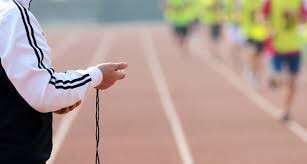
Different coaches will be valuable for different people, so finding a coach who matches your needs will help get the most out of your athletics journey.
Some coaches may foster a group with a focus on making sessions as fun as possible. These coaches can be great when first finding your way into the sport, encouraging you to learn its disciplines and make you want to keep coming back.
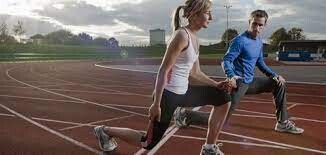
If part of the reason you are taking up athletics is for the social interactions it creates, these coaches may be the best place to start.
Other coaches may have more of a focus on the performance side of athletics and be more appropriate for those who feel they already have an understanding of the sport and want further guidance on particular aspects of their event.
For those doing multiple disciplines, some may even choose to have more than one coach, with specialists guiding them for jumps, sprints and throws, though there are multi-discipline coaches that focus on all the events.
These performance-focused coaches can take many different forms, from experienced coaches to former athletes as well as those with a science-focused physiology background. Think of what sort of advice you would see as valuable and select your coach accordingly.
To gain a sense of the types of sessions run by coaches, take a look on social media as well as on club and coach websites, or even ask if you can do a trial session.
Getting guidance on qualified coaches through your governing body
Many national athletics federations have a list of qualifications available to coaches on their websites.
See if the coach you hope to work with has any of these, as it will be a good indicator of the experience they have gained.
As well as these qualifications, World Athletics offers an eLearning platform, which provides educational courses and webinars for people within the sport, including those in key stakeholder groups such as technical officials, coaches and medical professionals.
Matching personality to your outlook
Like people in everyday life, coaches will have different personalities. Some people like working with enthusiastic and loud coaches, valuing the support and clear instructions. Others prefer a softly-softly approach, with less-frequent but nonetheless valuable feedback.
Think about what you require in a coach. Speak to current group members already guided by your potential coach to gauge their personality and contemplate whether that would work for you.
Thinking beyond athletics, how does the coach fit into your life?
Ensuring you are both on the same page will create a more positive, long-lasting and sustainable relationship for athlete and coach.
Appraise yourself honestly and think about what sort of role you see athletics playing in your life. If family, work and other life commitments may affect your training, make sure you find a coach that understands that. Be honest and up front with that coach when it comes to how you see the relationship working.
A good indicator of this will be finding a coach who works with other athletes with a similar lifestyle to you, and a good way of finding this out will be heading down to the track and trying out a few sessions for yourself.
(08/13/2022) ⚡AMPby World Athletics
Ingebrigtsen to launch another 1500/5000m double attempt in Munich 2022
Norway’s Jakob Ingebrigtsen will be heavily involved in the Munich 2022 European Athletics Championships, part of the wider multisport European Championships, as he defends the 1500m and 5000m titles he won as a 17-year-old at the Berlin 2018 European Athletics Championships.
The Olympic 1500m champion and world 5000m champion will not, however, face the either of his brothers Filip and Henrik who are both injured nor the Brit who unexpectedly beat him to the world 1500m title in Eugene last month, Jake Wightman.
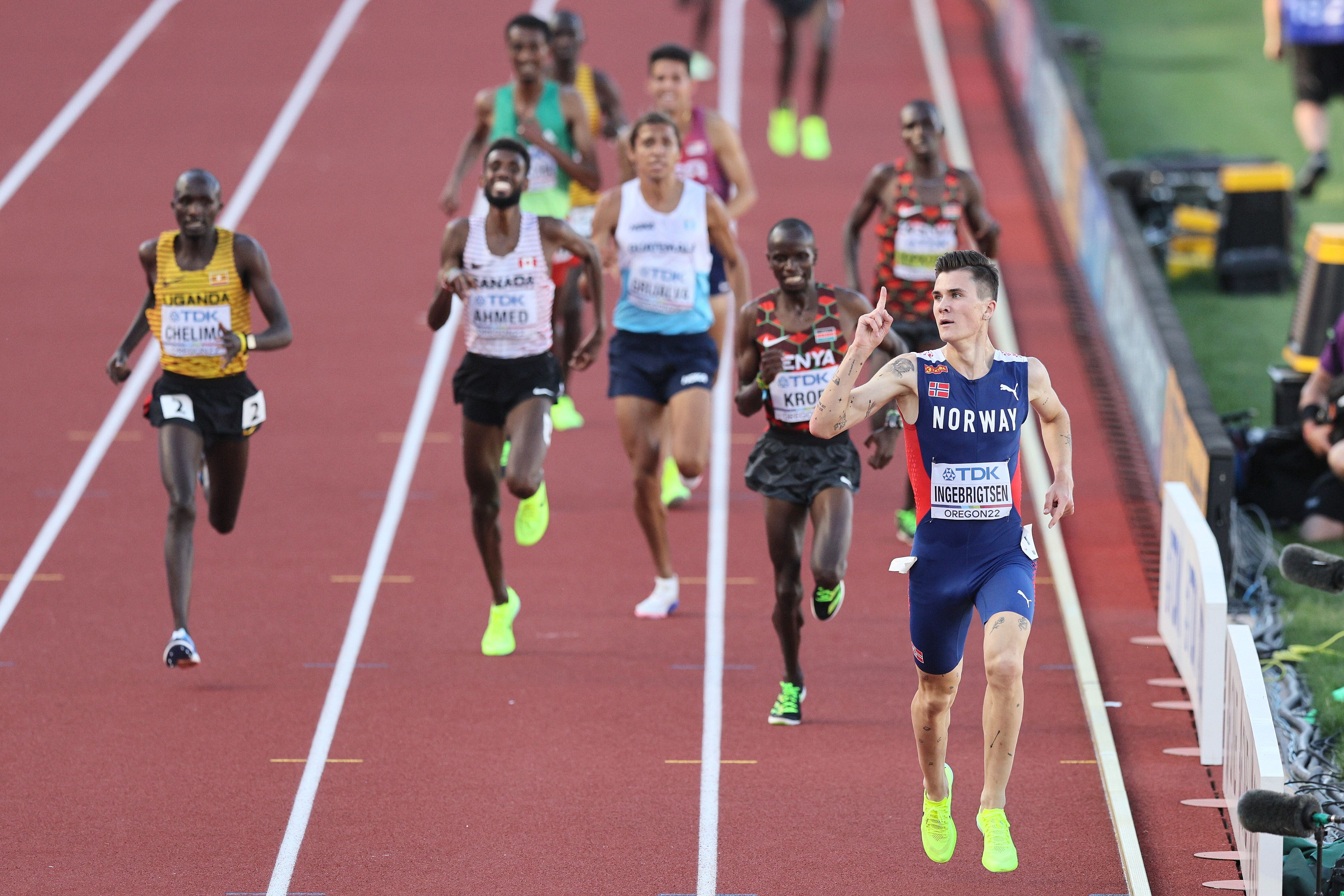
The latter is concentrating on the 800m in Munich – the event he originally planned to do at the Birmingham 2022 Commonwealth Games until he was nudged back to the longer distance because of the number of friends and family who had bought tickets for the final last Saturday when he won bronze in a high quality final in 3:30.53.
With a personal best of 1:44.18 from 2020, Wightman has a realistic chance of adding another European medal to the bronze he won over 1500m in Berlin four years ago – and his victory over 1000m at the Monaco Diamond League meeting on Wednesday night in 2:13.88, ninth fastest of all-time, will have done his confidence no harm at all.
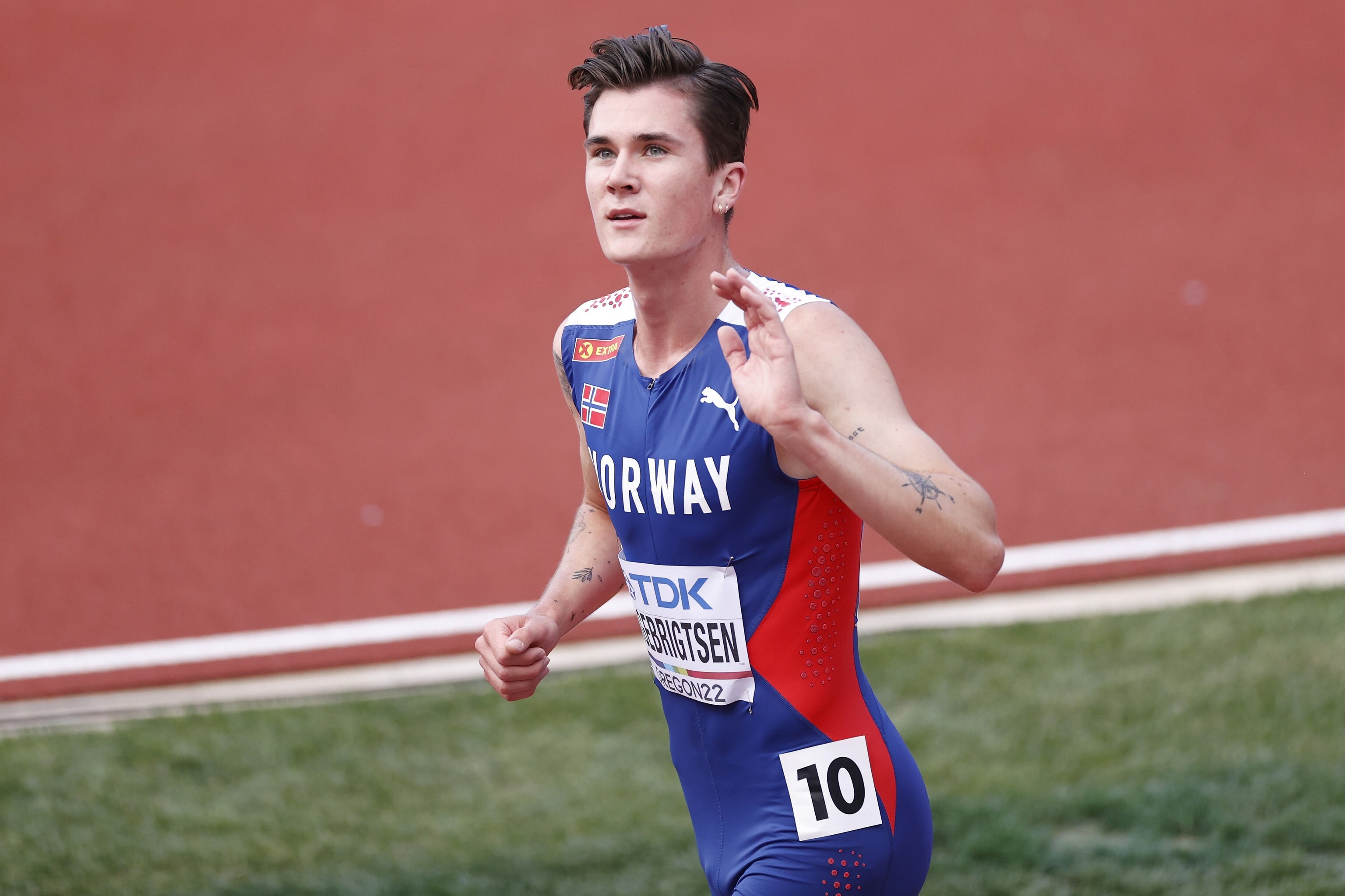
France’s Benjamin Robert has the fastest 2022 time of all entrants – the 1:43.75 he clocked in winning at the Paris Diamond League on 18 June in boisterous fashion, squeezing in between the two leaders with enough physicality to be disqualified before being reinstated on appeal. If things get physical in Munich, Robert is unlikely to come off second best.
Tony van Diepen is also well acquainted with the hurly-burly of the track having been a part of the Dutch teams that won 4x400m silver at the Tokyo 2020 Games and mixed 4x400m silver at the World Championships in Oregon.
Individually, van Diepen has won European indoor silver in 2021 and bronze in 2019 over 400m and has a best 800m time of 1:44.14 set this year in Paris after M. Robert had burst past him at the Stade Charlety.
Robert’s compatriot Gabriel Tual, seventh in last year’s Olympic final, is third fastest on this year’s European list with 1:44.23, set in – you’ve guessed it – Paris. But the French team will be without the popular Pierre-Ambroise Bosse, the 2017 world champion, due to injury.
Poland’s Patryk Dobek has run 1:44.59 this year and even though he exited in the heats at the World Athletics Championships, he can also draw upon the experience of winning bronze at last year’s Olympics in Tokyo.
Other medal prospects include Sweden’s Andreas Kramer (1:44.59), Ireland’s Mark English (1:44.76), fellow Brits Ben Pattison (1:44.60) and Kyle Langford (1:44.61), Spain's reigning world indoor champion Mariano Garcia (1:45.12) and the very experienced former two-time world medallist Amel Tuka from Bosnia and Herzegovina (1:46.15) whose lifetime best of 1:42.57 dates back to 2015.
Aside from Bosse, another notable absentee will be the three-time reigning champion Adam Kszczot from Poland who retired at the start of the year.
Ingebrigtsen's path to double gold is clearer although not without challenges
With Wightman elsewhere, Ingebrigtsen will surely feel happier about the prospect of his 1500m defence, but he will still face a field full of Spanish and British medal threats.
Second on this year’s European list with 3:30.20, Spain’s Mario Garcia will be looking to give the Norwegian wonderboy another run for his money after finishing fourth - two places behind Ingebrigtsen - in Oregon.
The Brits dominate the 2022 European list with six athletes in the top nine and despite the absence of Wightman and Olympic bronze medallist Josh Kerr, Jake Heyward (3:31.08), Neil Gourley (3:32.93) and Matt Stonier (3:32.50) form a trio with clear medal-winning ability.
But Ingebrigtsen, who ran 3:29.47 to take world silver, and ran an Olympic and European record of 3:28.32 at the Tokyo 2020 Games, should have enough to cover any challenge in both events.
In the 5000m, it might be the athlete who appears second from last on the entry-list in terms of season's bests who could provide the biggest challenge to Ingebrigtsen. That athlete is Spain’s Mohammed Katir who won a bronze medal behind Ingebrigtsen in the 1500m at the World Athletics Championships in Oregon and will be focusing solely on the longer event in Munich.
Katir, 24, has a modest season's best of 13:43.61 from the Spanish Championships but he showed what he can do over the longer distance by running a national record of 12:50.79 in Rome last summer in the same race where Ingebrigtsen broke the European record with 12:48.65.
Another strong potential challenger is the experienced Spaniard Adel Mechaal, who was fifth in the Olympic 1500m final last year and set a 5000m personal best of 13:06.02 in Oslo in June. Mechaal didn't make it through to the final of the World Athletics Championships but that wasn't too surprising as he had only just recovered from an untimely bout of coronavirus which forced him to miss the 1500m.
In both the 5000m and 10,000m, watch out for Italy’s Yemaneberhan Crippa, 25, who has been a star performer in numerous European competitions, winning bronze at the 2019 European Cross Country Championships and the European 10,000m Cup in the same year.
Crippa has the fastest time among the entrants based on season’s best performances in the 10,000m with 27:16.18 ahead of another showboating, talented figure in Jimmy Gressier of France – he of the famous faceplant as he won the 2018 European U23 cross country title. This didn’t stop him from walking through the line to win the same title the following year, demonstrating just how much time he had to spare.
There weren’t quite the same histrionics at the SPAR European Cross Country Championships in Dublin last December but Gressier let his running do the talking and he came away with his first senior medal in a race where Ingebrigtsen ruled triumphant once again.
Gressier will be focusing solely on the 10,000m in Munich and the Frenchman is the second fastest performer this year with 27:24.51 which he set at the European 10,000m Cup on home soil in Pacé in May when he ran away from the field for the individual title.
(08/13/2022) ⚡AMPEuropean Athletics Champioships Munich 2022
European Championships Munich 2022 will be the biggest sports event in Germany since the 1972 Summer Olympics. From 15-21 August 2022, European sport will be united as its best athletes compete for the highest accolade of their sport on the continent – the title of ‘European Champion’. The second edition of the European Championships will feature nine Olympic sports:Athletics, Beach...
more...Active rest/recovery: is it always better than passive rest?
Runners are often told about the importance of recovery. And in the context of training and recovery, you may have come across the terms “active rest” or “active recovery.” You might wonder, if rest and recovery are so important, why should runners aim for “active” rest? This is an excellent question, with significant implications for training and overall fitness.
First, let it be said that every effort requires a period of recovery–you can’t push your body continuously without allowing it to recover. Whether that effort is represented by 400m repeats on the track, a week of training or a full marathon build, the question of whether active or passive rest is best applies in each case.
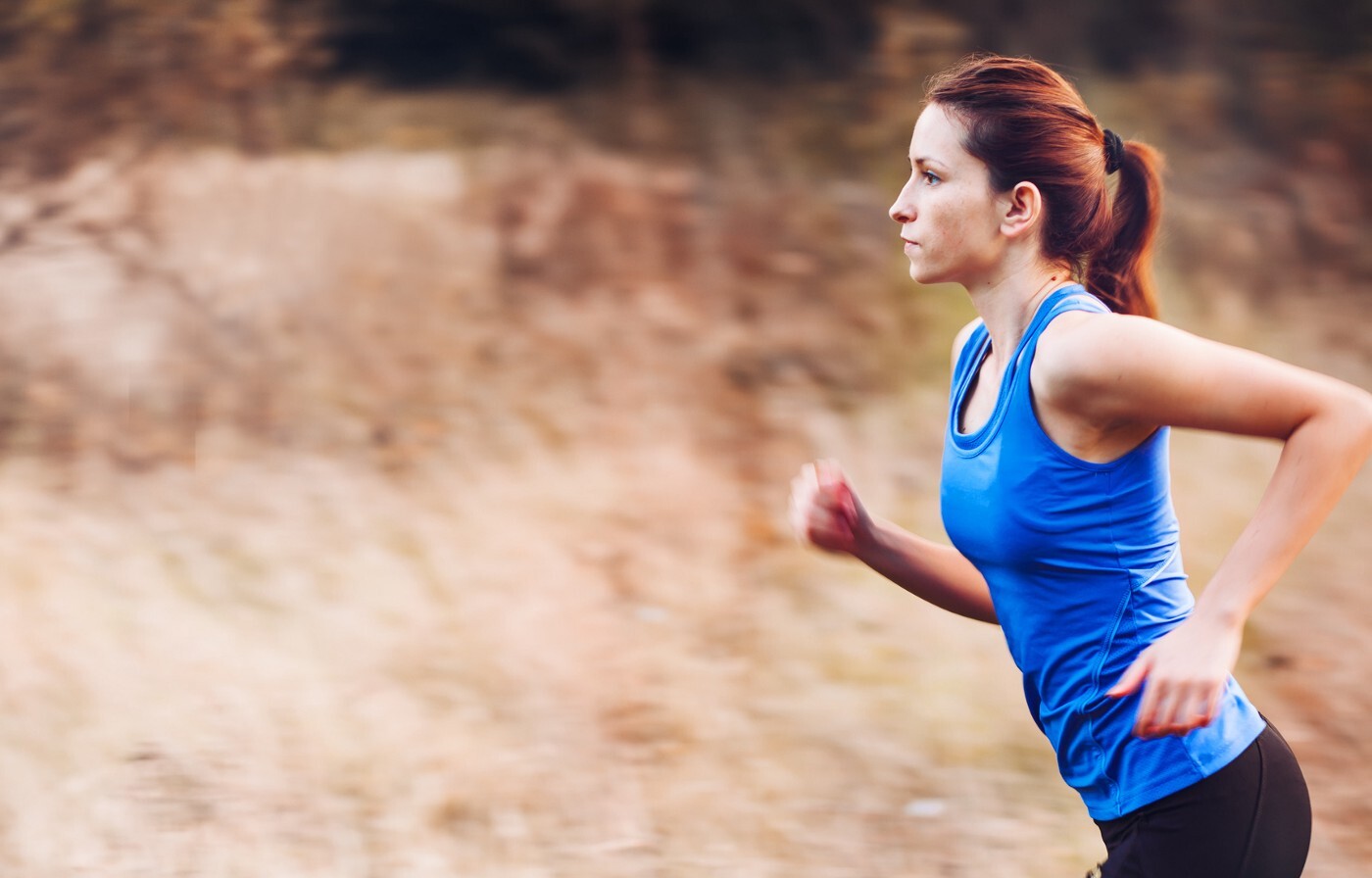
During a track workout, studies have shown that active rest, i.e., slow jogging or walking during the rest interval between repeats, helps clear lactate more quickly than passive rest (where you simply stop), allowing athletes to continue exercising at greater intensity and for longer periods than if they stopped moving between intervals. In this context, active rest is generally recommended over passive rest, especially if you’re chasing performance goals, such as a new PB or a Boston-qualifying marathon time.
Similarly, during a rest day as part of your regular training week (usually the day after a hard workout), some light, low-impact activity such as walking, hiking, bike riding, stand-up paddleboarding or swimming can promote blood circulation to your muscles and help prevent soreness. (Note that we’re talking about easy, recreational-level efforts here–active recovery should not be confused with cross-training, which is vigorous training in a different sport to work different muscles and body systems for the purpose of augmenting fitness and preventing injury. It should also be noted that good recovery, whether active or passive, depends on adequate sleep and fuelling on a daily basis.)
Sometimes, recreational and elite athletes alike feel the need to take a longer break from their sport. This may involve a period of complete (i.e. passive) rest, where they don’t do much of anything–possibly providing a mental, as much as a physical, break from constant training.
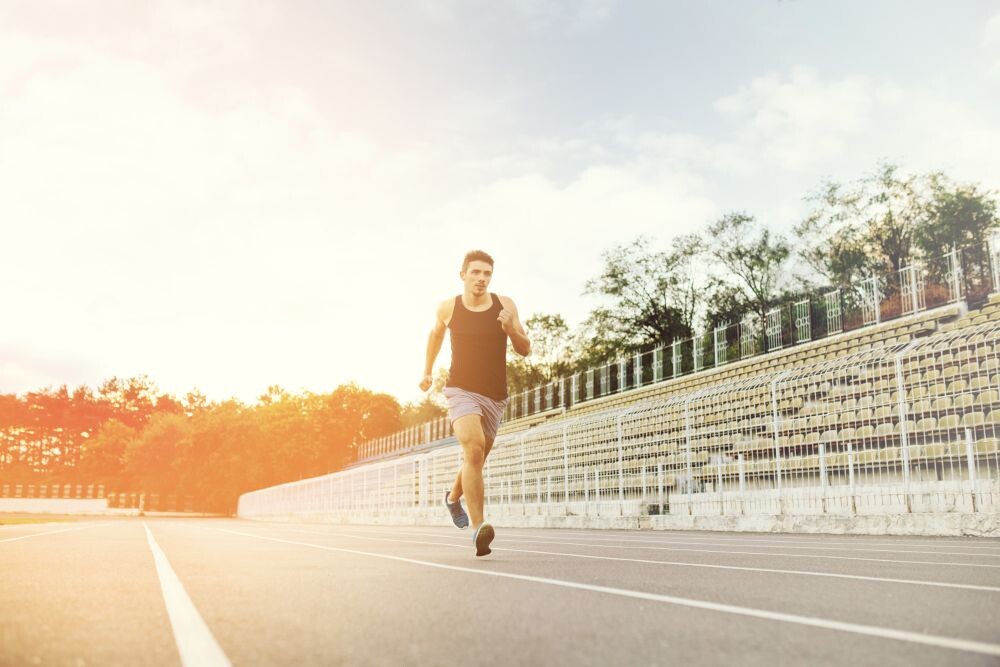
Depending on the individual, this may last for several days or weeks. They may then decide to introduce some light activity, which would constitute more active recovery, before returning to training. (But there is also nothing wrong with taking a complete day off, now and then, from any kind of physical activity.)
(08/13/2022) ⚡AMPby Anne Francis
British woman runs 106 marathons in 106 days with fractured knee
Kate Jayden of Derbyshire, U.K., who set the world record of 106 marathons in 106 days, completed in April 2022, has had her record verified by Guinness World Records. Although 106 straight days of running a marathon is an incredible feat in itself, Jayden revealed on her social media that she ran her last 60 marathons on a fractured knee.
Jayden began to feel discomfort in her knee after her 46th marathon, when she struggled to put weight on it and thought she had developed an injury. But the 35-year-old carried on for the last 60 marathons.
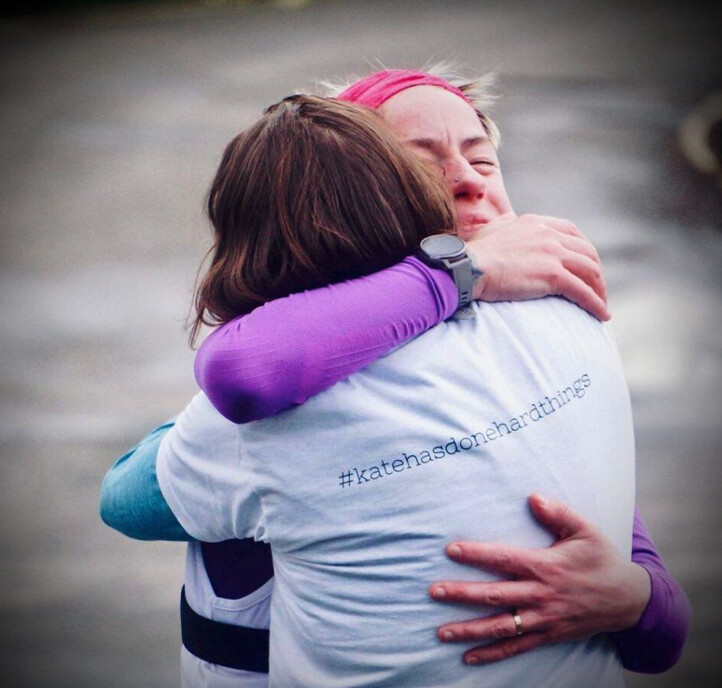
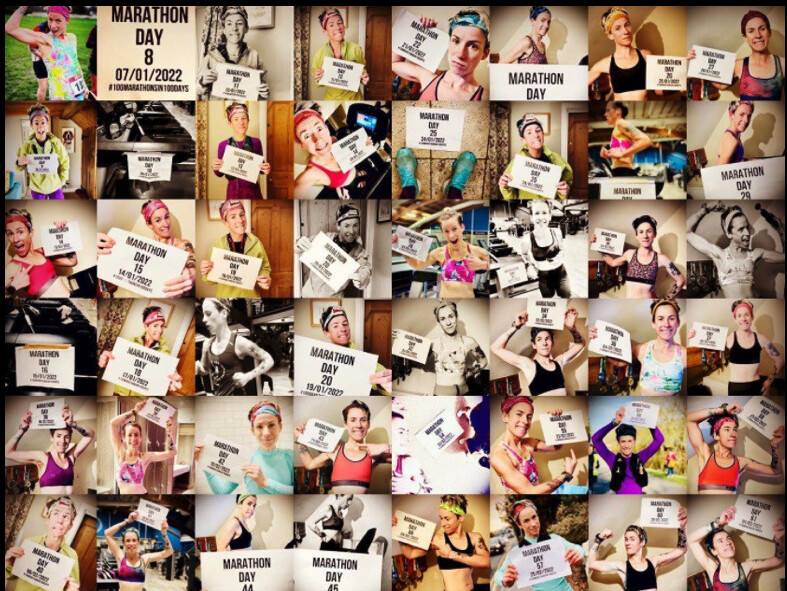
She started her challenge for charity on Dec. 31, 2021, and finished on April 15, 2022. Jayden got an MRI on her knee soon after finishing, and a scan revealed she had fractured her knee and may not be able to run again.
“I did not realize that day 106 was going to be my last long run,” Jayden told the BBC. “But if you could have planned it to be, it was an excellent way to go out.”
Jayden plans to have surgery on her knee and hopefully take up cycling in the future.
She initially set out to beat American runner Alyssa Clark’s record of 95 marathons in 95 days, which was set in November 2021. Several runners have since been inspired by Clark’s and Jayden’s records, and have set out on their own.
During her challenge, Jayden raised over CAD $50,000 for three charities: the Refugee Council, Trussell Trust and The Hygiene Bank.
(08/13/2022) ⚡AMPby Running Magazine
Some running quotes to inspire you
It can be hard to maintain your zest for running when the temperatures soar.
We dug up some running wisdom from some great athletes and minds to get you out the door. When your workout motivation wanes in the face of weather or whatever comes your way, read a few lines and consider it your calling to rise up and run.
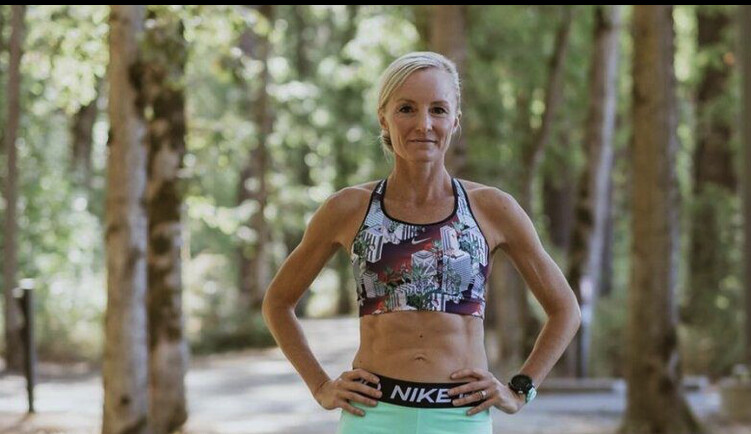

You are a runner, no matter your distance, pace or natural ability
“All runners are tough. Everyone has to have a little fire in them, that even in tough times, can’t be turned off.”
— Shalane Flanagan
“If one could run without getting tired I don’t think one would often want to do anything else.”
– C. S. Lewis
“To give anything less than your best is to sacrifice the gift.”
–Steve Prefontaine
“I just wanted to come out today and, I don’t know, get up in it, stick my nose where it didn’t belong, and just see what I could come away with. I guess that’s a medal.”
–Molly Seidel
“The advice I have for beginners is the same philosophy that I have for runners of all levels of experience and ability: consistency, a sane approach, moderation, and making your running an enjoyable, rather than dreaded, part of your life.”
— Bill Rodgers
Remember why you do it
“Why do we do this? To feel something. To move ourselves, to ensure that we don’t get stuck. And most of all, we do this to be a part of something. To insert our individual effort into a sea of human energy and force out the other side, hopeful that somehow we’ll be different. Changed in some way.”
–Peter Bromka
“Because during every run, for a few seconds or a few minutes, you have a moment where it feels really good. You forget about the discomfort and you find rhythm, maybe some grace, and a feeling of strength and confidence as you move as well as you’ll ever move doing anything. And that’s one of the best reasons to run.”
― Brendan Leonard
“Keep moving. You’re still here. We all are. As long as you’re moving you’re still here.”
–Tommy Rivers Puzey
“…For me there has always been a place to go and a terrible urgency to get there.”
—Joan Benoit Samuelson
“The reason we race isn’t so much to beat each other… but to be with each other.”
–Christopher McDougall
(08/13/2022) ⚡AMPHow to talk to a runner
Talking to runners can be intimidating. I have been running for decades and I still find myself occasionally searching up terms I overhear fellow-athletes use in casual conversation.
We’ve defined some commonly used acronyms so that you can throw around your running lingo like you’re the GOAT.
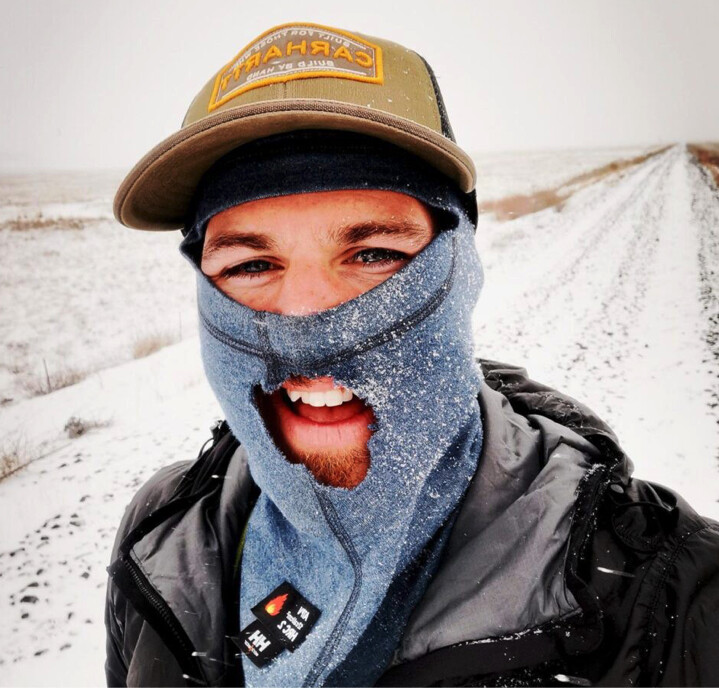

Running basics: I was wearing my HRM, but my HR was wonky for my entire LSD
HMP: half-marathon pace HR: heart rate HRM: heart rate monitor HRV: heart rate variability (the fluctuation in the time intervals between adjacent heartbeats) KOM/QOM: king of the mountain/queen of the mountain (a badge on Strava) LR: long run ER: easy run LSD: long slow distance MP: marathon pace FOMO: fear of missing out (if I’m an IPSOS I have to miss all the races and I’ll be stuck at home with FOMO) XT: cross train XC: cross country VO2 max: the maximum (max) rate (V) of oxygen (O₂) your body is able to use during exercise FKT: fastest known time
Racing terms: “You had better start training for WSER or you’ll finish DFL”
BQ: Boston qualifier (or Boston qualified) CR: course record (or Canadian record) DFL: dead f*cking last DMR: distance medley relay (a four-person event on the track, consisting of a 1,200m leg, a 400m leg, an 800m leg and a 1,600m leg) DNF: did not finish DNS: did not start GOAT: greatest of all time NR: national record OCR: obstacle course race PB: personal best (used in Canada) PR: personal record (used in the U.S.) PW: personal worst
RD: race director SB: season’s best SC: steeplechase UTMB: Ultra-Trail du Mont-Blanc (one of the most challenging ultratrail races, held in Chamonix, France) WL: world lead WR: world record WSER: Western States Endurance Run (as in ‘see you at states’ aka one of the most challenging ultratrail races, held in Auburn, Cali.)
Reovery and injuries: “I went out too hard in my BQ attempt, ran a PW, and now I’m an IPOS with FOMO”
DOMS: delayed onset muscle soreness (why an easy run the day after a hard workout doesn’t hurt as much as expected) IPOS: injured piece of sh*t IT band: iliotibial band (the band of tissue that starts at the hip and runs down the outside of the thigh) ITBS: iliotibial band syndrome LEA: low energy availability RED-S: relative energy deficiency in sport RICE: rest, ice, compression, elevation (common injury-treatment advice) IYNYN: If you know, you know (sometimes only those who have been there can truly understand)
(08/13/2022) ⚡AMPby Running Magazine
What is a stress reaction, and how can you prevent one?
Molly Seidel missed world championships because of a stress reaction; how can the rest of us stay injury-free?
Avoiding injury is the goal of every runner, and that includes preventing a season-ending (and painful) stress reaction. Olympians Molly Seidel and Gabriela DeBues-Stafford have both been sidelined this year with stress reactions; ultrarunner Gary Robbins had to pull out of his 2019 Barkley attempt due to one. So what is a stress reaction, and how can a regular runner prevent it?
Stress injuries: the basics
Readers may be more familiar with the term “stress fracture,” which is further along the stress injury spectrum. (In other words, a stress reaction may lead to a stress fracture if left untreated.) The cause of the initial reaction (and subsequent possible fracture) is usually overuse, as opposed to more serious traumatic types and of fractures from falls or other accidents.

Stress injuries are classified upon diagnosis: early (stress reaction) or late (stress fracture). A stress reaction can be considered similar to a deep bone bruise. A stress fracture is a small hairline crack in the bone.
Stress reactions are usually diagnosed through an MRI, and we see pro athletes catch their injury at this early stage because they’re more likely to have quick access to medical technology. Regular runners often don’t realize they have a serious injury until an X-ray shows a stress fracture.
Why are runners vulnerable?
Runners tend to get stress injuries in their leg bones, feet and hips due to the repetitive nature of our sport. DeBues-Stafford’s and Seidel’s stress reactions were in their sacrums (the triangular bone at the base of the spine, just above the tailbone); Robbins‘ was located at the head of his femur (thigh bone), close to the sacrum.

The pain from this injury is often barely noticeable at first, but progresses over time until you can even feel it at rest. Runners may be used to running through niggling pain and soreness and will ignore the symptoms of a stress injury until it’s past the reaction stage.
Proactive steps
Overtraining and underfuelling are major contributing factors to stress injuries.
A paper in the Journal of Orthopaedic and Sports Physical Therapy reported that while micro-damage to tissues and bones is essential to athletic improvement, stress reactions occur when the strain caused during accumulated activities is disproportionate to the body’s ability to recover.
What does that mean for the regular runner? Be mindful of nutrition, recovery and training load. Running a big marathon build, but not fuelling appropriately for your body to actually repair the incremental damage done by that build, is a recipe for disaster.
Allowing appropriate recovery time (including sleeping 8-9 hours per night) after hard sessions or training blocks and eating enough nutritious food to fuel that recovery are essential to avoiding stress injuries. (They’re also key to becoming a faster, stronger runner.)
(08/12/2022) ⚡AMPby Keeley Milne
The Race Against Age: How to slow down the slowing down, become a faster runner in your forties and beyond
Your age doesn't have to hold you back in the sport! Here's how to rework your training so you can become a faster masters runner.
Sometimes running life begins at 40 and, as a result, you should continue to see improvements in running pace and performance. But, even if your running life began several decades prior to your fortieth birthday, you can still run faster in your forties and beyond.
Consider Kevin Castille of Nicholasville, Kentucky. In 2012 the 41-year-old set an age-group national record of 48:56 for 10 miles on the road. A couple of weeks later he broke his own age-group record for 10,000 meters on the track, running 28:53.54. That time is within four seconds of Castille’s personal best for the event, which he set when he was 32.

How did he do it and how can you mimic it? Let’s take a closer look:
TAKE MORE TIME IN BETWEEN HARD EFFORTS
In running life after 40, recovery is key and you will need more time to recover from hard workouts. Masters runners can shift their training and mindset by adapting an 8-10 day cycle of training rather than planning out a typical 7 days. The extended schedule allows for the recovery time needed but also keeps key workouts, like speed and tempo, on in regular rotation.

RUN LESS
Yes, you read that correctly. If you want to run faster after 40 you will need to take recovery seriously and you will need to implement more cross training. Your body most likely cannot endue the same 50-100 mile weeks of continuous running and instead needs to build up key muscles to support the quality runs you are doing.
Consider cycling for some of your cross training as it’s a great alternative to the pounding on your joints and has been proven beneficial to running endurance. If you have access to an ElliptiGO, even better! We already know a certain decorated, over 40 runner named Meb who has been training with an ElliptiGO for years with much success.
TRAIN SPEED DIFFERENTLY
Yes, you can still go fast and harness some speed out of those legs and lungs but you will want to incorporate strength training and hills into your “speed work” days. Add more explosive strength training days (think plyometrics) since your body can tolerate strength work better than a day at the track. And, instead of doing something like 10×400 do shorter hill sprints like 10 x 30 seconds at 4 percent incline. Lastly, keep a speed component in your training at all times, even the offseason, so you can better maintain your body’s tolerance for it.
FOCUS EVEN MORE ON FOOD
If good nutrition is already a focus (as it should be) you will need to hone your eating skills to adapt to your aging body and it’s changing nutritional needs. Nutritionist, bestselling author and runner Matt Fitzgerald has a system that ranks food types by quality as defined by their effect on body composition. The 10 types are in descending order of quality:
Vegetables
Fruits
Nuts and seeds
Fish and lean meats
Whole grains
Dairy
Refined grains
Sweets
Fatty meats
Fried foods
Fitzgerald suggests tracking how many times you eat each type of food and then use the data to move your eating habits toward mostly the top of the list. He also emphasizes that none of these food groups needs to be eliminated.
Whether you started running at 40 or are still looking to push yourself as you enter this new decade, know that you can run faster after 40 and beyond as long as your adjust your workouts and your mind to a new way of training.
(08/12/2022) ⚡AMPby Allie Burdick
Defending Champions Set to Return to the 2022 Bank of America Chicago Marathon
The Bank of America Chicago Marathon announced today the return of its defending champions as the event continues to build on its comeback to global racing. Ruth Chepngetich (KEN), Seifu Tura (ETH), Tatyana McFadden (USA) and Daniel Romanchuk (USA) will be at the helm of this year’s elite field with a strong contingency of the world’s best athletes vying to dethrone them. The stage will be set for a fierce competition up front, highlighting Chicago’s long tradition of record chases, fast times, and gripping finishes.
“We’re thrilled to welcome our defending champions back to Grant Park this fall,” said Carey Pinkowski, Executive Race Director of the Bank of America Chicago Marathon. “Chicago has a storied history of head-to-head competitions, world records and some of the best elite racing in marathon running. This year’s competition, which also includes American half marathon record holder Emily Sisson and American half marathon champion Conner Mantz making his debut, is going to bring much energy and enthusiasm to fans and spectators. We are ready for October 9.”
Defending Champions Return
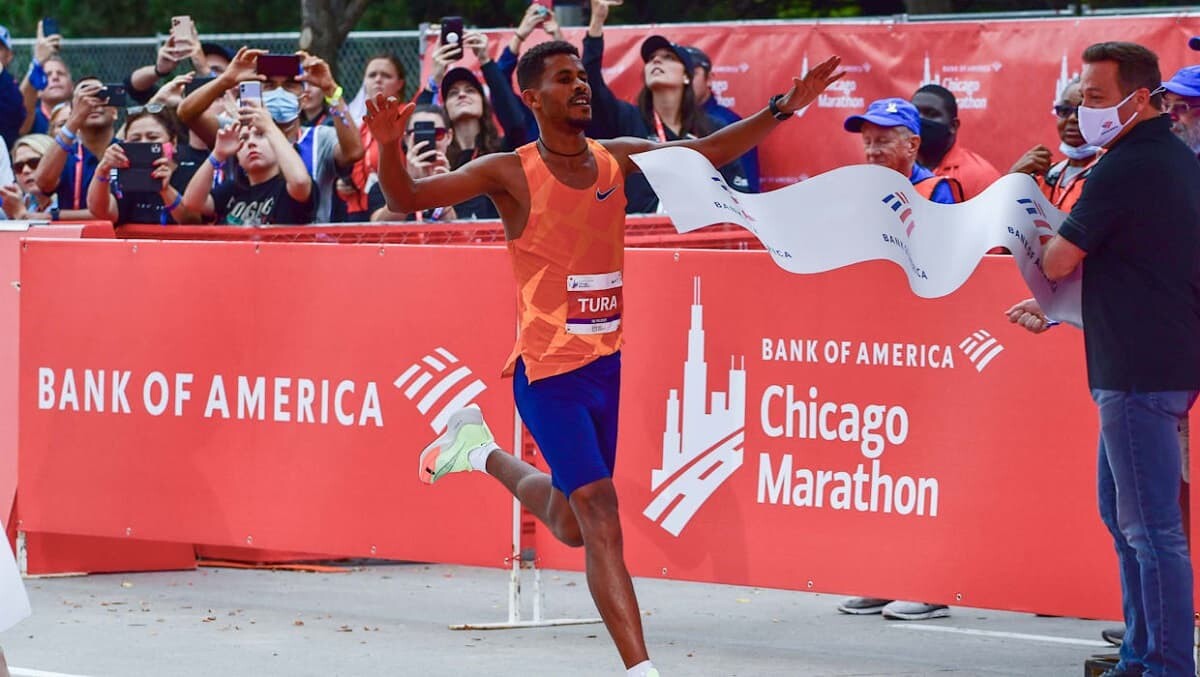
Chepngetich, the 2019 World Marathon champion and the fourth fastest woman in the history of marathon running, started on a world record pace at the 2021 Bank of America Chicago Marathon, dropping her pacer eight miles in while racing against the clock. She decelerated over the second half of the course but had enough to take the crown in 2:22:31. Chepngetich, who is self-coached, kicked off her 2022 season with a win and a course record at the Nagoya Marathon (2:17:18). She recently dropped out the of the World Championships Women’s Marathon due to health issues but is ready to take to the streets of Chicago and defend her title.
Unlike the fast pace set by Chepngetich, Tura ran a controlled strategic race last fall in the elite men’s race, waiting until 38K to pull ahead and win the biggest race of his career so far. Tura, who holds a 2:04:29 personal best, clocked 2:06:12 to win last year. His 2022 season includes a personal best in the half marathon, 58:36, and a second place finish in the Paris Marathon. Following last year’s victory, Tura noted that he was not prepared for warm weather, but that he was “determined to fight to the very end.” Tura’s determination may make him just the fifth man in Chicago’s history to win twice in a row.
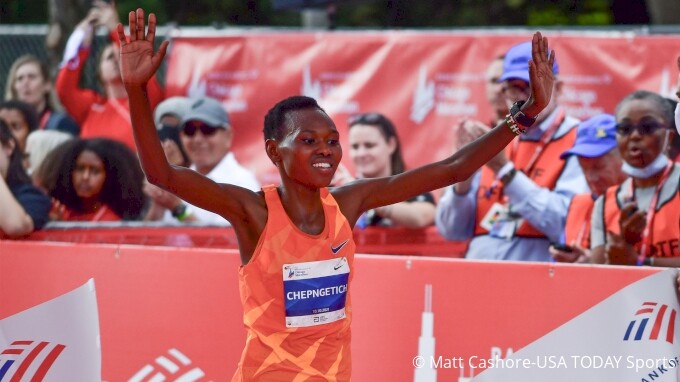
In the wheelchair competition, McFadden, whose nine titles make her the most decorated athlete in Bank of America Chicago Marathon history, returns to contend for her 10th win. McFadden boasts 20 Paralympic medals, including eight gold medals, 24 World Marathon Major wins, including four consecutive Grand Slams (first place in Boston, Chicago, New York City and London in the same year) and has broken six world records in track and field.
Romanchuk, a two-time Paralympian, completed the Bank of America Chicago Marathon hat trick with a victory last fall and returns to pursue a fourth title. Romanchuk rose to the top of road racing in 2018 and his campaign continues today. At the 2020 Paralympic Games, he took home a gold on the track and a bronze in the marathon.
Sisson and Mantz Headline Strong American Field
The Bank of America Chicago Marathon has a long history of welcoming America’s best runners across its finish line, stretching back to Joan Benoit Samuelson setting the American record en route to her victory in 1985. Khalid Khannouchi dominated at the turn of the century with four victories, including both world and American records, Deena Kastor clutched the win in 2005, and Galen Rupp stole the show in 2017. Last October saw five American men and seven American women finish in the top 10, a feat that highlights the strength of U.S. distance running. This year’s field includes several top American runners, including Emily Sisson and Conner Mantz.
Sisson, a six-time national champion and the American half marathon record holder (1:07:11), could put the American Marathon record (2:19:12) in jeopardy as she races to break the tape in Chicago. Sisson stands out as one of the most dominant American women on the track and the roads, making her Olympic debut in the 10,000m at the Tokyo Olympics and her marathon debut in 2019 in London. Sisson ran the fastest ever marathon debut by an American on a record eligible course (2:23:08), and she set an Olympic trials record in the 10,000m on the track (31:09) in 2021, breaking a record that stood for 17 years. This October marks Sisson’s first appearance in the Bank of America Chicago Marathon.
Mantz, known for his front-running style and capacity to handle pain (referred to as the “Mantz pain chamber”), made a splash on the collegiate level, winning the NCAA Division I Cross Country championships in 2020 and 2021, and earning his first U.S. title in the half marathon in 2021. Mantz’s time in the half marathon, 1:00:55, ranks him ninth on the all-time American list of half marathon performances. Mantz, an exciting newcomer to welcome to the marathon distance, could conquer the American marathon debut record, 2:07:56, set in 2019. Mantz is coached by 1994 Chicago Marathon runner-up, Ed Eyestone.
The Elite Fields
In addition to Sisson, Celestine Chepchirchir (KEN), Vivian Kiplagat (KEN) and Haven Hailu (ETH) are among some of this year’s elite women hoping to prevent a repeat victory from Chepngetich. Chepchirchir, winner of the 2019 Sanlam Cape Town Marathon, enters this year’s race fresh off a personal best, 2:20:10, set at the Seoul International Marathon. The Bank of America Chicago Marathon marks her Abbott World Marathon Major (AbbottWMM) debut. Kiplagat, winner of the 2022 Milan Marathon in a personal best, 2:20:18, ran valiantly in Chicago last year, attempting to stay on Chepngetich’s heels before fading to fifth place. Like Chepchirchir, Hailu will be making her first appearance in an AbbottWMM. Hailu made her marathon debut in 2020, set a personal best, 2:20:19, in 2021 to take third in Amsterdam, and claimed her first marathon victory in Rotterdam this past April.
Laura Thweatt (USA), Sarah Sellers (USA) and Sara Vaughn (USA) lead a strong delegation of American women. Thweatt holds a marathon personal best of 2:25:38, and finished eighth in both Chicago (2019) and New York (2021). Sellers initially turned heads in 2018 when she finished second in the Boston Marathon while running from the open field. Sellers smashed her PR to finish second at this spring’s Grandma’s Marathon in 2:25:43. Vaughn, a versatile runner who started her career on the track as a 1500m runner, made her marathon debut in 2021, winning the California International Marathon in 2:26:53. Vaughn’s time stands out as the fifth fastest debut ever by an American woman.
The women’s field also includes Diane Nukuri (USA), Ursula Sanchez (MEX), Carrie Verdon (USA) and local favorite Kristen Heckert (USA).
In the men’s competition, Tura will be chased to the line by compatriots Herpasa Negasa (ETH), Dawit Wolde (ETH), Asrar Abderehman (ETH), Ugandan Olympian Stephen Kissa and Kenyan Benson Kipruto.
Negasa had a career breakthrough in 2019 when he subtracted nearly six minutes from his marathon PR in Dubai to run 2:03:40. He comes to Chicago after a strong second place performance in Seoul, clocking 2:04:49. Wolde initially made a name for himself as a junior competitor on the track. His transition to the roads started in 2014, and he boasts a marathon personal best of 2:04:27, set in 2021 to finish third in Rotterdam. Abderehman made headlines in February when he broke the course record at the Zurich Seville Marathon, taking three minutes off his PR to run 2:04:43. Chicago marks his first appearance in an AbbottWMM.
Kissa, a 2020 Olympian in the 10,000m, stands out as an exciting athlete to watch. He brings years of track speed to the road, recently debuting in the marathon in 2:04:48. In addition to the Olympic Games, he also represented Uganda at the World Championships Half Marathon. The Chicago Marathon marks his first time racing in the United States and his first time racing in an AbbottWMM. Kipruto’s 2:05:13 personal best may not be the fastest in the field, but he has performed well at the marathon distance, winning the Boston and Prague Marathons in 2021 and finishing third in Boston this April. He also finished seventh in London in 2020 and won the Toronto Marathon in 2018.
The men’s field also includes sixth place finisher in 2021 and local elite Colin Mickow, Hiroto Fujimagari (JPN), John Korir (KEN), Frank Lara (USA) and making his debut, Patrick Tiernan (AUS).
(08/12/2022) ⚡AMPby Running USA
Bank of America Chicago
Running the Bank of America Chicago Marathon is the pinnacle of achievement for elite athletes and everyday runners alike. On race day, runners from all 50 states and more than 100 countries will set out to accomplish a personal dream by reaching the finish line in Grant Park. The Bank of America Chicago Marathon is known for its flat and...
more...Cape Verde Olympian smashes stroller mile world record by nine seconds
Last weekend in Newburyport, Mass., former Olympian Ruben Sança shattered the stroller mile world record in a swift four minutes and 32 seconds while pushing his son at the 30th annual High Street Mile.
Sança broke the previous record of four minutes and 41 seconds with his 55-pound, five-year-old son, Greyson, strapped into the stroller. The week before, Sança won the Newburyport Lions Club 10-mile road race while pushing his son.
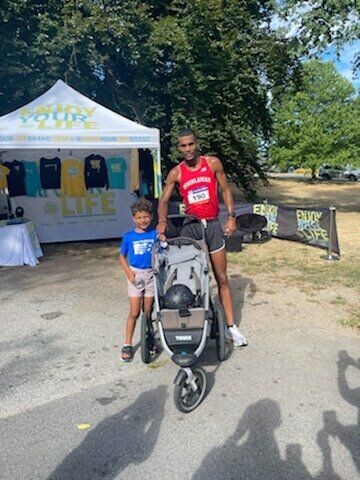
According to an interview with local news, Sança’s said the stroller weighed 25 pounds, so he ran a 4:32 mile while pushing 80 pounds.
Although he broke the world record, he will have to wait to have his record ratified by Guinness. Until ratification, the current Guinness World Record for the stroller mile is held by Taylor Huseman, which he set on a track in March.
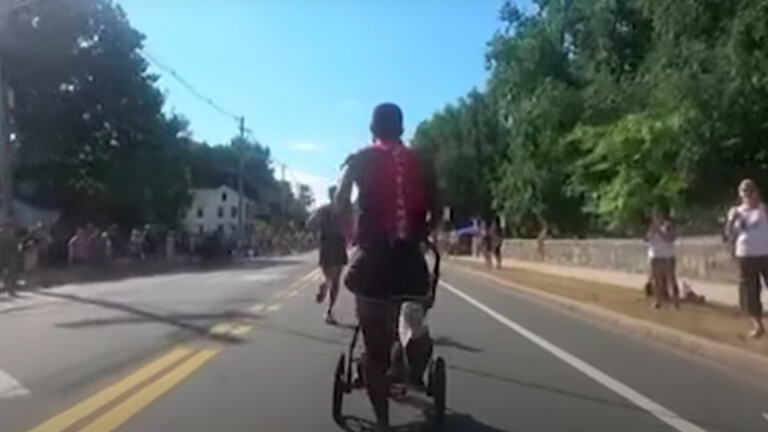
At the 2012 London Olympics, Sança was one of three athletes on the Cape Verdean Olympic team. He competed in the 5,000 metres, finishing 40th overall in the heats.
Sança is the current Cape Verdean record holder in the 3,000m indoors (8:07.50), 5,000m (14:05.39), 5K (14:11) and the marathon (2:18:47).
Drew Piazza of Cambridge, Mass. won the mile in 4:09.3. In the women’s race, Melissa Lodge of Providence, R.I. was the winner in 4:38.5.
(08/12/2022) ⚡AMPby Marley Dickinson
Hodgkinson and Muir lead the British charge in the middle and long distances in Munich 2022
For Keely Hodgkinson, another silver lining would come as nothing close to consolation at the Munich 2022 European Athletics Championships from 15-21 August, part of the wider multisport European Championships from 11-21 August.
Having finished in the runner-up position in the 800m finals at the World Athletics Championships and Commonwealth Games in the past three weeks - and in the Olympic final in Tokyo a year ago, for that matter – the 20-year-old Briton will be on a redemption run for gold in the Bavarian capital.
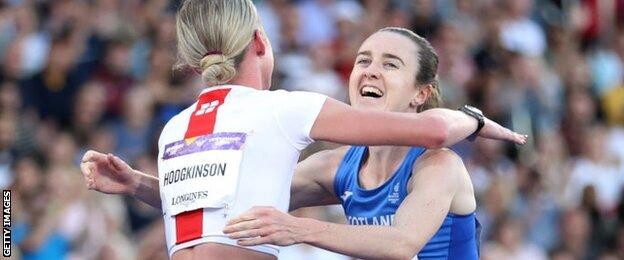
After missing out by a tantalising 0.08 in a titanic home straight tussle with Athing Mu at the World Championships in Oregon on 22 July, Hodgkinson had Commonwealth gold within her grasp on home ground in Birmingham last Saturday (6) until Kenya’s Mary Moraa came charging past halfway down the home straight.
It is a measure of the meteoric progress Hodgkinson has made under the guidance of Trevor Painter and Jenny Meadows that major championship silver medals have come as a disappointment. It was only last year that she made her senior breakthrough, winning the European Indoor title in Torun at the age of 19.
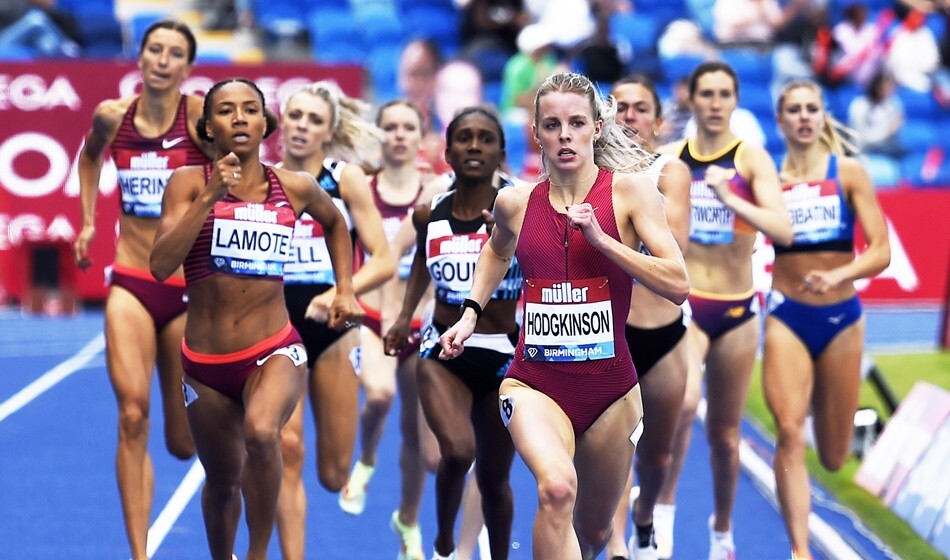
First place in an outdoor European 800m final would be one better than her co-coach managed. Meadows finished second to Yvonne Hak of the Netherlands in Barcelona 2010 albeit after initial winner Mariya Savinova was disqualified for an anti-doping violation.
There have been two British winners of the two-lap event: Lynsey Sharp in Helsinki in 2012 - again retroactively - and the great Lillian Board in Athens in 1969. A third British success in Munich would be a poignant one, given the prodigiously talented Board’s tragic fate.
A 400m silver medalist at the 1968 Olympic Games in Mexico City, she was cruelly cut down by cancer before she had a shot at 800m gold at the 1972 Olympics in Munich. After traveling to Munich in search of a cure, she died in a clinic in the city in December 1970, 13 days past her 22nd birthday.
Second fastest on the 800m entry-list - both in personal and season’s bests - is Hodgkinson’s British teammate Jemma Reekie. The 24-year-old Scot finished fourth in the Olympic final last year but has been struggling for form this summer in the wake of glandular fever, placing fifth in the Commonwealth 1500m final last Sunday (7).
Three other women in the field have run inside 1:59 this year: Slovenia’s former 400m specialist Anita Horvat, who finished a surprise seventh in the World Championships; France’s Renelle Lamote, silver medalist at the last two European Championships; and Elena Bello of Italy.
Switzerland also boasts two potential medal contenders: in 18-year-old world U20 silver medallist Audrey Werro, who clocked 1:59.53 in that race in Cali, and Lore Hoffmann, who narrowly missed out on a place in the final in Oregon.
Ukrainians Nataliya Krol (formerly Pryshchepa) and Olha Lyakhova, who won gold and bronze in Berlin 2018, are also on the entry-list but neither athlete has broken the sub-2:00 barrier so far in 2022.
A fourth major 1500m medal in 12 months beckons for Muir
Hodgkinson’s compatriot Laura Muir defends the 1500m crown she gained in Berlin four years ago in buoyant mood, having collected world bronze and Commonwealth gold at the distance in successive weeks, together with Commonwealth 800m bronze.
The Scot’s closest challengers are likely to be Poland’s fast-finishing Sofia Ennaoui, who took silver behind Muir in 2018 and who showed a timely return to form with fifth place in the Oregon final, and Ireland’s Ciara Mageean, who was an impressive runner-up to Muir in the colors of Northern Ireland in last Sunday’s Commonwealth final.
Another Scot who struck gold on the Commonwealth stage in Birmingham, Eilish McColgan, is entered for both the 5000m and 10,000m in Munich.
A stunning winner of the 10,000m in Birmingham, and silver medalist in the 5000m, the 31-year-old is due to tackle her third championship double in less than a month, having placed tenth in the 10,000m and eleventh in the 5000m at the World Championships.
McColgan, who is preparing to make her marathon debut in London in October, is as indefatigable as her celebrated mother and coach Liz, the 1991 world 10,000m champion, but cumulative championship fatigue could well undermine her – particularly in the 5000m.
Norway’s Karoline Grovdal finished eighth in the World Athletics Championships final and the 2018 steeplechase bronze medalist, who also finished third in the 10,000m in 2016, could start the marginal favorite.
Weakened after a bout of coronavirus, Germany’s Konstanze Klosterhalfen failed to make it beyond the 5000m heats in Eugene but should be in more robust form for her second home European Athletics Championships where she is planning to contest both the 5000m and 10,000m along with Turkey’s Yasemin Can.
Can completed a 5000/10,000m double in Amsterdam 2016 and will be contesting both events again in Munich. Other challengers to McColgan at the longer distance will be fellow Briton Jess Judd - who finished one place behind her, in eleventh, in the World Athletics Championships final - and reigning 10,000m champion Lonah Chemtai Salpeter of Israel who won gold on a brutally hot and humid evening in Berlin four years ago.
Salpeter has set herself a challenging schedule as she will be attempting to defend her European title only one month after winning bronze in the marathon at the World Athletics Championships in Oregon.
(08/12/2022) ⚡AMPEuropean Athletics Champioships Munich 2022
European Championships Munich 2022 will be the biggest sports event in Germany since the 1972 Summer Olympics. From 15-21 August 2022, European sport will be united as its best athletes compete for the highest accolade of their sport on the continent – the title of ‘European Champion’. The second edition of the European Championships will feature nine Olympic sports:Athletics, Beach...
more...When to Return to Training After a Marathon
Completing a marathon is a big accomplishment. But while a lot of effort is put into the preparation leading up to the race, what happens afterward is usually an afterthought. Rarely do we consider how to approach training after a marathon.
Yet, to avoid injury, illness, and overtraining, post-marathon recovery should be an essential part of any good marathon training plan.
From what happens to your muscles to a detailed three-week marathon recovery plan to get you back on track, here’s exactly what you need to keep in mind following the completion of your big race.
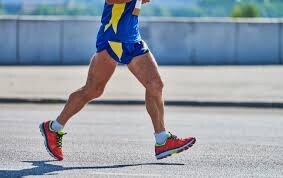
WHAT HAPPENS TO THE BODY
It doesn’t matter if you’ve just run your first marathon or your tenth – 26.2 miles is a long way, and it can be especially hard on your body.
DAMAGE TO MUSCLES AND TENDONS

One of the most obvious factors of that hit-by-a-car feeling that you may get in the days that follow a marathon is the damage that’s done to your muscles and tendons.
In addition to DOMS (delayed onset muscle soreness), which can last a few days, muscle damage can last for several weeks following a marathon because of the extreme effort that it takes to cover the distance:
This study tested the inflammation and fiber necrosis that occurs in the muscles during the race, with results showing that it can take two weeks for muscles to return to normal functioning strength.
On the cellular level, other research has shown that it can take as long as eight to twelve weeks for a regenerative response to occur.
OTHER SYSTEMS OF THE BODY MALFUNCTIONING
While it’s clear that the extreme stress that’s placed on skeletal muscle and tendons during the marathon will require some time to recuperate, your muscles aren’t the only part of the body that may be pushed to the limit:
Yale researchers found that most amateur marathon participants had some form of mild kidney dysfunction following the marathon from stress and dehydration, and it could take days to a few weeks for a full recovery.
The immune system is also compromised in the days that follow due to increases in the stress hormones like cortisol, making you more susceptible to viruses and bacteria for a few days after the race.
While these are certainly not the only systems in the body affected by such a grueling endurance event, they do provide a basis for recovery time in the weeks that follow.
WHY YOU NEED TIME OFF
Even if your body is signaling that it’s time to get back on the road and continue the grind, time off will be needed.
Some runners may feel great a few days after a marathon, while others might feel sluggish for up to a week or two.
Going back to hard training too soon can result in overtraining, increasing your risk of injury or illness. Before rushing back to running, consider the time off you may be forced to take because of injuries like Achilles tendonitis, hamstring strains, or patella-femoral pain syndrome (PFPS) among others. These can easily be avoided by getting the proper amount of rest following the race, which will ultimately result in fewer days off than it would be recovering from an injury.
And even if you do miss the injury bug, continuing with a running schedule immediately following a marathon can result in a decrease in performance in subsequent events. This symptom of overtraining shouldn’t be ignored, as it can continue to wear down the body in ways that can have long-lasting effects.
The long training miles involved in the months leading up to the race can also cause mental fatigue. Though some runners may be able to push past this easier than others, burnout can often occur to even the most seasoned runners.
Taking a break from the sport after a big event is sometimes needed to refresh mentally, and when you eventually return to your training it can have a positive effect on your outlook and perspective, providing just what you need to re-energize for your next big race.
WHAT TO DO IN THE WEEKS THAT FOLLOW
To recover properly following the marathon you’ll need to stick to some tried and true principles. Here’s what you need to do:
DON’T RUN
While a recovery run might sound like a good idea, running the day or two after a marathon is generally not recommended. Instead, concentrate on nutrition, getting plenty of sleep, and taking it easy until you’ve fully recuperated.
There will be plenty of time for more running later on. And for those of you worried about detraining, a week or so with no running isn’t going to significantly impact your cardiovascular fitness.
REWARD YOURSELF
Challenging yourself and completing a marathon takes a lot of hard work and plenty of discipline.
After the race, reward yourself with a good meal.
In the days that follow, think massage, cryotherapy, and hot tubs to relax and let your muscles recover from all that hard work.
DO OTHER ACTIVITIES YOU ENJOY
Even though running might not be a good idea, walking and other low impact active recovery activities – like hiking, cycling, and swimming – can be excellent ways to get your blood flowing and ease those aching muscles after you’ve had a few days of rest.
Just keep things easy and light and concentrate more on having fun and spending time with others rather than turning these activities into serious workouts.
STICK TO A RECOVERY PLAN
Getting back on track and running again can be tricky. Start running too soon and you can risk overtraining or injury. Take too much time off, and your fitness could begin to suffer.
To time it just right and start running again once your body is ready, you’ll need to have a solid strategy: from how much to sleep and eat in week one to building gradually to running again in week two.
If you’re not sure how to go about it, this three-week marathon recovery plan is the perfect guide for newbies and seasoned marathon veterans alike.
If you liked this post, don’t forget to share so that
(08/11/2022) ⚡AMPby Marc Lindsay
One minute mastery: boost speed and endurance in sixty seconds
Get faster, recruit more fast-twitch muscle fibres, and build stronger legs. This simple speed session is a great workout one minute at a time.
Most of us (even pros) run easy most days, with a few days per week working on speed or running long. While both long and short intervals have their place in our speedwork sessions, it can be hard to know what is most effective. This versatile one-minute interval session should have a spot in every runner’s schedule.

The short intervals mean you can run them at a quick pace, but the number of repetitions (increase if you’re training for a marathon or ultra) improve endurance and fatigue resistance as you persevere even after you start feeling tired. You can do anything for one minute, right?
The key to optimizing this workout is managing your speed in the early intervals so that you can pick up the pace as you near the end. It can be tempting to run all-out during those first, short intervals: aim for a 5K-10K pace, and work on keeping pace steady. Run the last few intervals as fast as you can.
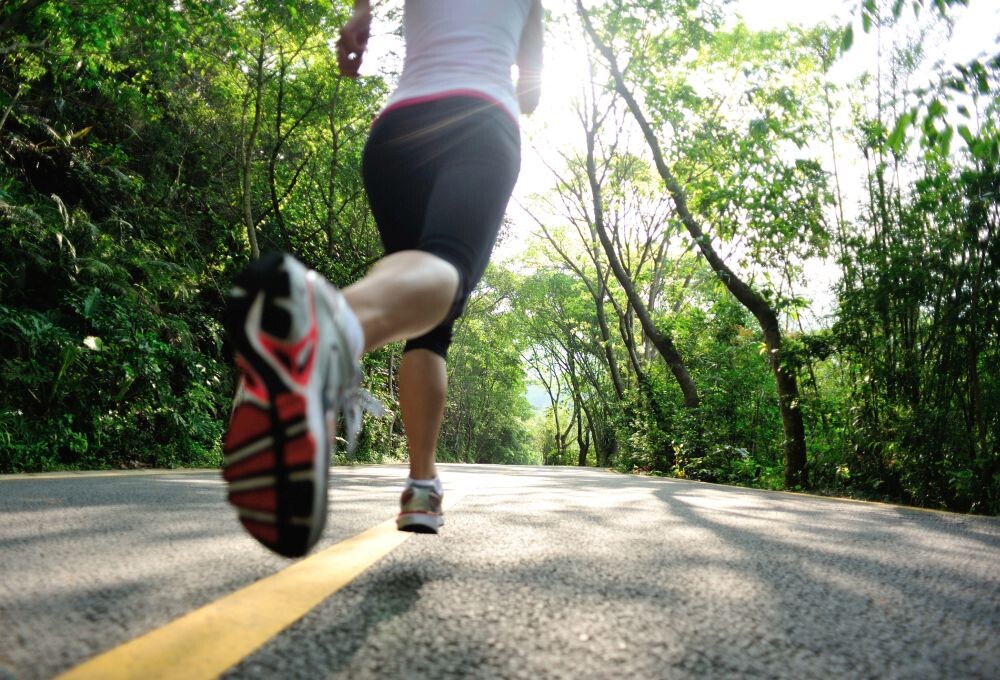
The workout
Warmup
10-15 minutes of easy running, followed by strides or drills
Intervals
10-12 x one minute hard, one minute easy; adjust as necessary
Cooldown
10 minutes of easy running
Don’t feel daunted if you’re a beginner and running one minute at top speed seems too hard. Try shortening the minute intervals to 30 seconds.
If you have a strong base, begin with 12 sets, but if you’re training for a longer distance, you can build up to 15-20 (or more!) sets. Remember that you’re aiming to keep your pace smooth and strong throughout, and to pick it up at the end.
Hydrate well, and make sure to make the day following a hard running session an easy or recovery day.
(08/11/2022) ⚡AMPby Running Magazine
World Championships Medalists Gotytom Gebreslase, Lonah Chemtai Salpeter, and Hellen Obiri to Join Women’s Field at 2022 TCS New York
Sara Hall, Emma Bates, Aliphine Tuliamuk, Des Linden, Nell Rojas, and Stephanie Bruce to anchor star-studded contingent of American women.
World Championships medalists Gotytom Gebreslase of Ethiopia, Lonah Chemtai Salpeter of Israel, and Hellen Obiri of Kenya will join previously announced New York City and Olympic champion Peres Jepchirchir in the women’s professional athlete division at this year’s TCS New York City Marathon on Sunday November 6. All three will make their TCS New York City Marathon debuts, with Obiri making her 26.2-mile debut across any course, and will line up against a star-studded contingent of American women that includes Sara Hall, Emma Bates, Aliphine Tuliamuk, Des Linden, Nell Rojas, and Stephanie Bruce. The 2022 TCS New York City Marathon women’s professional athlete field is presented by Mastercard®.
Women’s Open Division
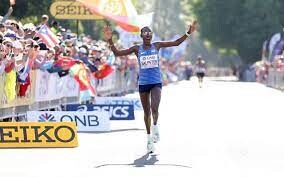
Fresh off her victory at the world championships marathon, where she finished the course in a championship-record time of 2:18:11, Gebreslase will make New York City her next stop. She will look to add a five-borough title to her resume, having previously won the 2021 Berlin Marathon and finished third at the 2022 Tokyo Marathon.
“Winning the World Championships was like a dream, and I am honored to run my next marathon in New York City,” Gebreslase said. “It’s home to the biggest marathon in the world, and many of the top athletes have run there. I understand it’s a challenging course, and I’m looking forward to seeing further success there.”
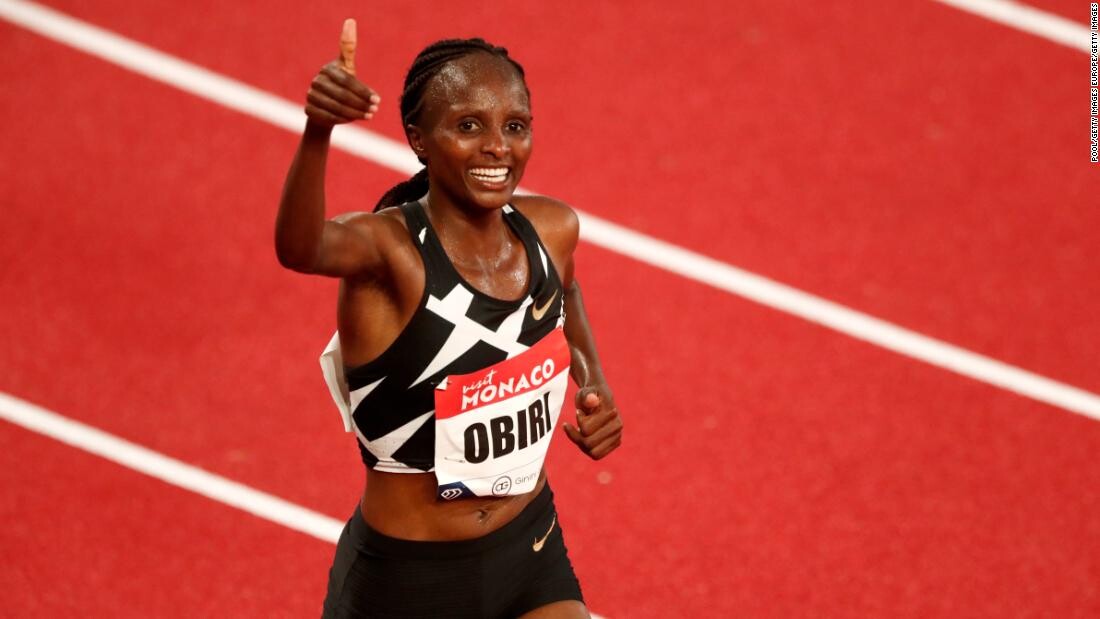
Two-time Olympian Salpeter, a Kenyan-born Israeli who won the bronze medal at the world championships marathon and was the 2020 Tokyo Marathon winner, will challenge Gebreslase once again. Obiri, a two-time Olympic medalist and seven-time individual world championships medalist, will make her highly anticipated marathon debut shortly after winning a world championships silver over 10,000 meters.
“I’m very excited to make my marathon debut at the TCS New York City Marathon,” Obiri said. “I have watched the race many times on TV and have seen my Kenyan colleagues compete there. I know New York is a tough course, but I hope my experience on track, road, and cross-country will help me navigate the ups and downs. I also plan to get advice and tips from coach Dathan Ritzenhein, who competed in the race several times in the past.”
In addition to Jepchirchir, the group will be racing against Ethiopia’s Senbere Teferi, who will look to become the first athlete to win the United Airlines NYC Half, Mastercard New York Mini 10K, and TCS New York City Marathon in one year. Three other Kenyans will also be strong contenders for podium places, including the 2010 New York City, 2014 London and 2017 Boston Marathon champion Edna Kiplagat, last year’s runner-up Viola Cheptoo, and newcomer Sharon Lokedi.
The American effort will be led by 10-time national champion Hall, who was the top world championships marathon finisher from the U.S. last month in Oregon, where she placed fifth. She is also the former half marathon national record holder, the runner-up from the 2020 London Marathon, and a two-time winner of the Mastercard New York Mini 10K. She will be joined at the Staten Island start line by Bates, who clocked a personal best to finish seventh at the world championships and was the runner-up at last year’s Chicago Marathon.
“From winning the Millrose mile to back-to-back Mini 10K wins, most of my favorite career moments have happened in NYC,” Hall said. “I’m all-in to add to that by having my best marathon yet at the TCS New York City Marathon. I can’t wait to be back racing my heart out in the five boroughs of my favorite city.”
Tokyo 2020 Olympian Aliphine Tuliamuk, and two-time Olympian and 2018 Boston Marathon champion Des Linden, will also return to New York, as will national champion Stephanie Bruce, who will race the five boroughs for the final time before retiring. The deep U.S. women’s group will additionally include Nell Rojas, the top American finisher from the last two Boston Marathons, Lindsay Flanagan, the top American finisher from the 2022 United Airlines NYC Half, Annie Frisbie, last year’s seventh-place finisher, and her training partner Dakotah Lindwurm, who won Grandma’s Marathon in June. Emily Durgin, the sixth-fastest U.S. half marathoner of all-time, will make her marathon debut.
(08/11/2022) ⚡AMPby Running USA
TCS New York City Marathon
The first New York City Marathon, organized in 1970 by Fred Lebow and Vince Chiappetta, was held entirely in Central Park. Of 127 entrants, only 55 men finished; the sole female entrant dropped out due to illness. Winners were given inexpensive wristwatches and recycled baseball and bowling trophies. The entry fee was $1 and the total event budget...
more...Here’s why yin yoga is perfect for runners, try these three poses tonight
The ability to withstand discomfort, stronger bones, and fascial release (fascia is the connective tissue that runs from our tongues to the bottoms of our feet) are all perks of making yin yoga a regular practice. If you’re a runner, yin is the ideal counterpart to your weekly speedwork and long runs. Not only will it release tight areas, but it builds mental strength to tackle adversity.
Most runners like to get their sweat on: you feel satisfied after you know you’ve put in a good workout. It’s why it’s so challenging to get runners to reap the benefits of running slowly, and it also may be why you haven’t tried yin yoga yet.

The well-known yoga styles taught in power, flow or hot yoga classes appeal to the athlete who want some extra heart rate elevation in their life. Those styles have a more esthetic focus, whereas yin is increasingly science-based.
Paul and Susan Grilley, two leaders of yin in North America, have done extensive work with cadavers and studied bone variation to determine how yin can best serve a wide variety of people. In yin, it doesn’t matter what your pose ‘looks’ like; you’re going after the desired effect.

We have three foundational poses for you to try tonight. Find a comfortable, quiet spot, grab a few cushions and a stack of books as props and settle in. Yin poses are traditionally held for up to 10 minutes–aim for three, to start, and adjust if you feel pain or numbness. If you feel merely uncomfortable? Dig in.
In yin, much like in running, some discomfort is a good thing: it means the work is being done.
Seated butterfly
From a seated position, bring the soles of your feet together and then slide them away from you. Allowing your back to round, fold forward, lightly resting your hands on your feet or on the floor in front of you. Your head should hang down toward your heels. Relax your face, slow your breath, and allow your body to soften into the pose.
Why
Butterfly pose stretches the lower back without requiring loose hamstrings. If the legs are straighter and the feet are away from the groin, the hamstrings will get more of a stretch. If the feet are closer to the groin, the adductor muscles (along the inside of the thigh) get more of a stretch. Play around with positioning to find the spot where you feel a deep stretch.
Supported bridge pose
Start on your back with your knees bent. Lift the hips high enough to slide a block, bolster, or the homemade equivalent (some firm pillows or several books) under the pelvis. Make sure the support is under the pelvis and sacral area, and not under your low back.
Why
This pose releases tension in the sacrum and lower back. If you bring your arms overhead, you’ll also experience a stretch in the arms and shoulders. For many students, having the arms overhead also creates a nice stress in the lower belly. You may also feel this in your hip flexors (muscles toward the front of the hip).
Dragon pose
Step your left foot forward, slightly wider than your hips, planting your hands or forearms inside your left leg on the floor. Hold, then repeat on the other side. You can try different variations of this pose, taking forearms right to the floor to increase tension, or placing hands on the floor for support.
Why
This pose targets the hip flexor of the back leg. Running can cause tight hip flexors, which then pull on other areas of the body. You’ll also feel this pose in the inner thigh and groin of the leg that is in front, areas that are vital for your knees’ stability.
Remember to gently release each pose after you’ve held it for a few minutes, and spend a few moments in stillness before the next posture. After you’ve completed your poses, release your entire body and let everything relax as you enjoy blissful savasana (corpse pose), the traditional end to any yoga practice.
(08/11/2022) ⚡AMPby Keeley Milne
Kenya’s Hellen Obiri is moving to Colorado to pursue her marathon ambitions
When Hellen Obiri moves 14,000 kilometers from Kenya to Colorado later this year, she already knows she'll miss some of the comforts of home.
That includes Kenyan food and the country's staple of ugali -- a dense porridge made from maize flour.
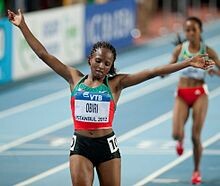
"Kenyans, we like eating ugali," Obiri tells CNN Sport. "I will have to find where I'm going to make my Kenyan food over there (in the United States)."
A good ugali may hold the keys to successfully fueling the next steps of her distance-running career. Obiri, a two-time world champion over 5,000 meters, is racing her first ever marathon in New York later this year, ahead of which she will team up with a new coach and new training group in Boulder, Colorado.
It's common for distance runners to make the move from track to road racing towards the end of their careers, but less common to do so by moving halfway across the world in the way Obiri has planned.
At the start of this year, the 32-year-old joined On Athletics Club (OAC), an elite team based in Boulder and led by former distance runner Dathan Ritzenhein. She hopes to move to the US next month in advance of racing the New York City Marathon on November 6.
"We've been wanting to move to the USA for training and to live there, so for me it's not a difficult move," Obiri, who will be based outside Kenya for the first time in her career, tells CNN.

"I think as an athlete and for my family, I want to move there to acclimatize well as soon as possible ... It will take me two weeks at least to get used to it and catch up with my training.
Boulder's high-altitude, rolling trails and temperate climate make it an ideal location for distance runners. There, Obiri will join a relatively new team in OAC, which was launched by the Swiss sportswear brand On in 2020.
Under Ritzenhein's guidance, Obiri has already started her marathon program and this week increases her training load from 180 to 200 kilometers of running per week. She begins the next chapter in her career having established herself as one of the best 5,000 and 10,000-meter runners in the world over the past five years.
Just last month, she won a silver medal in the 10,000m at the World Athletics Championships -- clocking a personal best of 30 minutes and 10 seconds -- and has won 5,000m silver medals at the past two Olympic Games to go alongside her two world titles in the event.
'It showed me how strong our bodies can be,' says amputee athlete Jacky Hunt-Broersma after running 104 marathons in 104 days
Her debut in New York will be the first indicator of how Obiri's track-running pedigree translates over the 26.2 miles of the marathon.
"I can't say I'm going to target this time or this time -- it's my debut," she says. "I can't say maybe I want to do sub 2:20, 2:25 because I know the New York Marathon is a tough course, especially the second half."
Starting on Staten Island, the challenging course undulates through New York's five boroughs before finishing down Fifth Avenue and into Central Park.
"For me, I want to train well because it's my debut, and for sure, I'm looking forward to running a good race -- I'm looking forward to running my own race with no pressure and to finish well," Obiri adds.
She says she will miss racing her favorite distance of 5,000m but won't fully hang up her track spikes with the switch to marathon running.
"You can't move up to the marathon without speed," Obiri explains, adding that she hopes to stay sharp by competing in 5,000m races in Kenya next year.
The immediate focus, however, is on getting settled with her family in the US. Obiri hopes, visa-depending, that her seven-year-old daughter, Tania, will move in time to watch the race in New York.
"She's going to be so excited to go outside the country," says Obiri. "She actually watches most of my races and she's so excited about me winning some races over there.
"When I'm out at a race, she knows mommy's not around, mommy's going out there to do some work. She actually calls me and says: 'Mom, do your best and be number one.' She always wants me to be number one."
Obiri's daughter won't be the only one holding high expectations at the NYC Marathon. Kenyan athletes have dominated the event over the past decade with eight winners in the women's race since 2010, and those watching back home will be hoping Obiri can add to that legacy.
But regardless of how she performs, when she winds her way through New York's five boroughs in November, Obiri will signal the start of a new stage in her running career and a new adventure for her family.
(08/10/2022) ⚡AMPby George Ramsay
TCS New York City Marathon
The first New York City Marathon, organized in 1970 by Fred Lebow and Vince Chiappetta, was held entirely in Central Park. Of 127 entrants, only 55 men finished; the sole female entrant dropped out due to illness. Winners were given inexpensive wristwatches and recycled baseball and bowling trophies. The entry fee was $1 and the total event budget...
more...America's Heather MacLean runs sub four minute 1500m in Monaco
Heather MacLean became the 12th American woman ever to break 4:00 in the 1500m today in Monaco, running 3:58.89. When she finished out her collegiate eligibility at UMass in 2018, she was a 4:19.19 1500m runner.
The Monaco track is known for its speedy middle-distance performances and in the women’s 1500m Faith Kipyegon came within three tenths of a second of breaking Genzebe Dibaba’s world record with 3:50.37.
Allie Wilson led through 400m in 59.89 and 800m in 2:01.64 before Adelle Tracey took over to keep the pace as hard as possible. Kipyegon hit the front with 600m to go and despite hammering the final lap she fell agonisingly short of the mark but still went No.2 on the all-time rankings.
America's Heather Maclean (3:58.89) and Elise Cranny (3:59.06) were second and third with sub-four performances.
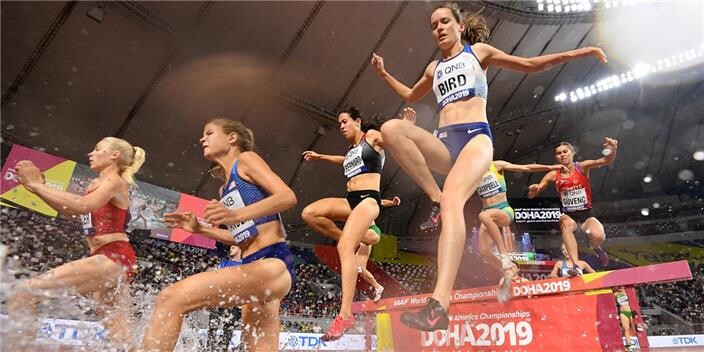
“I have been chasing the time for quite some time but I am happy with the personal best,” the Olympic and world champion said. “I knew this was the best place to get the world record but I am so disappointed I lost it in the last metres. I hope for the best next time. We will see when.
“I was definitely ready for it today. I am heading home now and want to get a good Diamond League final in Zurich.”
It was a first class track meet. World champion returns to winning ways at the Diamond League while fellow Brit Lizzie Bird smashes the national 3000m steeplechase record
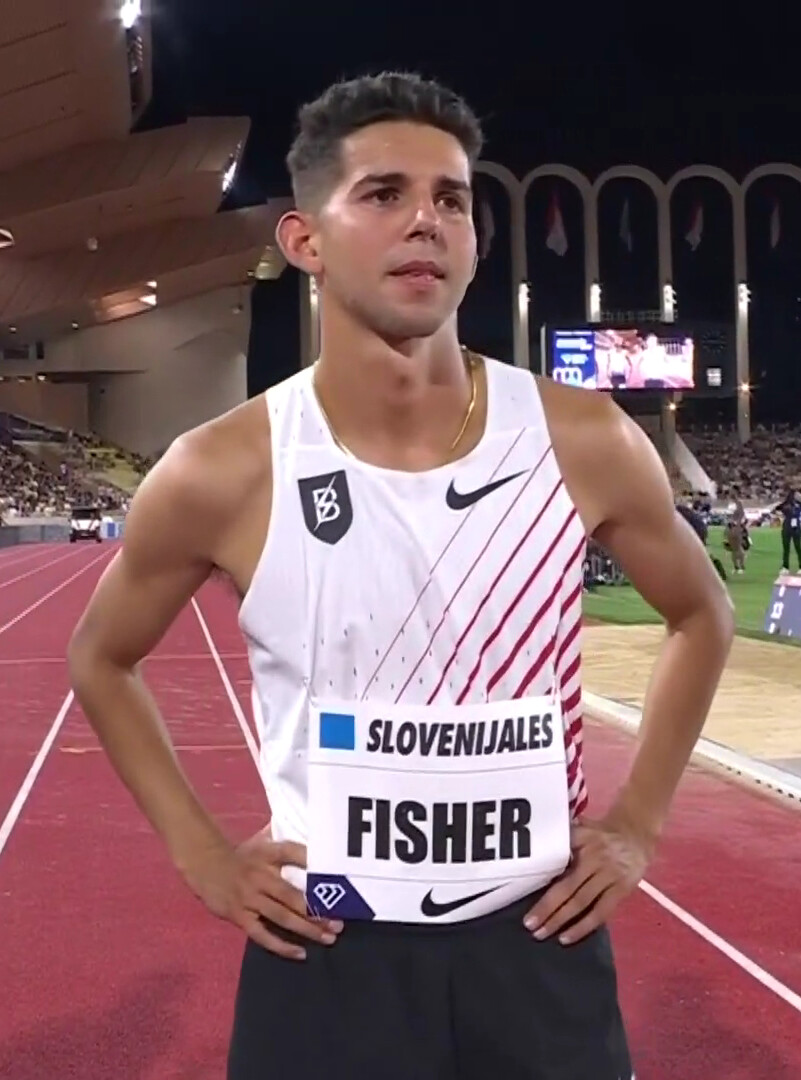
Jake Wightman bounced back to form after his defeat at the Commonwealth Games by taking the 1000m at the Diamond League in Monaco on Wednesday (Aug 10).
The world 1500m champion destroyed many of the world’s top 800m runners over the neutral distance of one kilometre as he improved his Scottish record from 2:16.27 to 2:13.88 to go No.3 on the UK all-time rankings and No.9 on the world all-time lists.
Seb Coe’s long-standing UK record of 2:12.18 remains an elusive target and Steve Cram is No.2 all-time with 2:12.88 but Wightman has now overtaken Steve Ovett and James McIlroy on the rankings.
In Monaco the pacemaker Erik Sowinski led through 400m in 51.02 and Marco Arop was in pole position through 800m in 1:45.46, but Wightman, who spent much of the race running alone in no man’s land a few metres ahead of the main pack, finished strongly to pass Arop in the final metres as Clayton Murphy was third, Commonwealth 800m champion Wycliffe Kinyamal fourth and the Olympic and world 800m champion Emmanuel Korir 12th.
“I did not really know I was in shape to do this today. It was just very, very hard as I had run on my own,” said Wightman. “I knew Arop is a little bit quicker on the home straight so I had to judge the right moment. I had to stay strong to be able to catch him.”
Wightman steps down to the 800m at the European Championships next week and said: “This is a really nice step towards Munich. The main difference between the 1500m and 1000m is just the speed of the first couple of laps. You go from running 55s to 52.”
Lizzie Bird smashed the British record for 3000m steeplechase as she improved Aimee Pratt’s national mark by almost eight seconds to 9:07.87.
Pratt set a British record twice at the World Championships last month as she ran 9:18.91 in her heat and 9:15.64 to place seventh in the final. But Bird ran 9:17.79 to take silver at the Commonwealth Games and here in Monaco swiped a further 10 seconds off her best as she pipped former world champion Emma Coburn at the finish to place third behind Ethiopia duo Workua Getachew and Zerfe Wondemagegn.
Bird, 27, was encouraged to try the steeplechase while studying at Princeton in the United States. She was a reluctant steeplechaser at first and suffered injuries from 2016-18 but set a UK record of 9:19.68 when placing ninth in the Olympics last year and the Shaftesbury Barnet athlete is now closing in on the nine-minute barrier while combining athletics with a career in immigration law based in Colorado.
There is more: Distance runner Grant Fisher’s record-breaking 2022 season continued tonight at the Herculis meeting in Monaco where he ran 7:28.48 for 3000 meters, finishing 3rd, to break Bernard Lagat’s 7:29.00 American record which had stood since 2010.
Fisher’s 3000 record is his third American record of the year as in February he set the indoor 5000 record (12:53.73) and outdoors he set the American 10,000 mark in March(26:33.84).
(08/10/2022) ⚡AMP
Anthony Cortes won his third official Double Racing event over the last eight months
Anthony Cortes (first photo) from Half Moon Bay, California won his third straight Double Racing event August 7 in San Francisco. He clocked 25:21 for the Double 8k.
Double racing veteran Jose Pina was just 23 seconds behind in second place. Anthony had won the 5k (15:59) and Jose did close the gap by four seconds running at 4:59/mile pace but not enough to over take Anthony. Times from the two legs of a Double are added together for scoring.
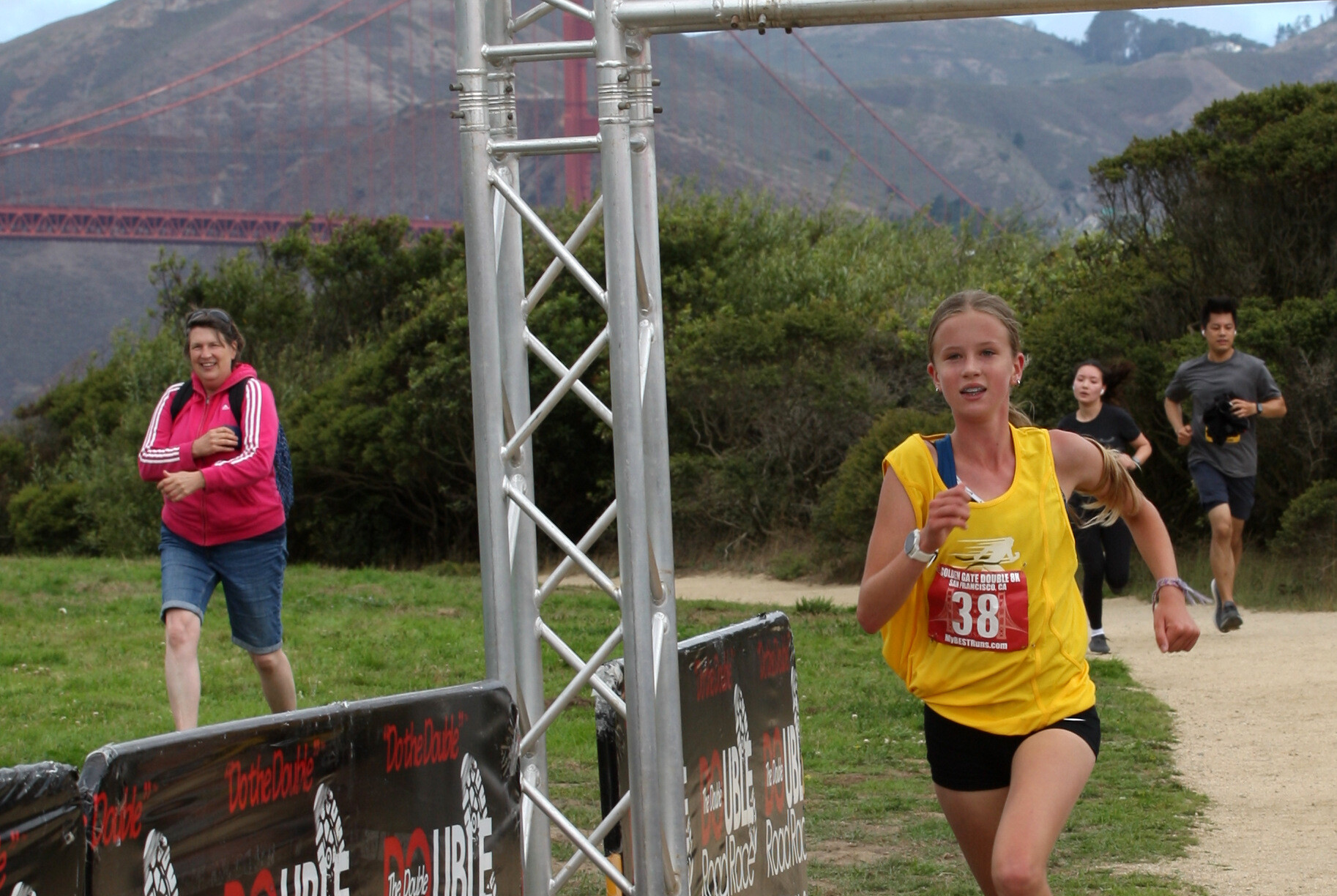
Participants in the Double 8k first ran 5k at 8:20am and then 3k at 9:35am. The runner (male and female) who wins the first leg wears the yellow jersey in the second leg so everyone knows who they need to beat in the second leg.
In the female division 14-year-old Evey Powell (second photo with her mom in red cheering her on) from England blew away the field clocking 30:31. 7th best time ever. Her 12-year-old sister won the open 5k clocking 22:05 earlier in the day.
71-year-old Sharlet Gilbert from Richmond, California clocked 44:29 to win the 70 plus division. This is the second fastest time for this divison. She set the record in 2021 clocking 43:38 on the same course.
The best time ever for the Double 8K was clocked Sept 6, 2015 in Nyahururu, Kenya. 17-year-old Eligah Kariuki from Kenya posted 23:33. Kristen Rohde (USA) holds the women's record clocking 27:34 in Palo Alto, Califonria Feb 19, 2017.
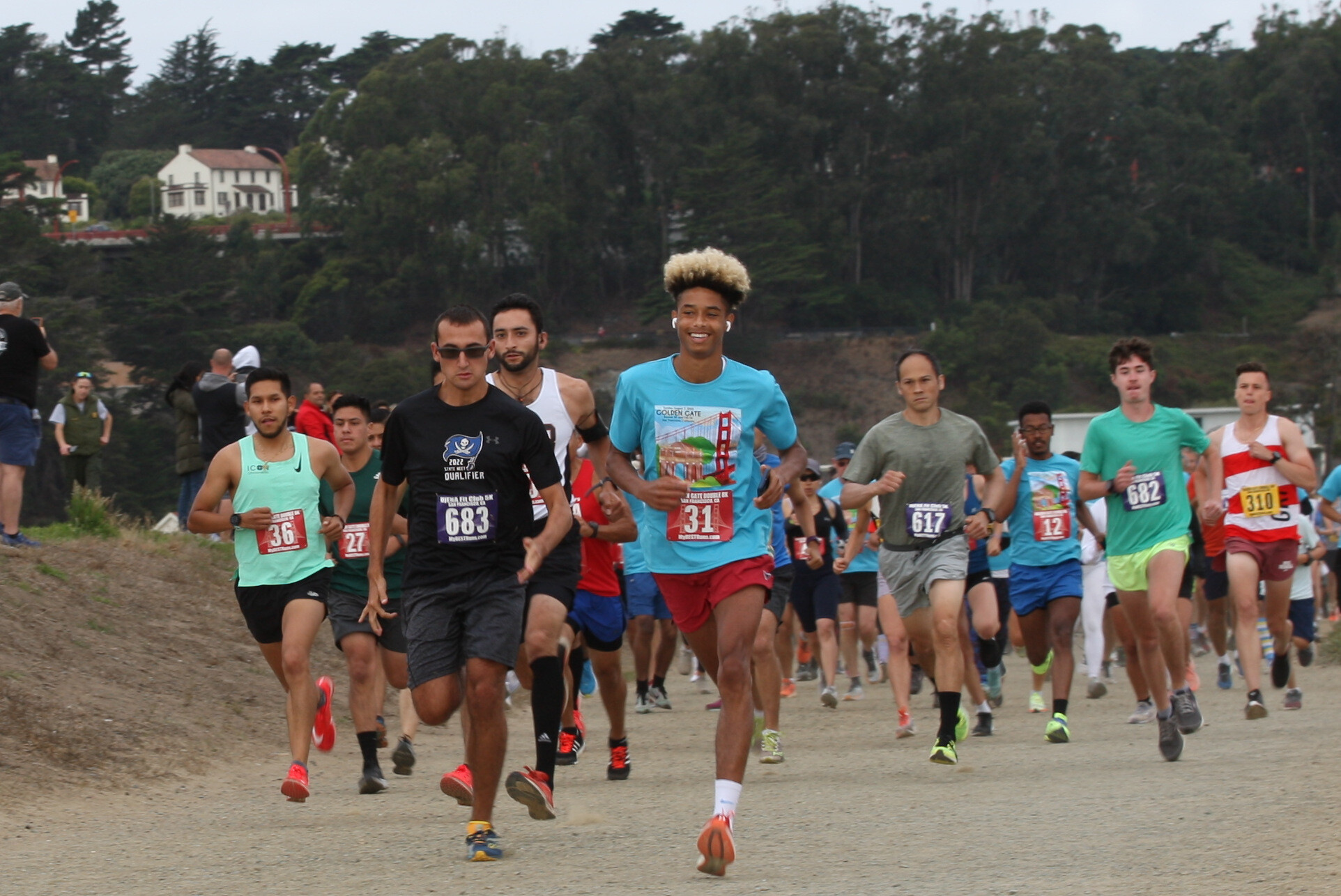
At most Double Racing events there are also open races. At this recent event there was also the Golden Gate 10k and 5k run/walk.
Nina Zarin’s from Arlington Va was the overal winner in the Golden Gate 10k clocking a blistering 35:59. First male was Noah Gonzalez clocking a solid 37:36.
18-year-old Dominic Robles won the Golden Gate 5k clocking a fine 16:54.
"What a fun morning we had in San Francisco August 7. The weather was perfect for our sold out field," said race director Bob Anderson.
This was an official Double Racing event sanctioned by the Double Road Race Federation (DRRF) which was founded in 2010 when the sport was created. Over 150 events have already been held in six countries.
There are four official Double Racing events: Double 5k (3k+break+2k), Double 8k (5k+break+2k), featured event Double 15k (10k+break+5k) and Double 21k (15k+break+6k). Stats, records and more details can be found on the website DoubleRoadRace.com
The next Double Racing events scheduled are: Palo Alto Californiua Dec 17 (Double 15k), Brisbane California (Double 15k) March 2023 and Golden Gate August 6, 2023.
"If you would like to set up an official Double Racing event get in touch," says Double Racing creator Bob Anderson.
My Best Runs is the official sponsor of the DRRF.
(08/10/2022) ⚡AMPGolden Gate 10k/5k DOUBLE 8K
The Golden Gate courses offers unparalleled views of the Golden Gate Bridge for more than 80% of the way! The course will begin at historic Crissy Field near the Presidio of San Francisco. Runners will enjoy the gorgeous vistas of the Golden Gate National Recreation Area. We are offering three races: Golden Gate 10K and 5K (run/walk) and Golden Gate...
more...Olympic champions Ingebrigtsen and Warholm to defend European titles in Munich
Jakob Ingebrigtsen and Karsten Warholm will spearhead Norway’s team for the Munich 2022 European Athletics Championships from 15-21 August, part of the wider multi-sport European Championships in the Bavarian capital from 11-21 August.
Ingebrigtsen famously broke through at the 2018 European Athletics Championships in Berlin where he won an unprecedented 1500m and 5000m double on back-to-back nights at the age of 17.
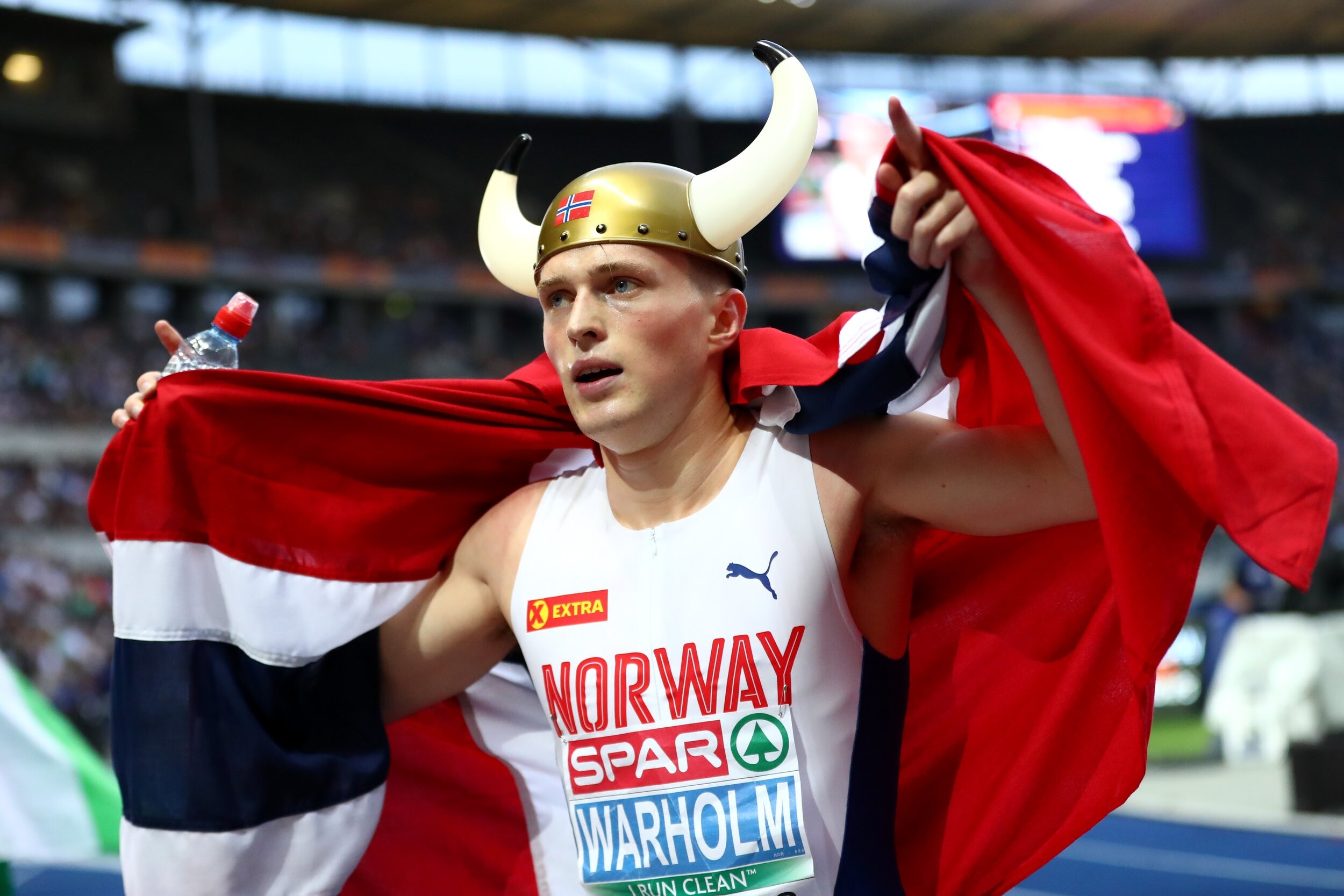
Now 21, Ingebrigtsen is the reigning Olympic 1500m champion and arrives fresh from winning the 5000m title at the World Athletics Championships in Oregon. He also holds the European records in both events.
Ingebrigtsen looks set to defend both his 1500m and 5000m titles in Munich and the timetable is amenable to such a double. The 5000m final is scheduled for 16 August with the 1500m final due to take place two nights later on 18 August.
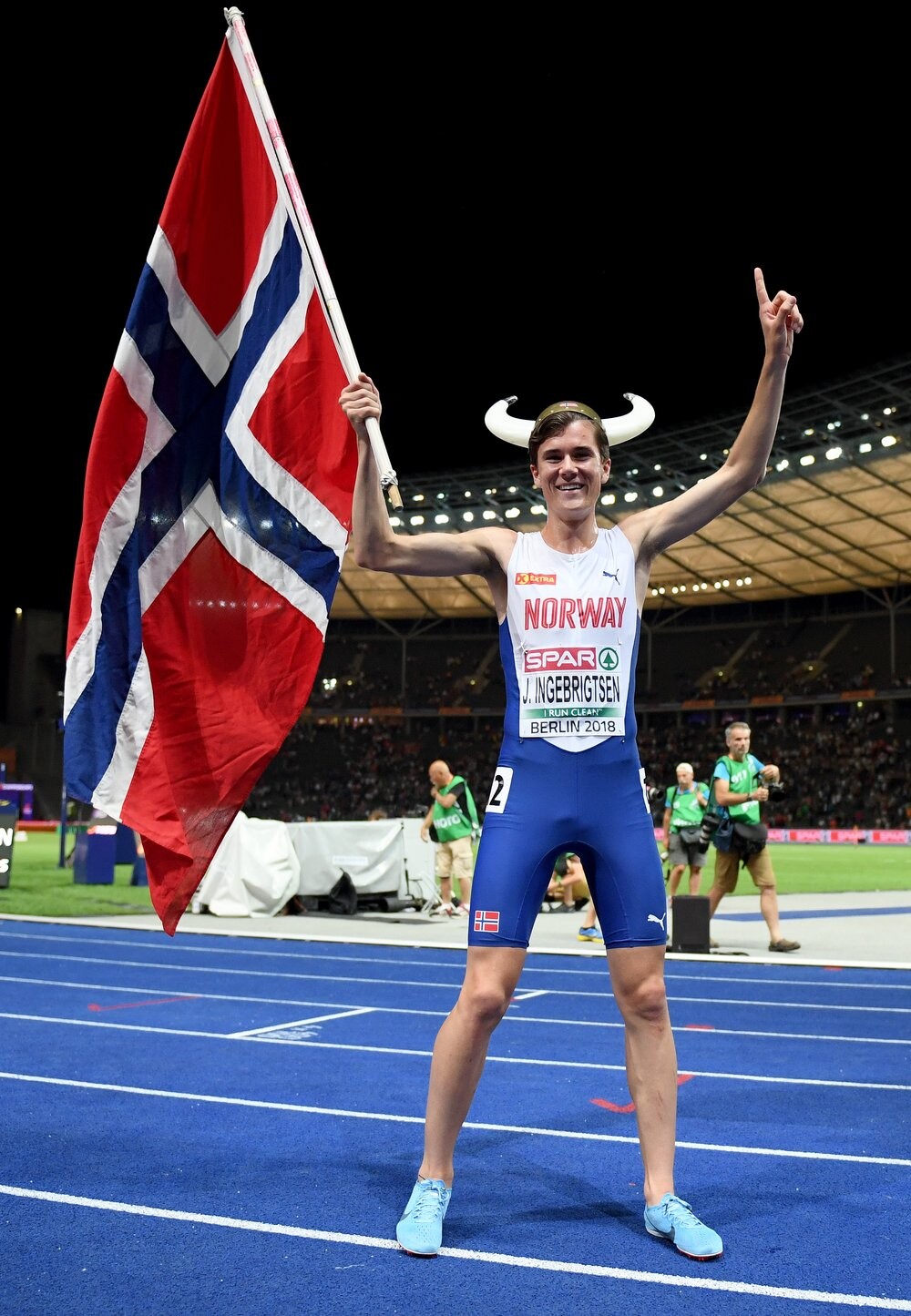
Warholm will be seeking to become the first athlete since the great Harald Schmid in 1986 to win back-to-back European titles in the 400m hurdles.
The world record-holder’s season has been disrupted by a thigh injury which he sustained on his season’s opener in the Rabat Diamond League but Warholm has battled back to fitness and put up a staunch defence of his world title in Oregon where he finished seventh.
The Norwegian team also features reigning Olympic hammer silver medallist Eivind Henriksen and European 3000m steeplechase bronze medallist Karoline Bjerkeli Grøvdal who has registered for the 1500m, 5000m and 10,000m.
There will be high expectations in both pole vault competitions as well. Brothers Sondre and Simen Guttormsen form a strong triumvirate in the men's pole vault competition alongside Pal Haugen Lillefosse while Lene Retzius will be a medal contender in the women's pole vault having improved the Norwegian record to 4.70m this season.
Norway won three gold medals at the 2018 European Athletics Championships in Berlin and finished eighth overall on the medal table.
(08/10/2022) ⚡AMPEuropean Athletics Champioships Munich 2022
European Championships Munich 2022 will be the biggest sports event in Germany since the 1972 Summer Olympics. From 15-21 August 2022, European sport will be united as its best athletes compete for the highest accolade of their sport on the continent – the title of ‘European Champion’. The second edition of the European Championships will feature nine Olympic sports:Athletics, Beach...
more...Hosts Germany to send 112 athletes to Munich 2022
Host nation Germany will be represented by 112 athletes at the Munich 2022 European Athletics Championships from 15-21 August which forms part of the wider multisport European Championships from 11-21 August.
The team is spearheaded by reigning long jump champion Malaika Mihambo who has won every major outdoor championship since striking gold in Berlin 2018.
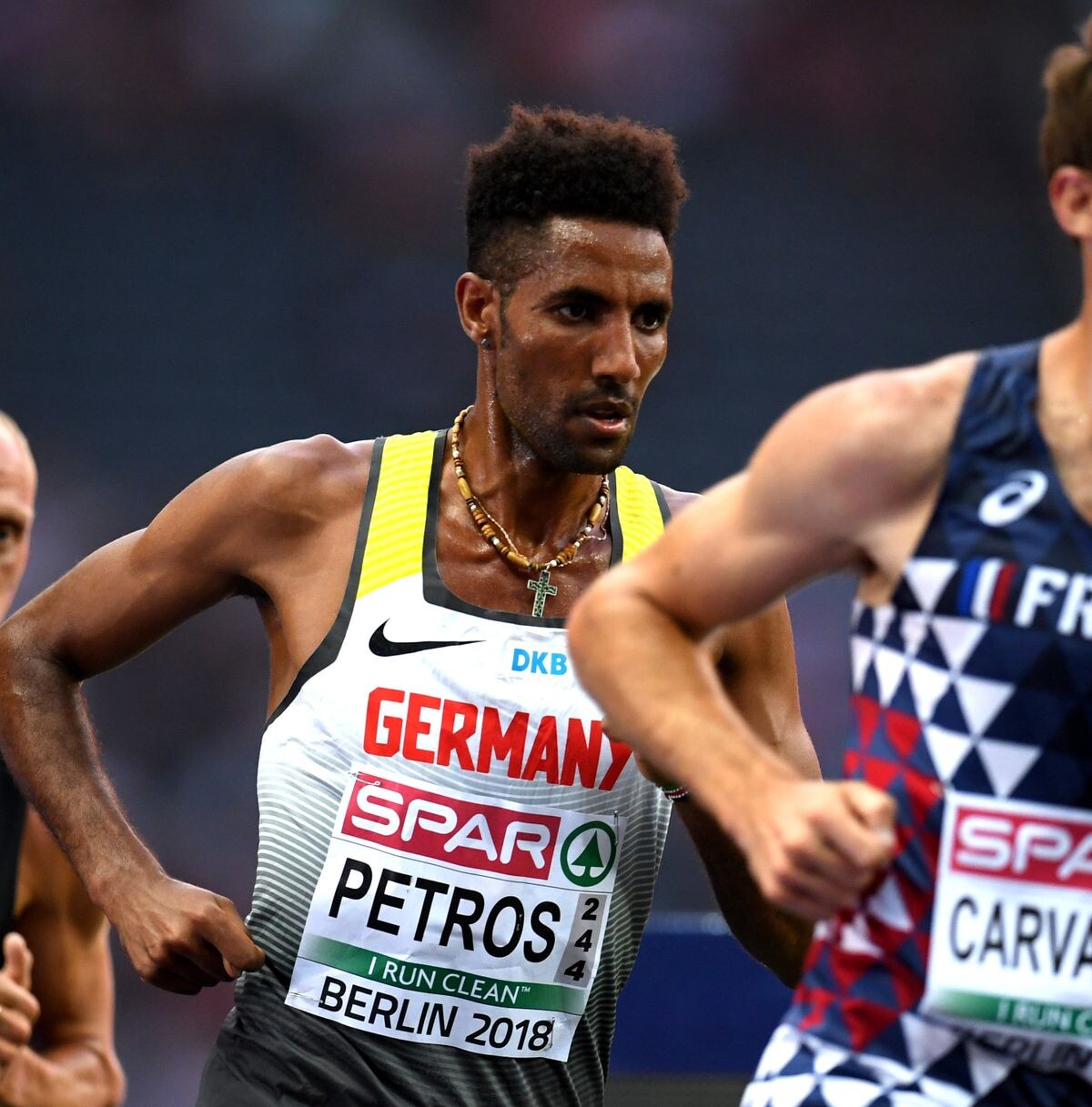
Fellow Berlin 2018 gold medallists Mateusz Przybylko (high jump), Thomas Rohler (javelin) and Arthur Abele (decathlon) have also been selected although reigning women’s javelin champion Christin Hussong and two-time European 3000m steeplechase champion Gesa Felicitas Krause have been ruled out.

Germany finished third on the medal table at the Berlin 2018 European Athletics Championships although the home contingent did accrue the most number of medals, accruing 19 medals across the programme.
(08/10/2022) ⚡AMPEuropean Athletics Champioships Munich 2022
European Championships Munich 2022 will be the biggest sports event in Germany since the 1972 Summer Olympics. From 15-21 August 2022, European sport will be united as its best athletes compete for the highest accolade of their sport on the continent – the title of ‘European Champion’. The second edition of the European Championships will feature nine Olympic sports:Athletics, Beach...
more...Aliphine Tuliamuk will make marathon return at 2022 New York City Marathon
For Aliphine Tuliamuk, the decision to run in the 2022 TCS New York City Marathon was a no-brainer. The 33-year-old ran the event back in 2019, finishing 12th, and she never thought it would take three years before a return trip to Staten Island’s start line.
“It was not even, you know, a matter of if – it was just when can I get to New York? So, it was not even a decision. Easy,” explains the Kenyan-born American long-distance runner, who made a name for herself in February 2020 when she won the U.S. Olympic Marathon Trials.

But the Covid-19 pandemic hit immediately after her Trials win, postponing the Olympics and canceling that year’s edition of the NYC Marathon. During the forced hiatus, she started a family with partner – now husband – Tim Gannon, welcoming daughter Zoe in January 2021. Injury struck later that year while she was training for the postponed Tokyo Olympics, and Tuliamuk withdrew about 20k into her Olympic debut with severe hip pain and hasn’t competed in a marathon since.
Her return to marathon competition has Tuliamuk fired up, both literally and figuratively.

“I’m faster than I’ve ever been before,” she recently told On Her Turf. “And it kind of makes me excited and nervous to see what (the) New York City Marathon brings, because this is going to be the first time I am actually going to complete a marathon since the 2020 Olympic Trials. That’s like, almost three years. So it’s going to be super exciting.”
Tuliamuk won’t have to wait until November, however, to enjoy a visit to the Big Apple. She’ll lace up her sneakers this Saturday, Aug. 13, as a “running buddy” to the young women who participate in the New York Road Runners (NYRR) Run for the Future program. The free, seven-week program introduces 11th- and 12-grade female high schoolers to the sport of running and culminates with this weekend’s NYRR Percy Sutton Harlem 5K.
“Running transformed my life into the life that I have today,” she explains. “I mean, without running I wouldn’t be where I am today. And to know that these girls did not have running experience before, they knew nothing about running, and then they were able to get into running through New York Road Runner feeder program, and now they will be graduating, and I get to run with them? I think that’s just incredible.”
The opportunity comes with an extra layer of “grateful” after Tuliamuk’s most recent injury. She sustained a concussion in February after slipping while training in icy, snowy conditions. She also suffered headaches and temporary memory loss, both of which subsided after about a week but left a lasting impression.
“It just gives you a perspective that like your life could literally, in a second, just turn and be something else,” she says. “This is just me being dramatic, but I could have forgotten completely. And the life that I had would have been something like a past life. I think after that, I was like, ‘Okay, I’m going to try to live life to the fullest.’ I’m going try to be present as much as I can, because you just never know.”
(08/10/2022) ⚡AMPby Lisa Antonucci
TCS New York City Marathon
The first New York City Marathon, organized in 1970 by Fred Lebow and Vince Chiappetta, was held entirely in Central Park. Of 127 entrants, only 55 men finished; the sole female entrant dropped out due to illness. Winners were given inexpensive wristwatches and recycled baseball and bowling trophies. The entry fee was $1 and the total event budget...
more...Three-time champion Philemon Rono will defend title at TCS Toronto Waterfront Marathon
Kenya native Philemon Rono will return to the 2022 TCS Toronto Waterfront Marathon, Canada Running Series (CRS) announced Tuesday. Rono holds the all-comers record of 2:05:00, from 2019, when he won the race for the third time. He has one goal for his return this year: to win.
“My aim when I come to Toronto is to do another fantastic job and to be known as the ‘King of Toronto,” he said. In 2020, Rono ran his second fastest time in Valencia in 2:05:37, and finished 6th in the 2022 Seoul Marathon in 2:07:03 in April of this year.
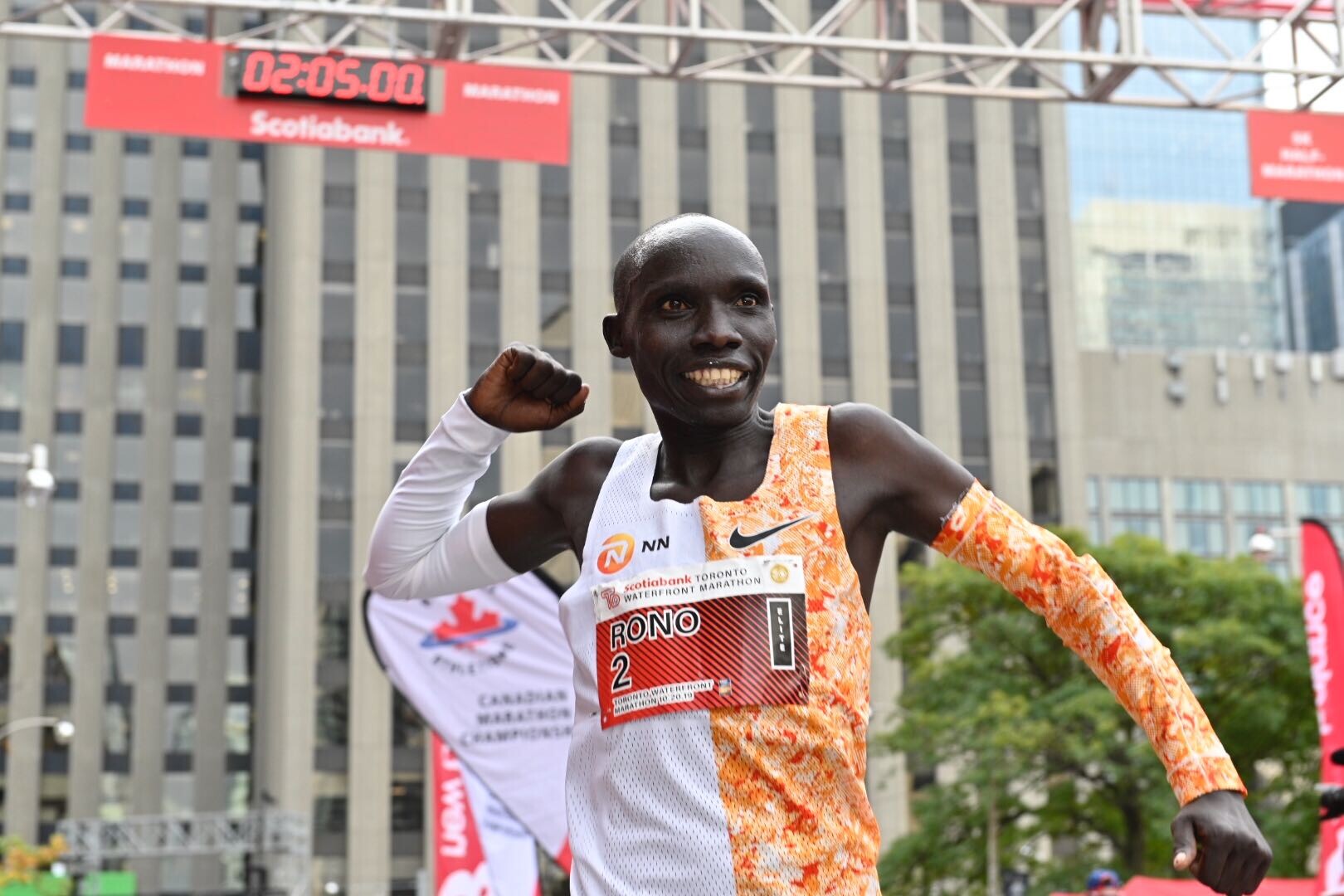
Rono trains in Kaptagat, Kenya, at double Olympic champion Eliud Kipchoge’s NN Running Team training camp. Some of Kenya’s most legendary distance runners live at the camp throughout the week and return to their families on weekends. The small-framed but mighty runner has a curious nickname. When not training or racing, Rono works as a police officer, so his teammates started calling him “Baby Police” and it stuck.
Rono is the third elite to announce his return to the Toronto Waterfront Marathon, along with Canadian Olympian Trevor Hofbauer and the fastest Canadian female marathoner in history, Malindi Elmore .
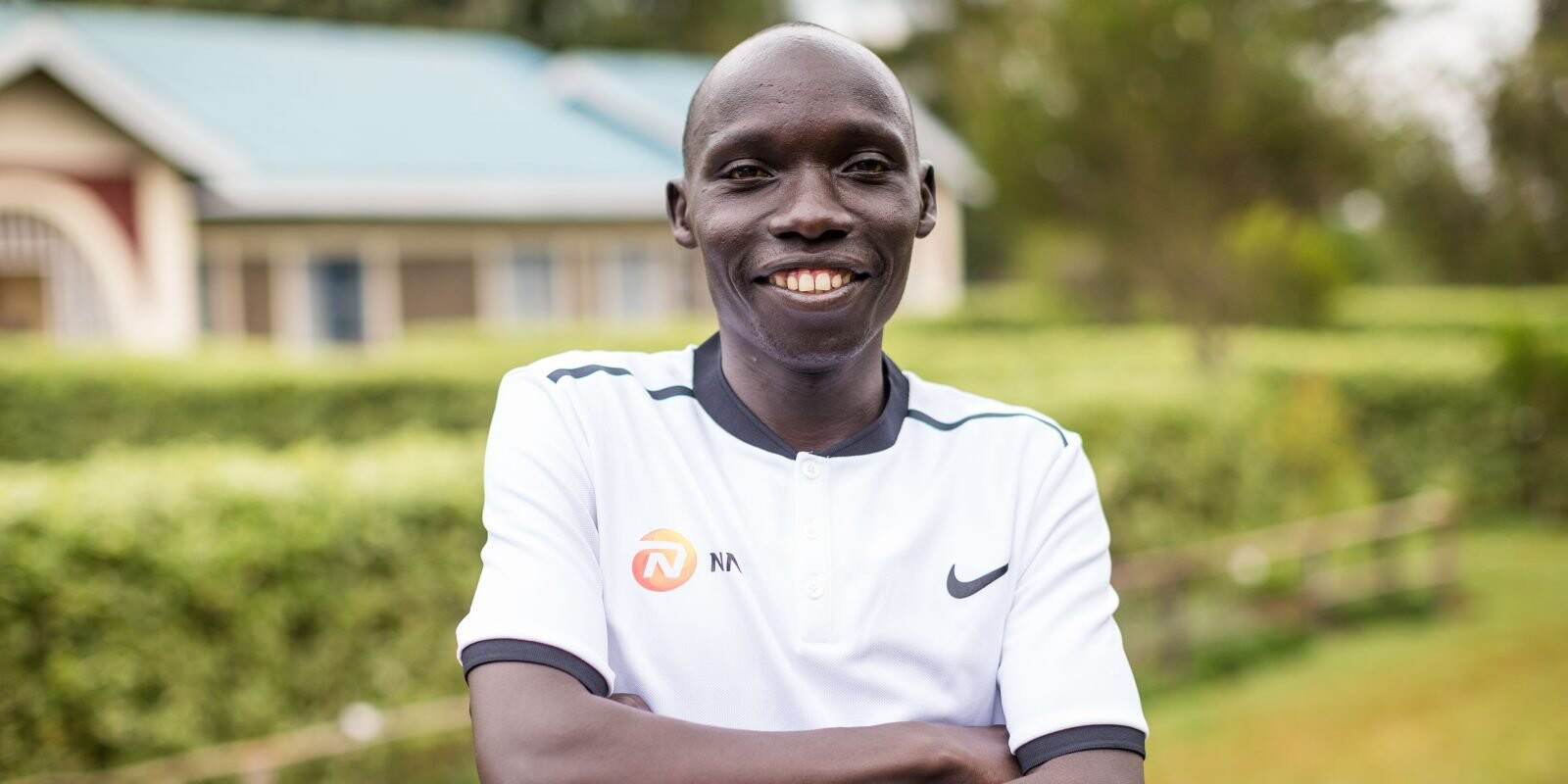
Rono has fond memories of Toronto, despite suffering an accident while warming up for his 2016 victory. A barrier he was using to stretch came crashing down on his head. After consulting his agent and a medic he went ahead and won the race in 2:08:26.
The TCS Toronto Waterfront Marathon has earned a World Athletics Elite label, making it only the second race in Canada with the title. It is the final event in the CRS calendar for 2022. The race has served as both the Athletics Canada Canadian Marathon Championship and the Canadian Olympic marathon trials since 2017.
(08/10/2022) ⚡AMPby Keeley Milne
TCS Toronto Waterfront Marathon
The Scotiabank Toronto Waterfront Marathon, Half-Marathon & 5k Run / Walk is organized by Canada Running Series Inc., organizers of the Canada Running Series, "A selection of Canada's best runs!" Canada Running Series annually organizes eight events in Montreal, Toronto and Vancouver that vary in distance from the 5k to the marathon. The Scotiabank Toronto Waterfront Marathon and Half-Marathon are...
more...Galen Rupp will headline New York City Marathon
One of the best distance runners in U.S. history will make his debut at the 2022 TCS New York City Marathon. 2016 Olympic bronze medalist Galen Rupp will headline the men’s professional field, which is one of the strongest in recent history with 13 Olympians and six national record holders on Sunday, Nov. 6.
Rupp has competed at every Olympics since 2008, winning silver in the 10,000m in London 2012 and a bronze in the marathon in Rio 2016. He also won the 2017 Chicago Marathon and was the runner-up there last year.
“I am looking forward to making my debut in the 2022 TCS New York City Marathon,” Rupp said in a press release. “This will be my 12th marathon, so I have a lot of experience on my resume. I know a win at the TCS New York City Marathon would be right up there.”
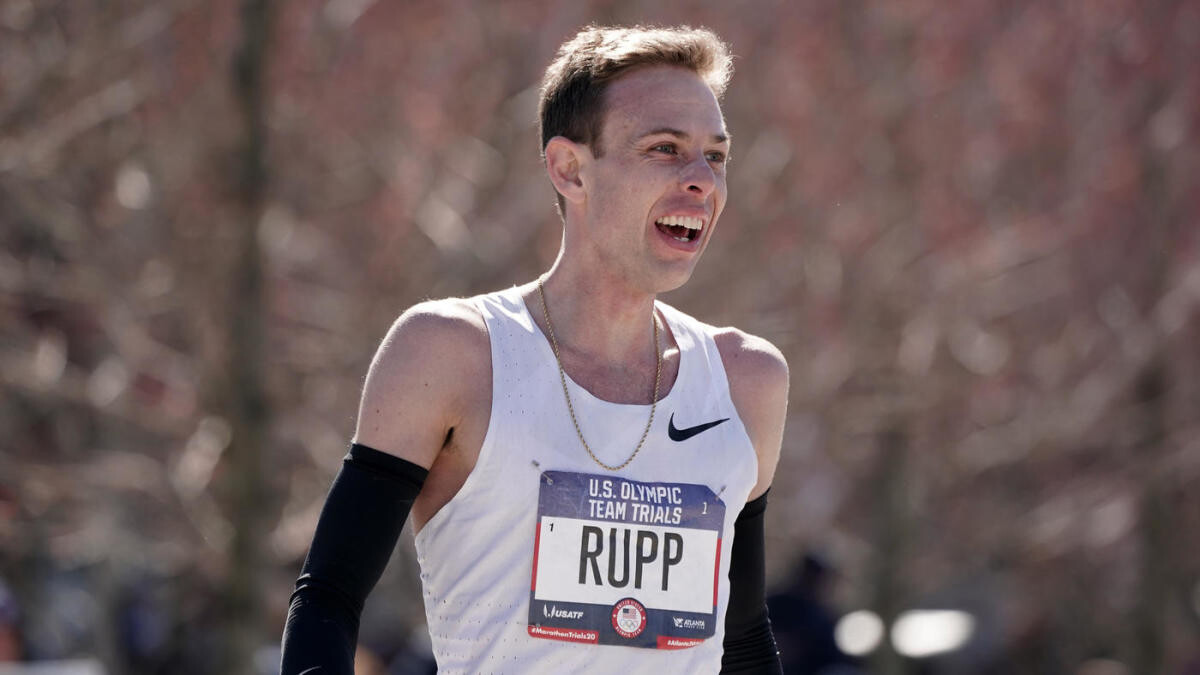
An American man has not won the race since Meb Keflezighi in 2009.
The reigning champion, Albert Korir of Kenya, will return to defend his TCS New York City Marathon title after taking the tape last year in 2:08:22 to finish one spot better and 14 seconds faster than his runner-up performance in 2019. His victory marked his first Abbott World Marathon Majors win. Korir had previous marathon wins at Elite-label races in Houston, Ottawa, and Vienna City.
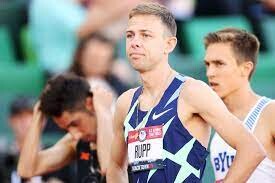
Last year’s runner-up, Morocco’s Mohammed El Aaraby, and the 2020 London Marathon champion, Ethiopia’s Shura Kitata, will join Korir and Rupp at the start line. Kenya’s Evans Chebet will also be in the mix, looking to add another world marathon title. The defending Boston Marathon champion and has top five in Berlin, London, and Tokyo, and will be making his first start in New York. Tokyo Olympic silver medalist and Dutch national record holder Abdi Nageeye will also return to New York to better his fifth-place finish in 2021.
Other international stars include Brazilian Olympian and South American marathon record-holder Daniel Do Nascimento, who was eighth at the 2022 World Athletics Championships, and Japan’s Suguru Osako, who was third at the 2018 Chicago Marathon and fourth at the 2020 Tokyo Marathon. Both will be making their TCS New York City Marathon debuts.
Five-time U.S. Olympian Abdi Abdirahman, who has six career top-10 NYC finishes to his name, will make his final start at the 2022 marathon. The 45-year-old distance runner has announced he will retire from professional competition at the end of 2022. Abdirahman finished third in the NYC marathon in 2016.
(08/09/2022) ⚡AMPby Marley Dickinson
TCS New York City Marathon
The first New York City Marathon, organized in 1970 by Fred Lebow and Vince Chiappetta, was held entirely in Central Park. Of 127 entrants, only 55 men finished; the sole female entrant dropped out due to illness. Winners were given inexpensive wristwatches and recycled baseball and bowling trophies. The entry fee was $1 and the total event budget...
more...Laura Muir stormed to 1500m gold at the Commonwealth Games to collect her second medal
Laura Muir secures 1500m gold at the Commonwealth Games in Birmingham – her second medal of the competition, after bagging a bronze in the 800m.
The Scot ran a tactical and gutsy race, holding back during the first two laps before making a sensational break with 500m to go. At that point, no competitor could respond, despite a fantastic effort from Northern Ireland's Ciara Mageean. Muir took the title in 4:02.76, with Mageean second in 4:04.14 and Abbey Caldwell of Australia third in 4:04.79.

After finishing 11th in the Glasgow Commonwealth Games back in 2014, the 29-year-old has gone from strength to strength over the last eight years, and come back a far stronger and more experienced athlete.
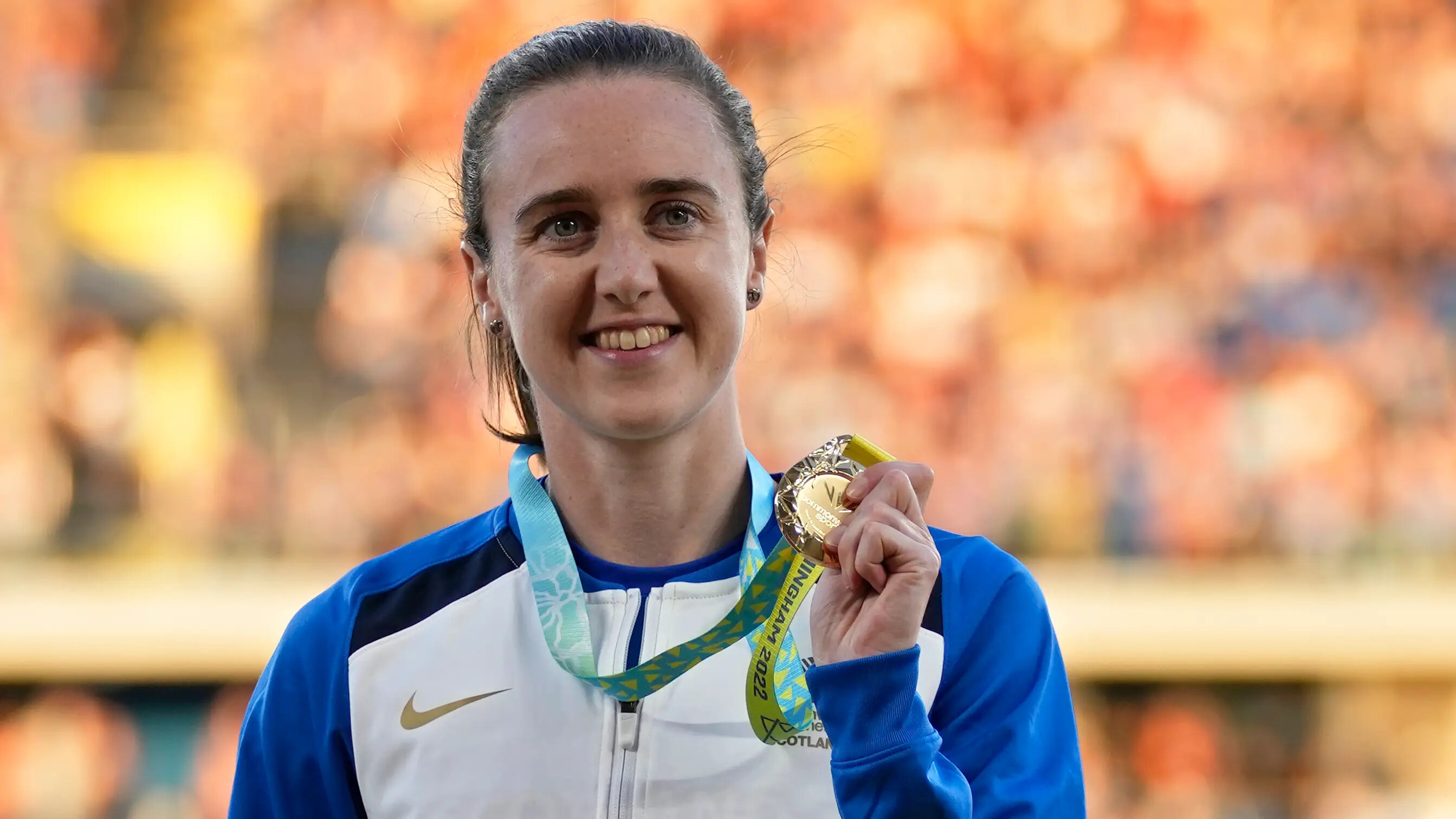
When asked afterwards what she'd say to her 23-year-old-self, she respond: 'Your time will come.'
'It's rotten at the time but you learn from it and come back stronger,' she continued. 'It sounds cheesy but you do. This meant a lot to me running here because missing the Gold Coast [Commonwealth Games in 2018], it's been eight years of Commonwealths, so it's been bugging me. It's been so nice to come here and and not just get one but two [medals] and in such competitors fields.'
"I just thought my strength is in my kick and I just tried to trust it and hope nobody would catch me," Muir said.
"I ran as hard as I could to the line."
Muir reflected on her past Commonwealth Games disappointments and was delighted to land her second medal.
“I think I would have said to the Laura Muir of 2014 ‘your time will come’ (after finishing 11th at the Glasgow Commonwealth Games)," Muir added.
“It’s rotten at the time but you learn from it and you come back stronger. This meant a lot to me – missing the Gold Coast (in 2018) as well, it’s been bugging me for eight years.
“It is so nice to come here and not just get one medal but two and in such a competitive field. Those girls are fast. It means a lot.”
(08/09/2022) ⚡AMPby Jenny Bozon
The Commonwealth Games
The Commonwealth Games are coming to Victoria - bringing an action packed sports program to our regional cities and delivering a long-term legacy for our future. From 17 to 29 March 2026, Geelong, Bendigo, Ballarat, Gippsland and Shepparton will be on the world stage, attracting millions of viewers and creating thousands of jobs. The multi-city model will...
more...Running motivation: running quotes to inspire you
It can be hard to maintain your zest for running when the temperatures soar.
We dug up some running wisdom from some great athletes and minds to get you out the door. When your workout motivation wanes in the face of weather or whatever comes your way, read a few lines and consider it your calling to rise up and run.
You are a runner, no matter your distance, pace or natural ability
"Love hard. Live hard. Keep moving forward" –Tommy Rivers Puzey
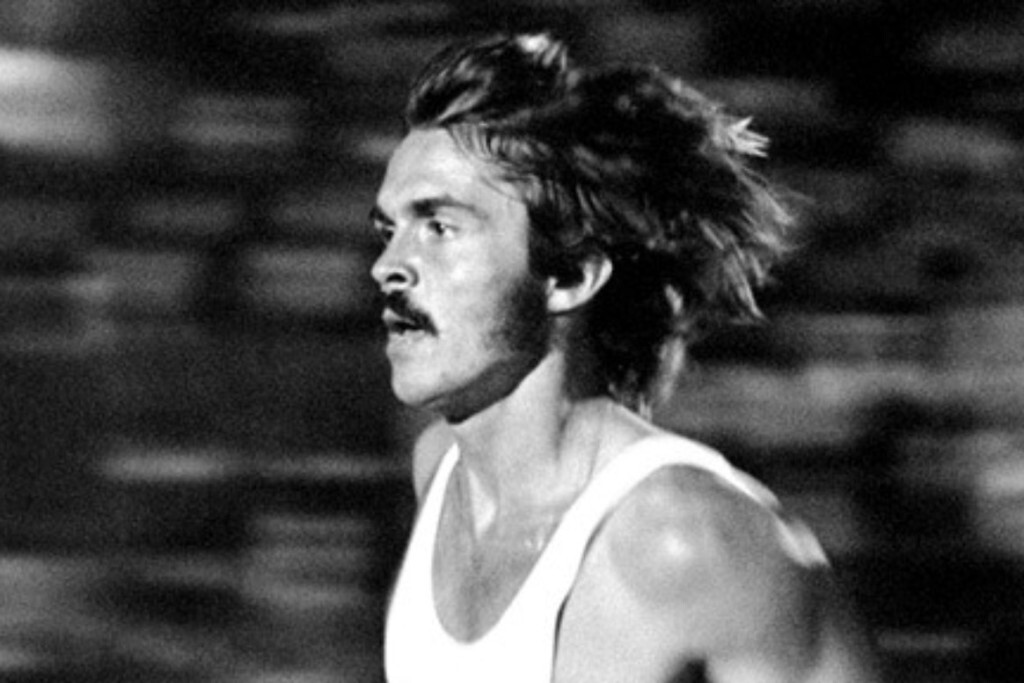
“All runners are tough. Everyone has to have a little fire in them, that even in tough times, can’t be turned off.” — Shalane Flanagan
“If one could run without getting tired I don’t think one would often want to do anything else.” – C. S. Lewis
“To give anything less than your best is to sacrifice the gift.” –Steve Prefontaine
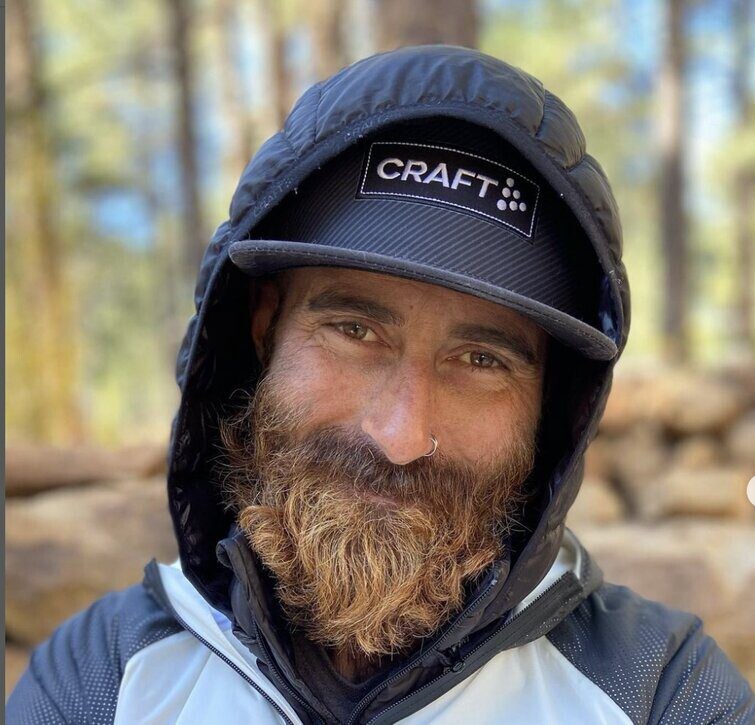
“I just wanted to come out today and, I don’t know, get up in it, stick my nose where it didn’t belong, and just see what I could come away with. I guess that’s a medal.” –Molly Seidel
“The advice I have for beginners is the same philosophy that I have for runners of all levels of experience and ability: consistency, a sane approach, moderation, and making your running an enjoyable, rather than dreaded, part of your life.” — Bill Rodgers
Remember why you do it
“Why do we do this? To feel something. To move ourselves, to ensure that we don’t get stuck. And most of all, we do this to be a part of something. To insert our individual effort into a sea of human energy and force out the other side, hopeful that somehow we’ll be different. Changed in some way.” –Peter Bromka
“Because during every run, for a few seconds or a few minutes, you have a moment where it feels really good. You forget about the discomfort and you find rhythm, maybe some grace, and a feeling of strength and confidence as you move as well as you’ll ever move doing anything. And that’s one of the best reasons to run.” ― Brendan Leonard
“Keep moving. You’re still here. We all are. As long as you’re moving you’re still here.” –Tommy Rivers Puzey
“…For me there has always been a place to go and a terrible urgency to get there.” —Joan Benoit Samuelson
“The reason we race isn’t so much to beat each other… but to be with each other.” –Christopher McDougall
(08/09/2022) ⚡AMP
by Keeley Milne
Ultra-runner Kate Jayden set astonishing marathon world record with broken knee
Kate Jayden of Derbyshire, U.K., who set the world record of 106 marathons in 106 days, completed in April 2022, has had her record verified by Guinness World Records. Although 106 straight days of running a marathon is an incredible feat in itself, Jayden revealed on her social media that she ran her last 60 marathons on a fractured knee.
Jayden began to feel discomfort in her knee after her 46th marathon, when she struggled to put weight on it and thought she had developed an injury. But the 35-year-old carried on for the last 60 marathons.
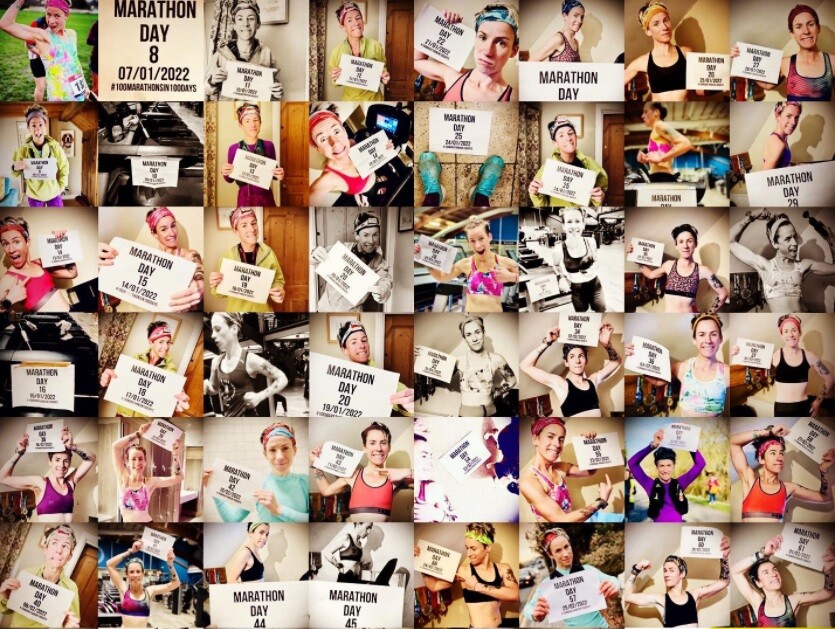
She started her challenge for charity on Dec. 31, 2021, and finished on April 15, 2022. Jayden got an MRI on her knee soon after finishing, and a scan revealed she had fractured her knee and may not be able to run again.
“I did not realize that day 106 was going to be my last long run,” Jayden told the BBC. “But if you could have planned it to be, it was an excellent way to go out.”
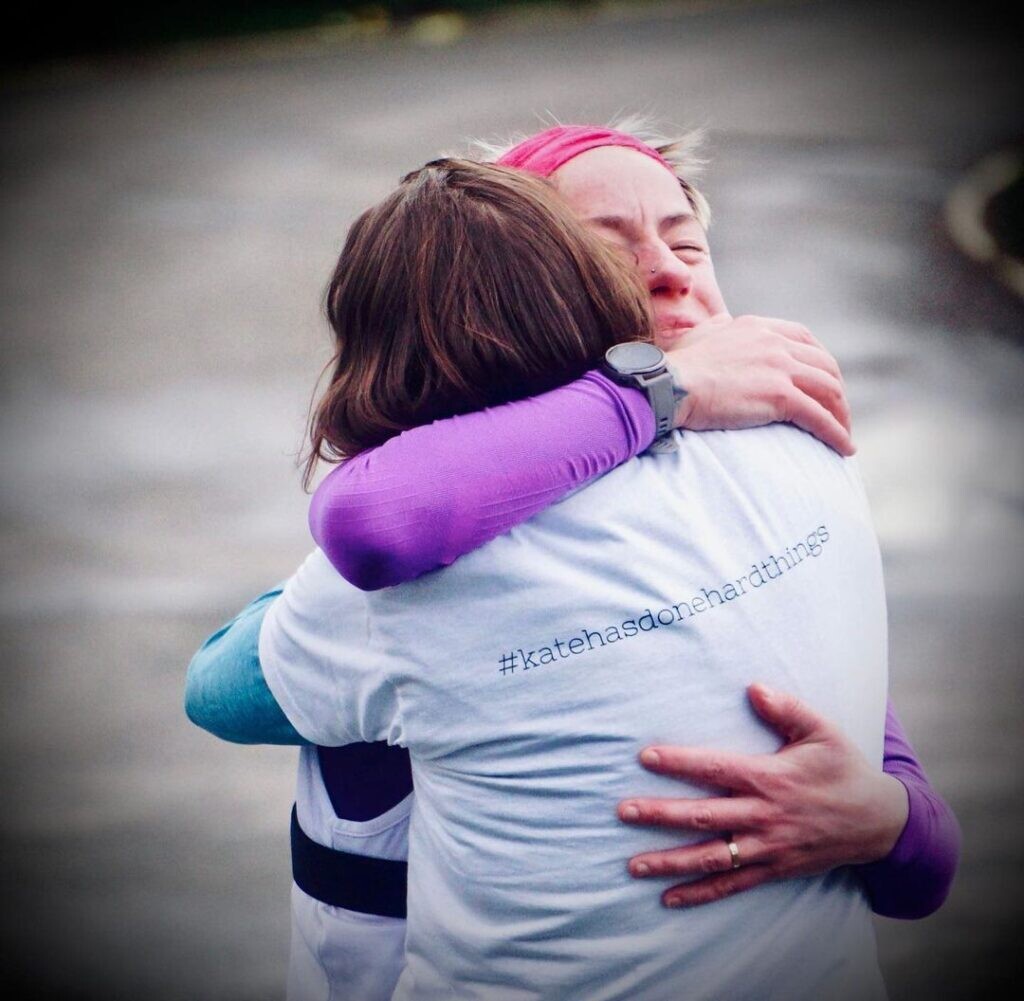
Jayden plans to have surgery on her knee and hopefully take up cycling in the future.
She initially set out to beat American runner Alyssa Clark’s record of 95 marathons in 95 days, which was set in November 2021. Several runners have since been inspired by Clark’s and Jayden’s records, and have set out on their own.
During her challenge, Jayden raised over CAD $50,000 for three charities: the Refugee Council, Trussell Trust and The Hygiene Bank.
(08/09/2022) ⚡AMPby Running Magazine
Maximize the benefits of every run with these three tips
Do you know the purpose of each run on your training schedule? Understanding why you are running fast or slow, and what training effect you are working toward can be monumentally helpful when trying to stick with a program and achieve specific results. Running workouts will have a variety of hoped-for outcomes, and training effect is simply a measure of the body’s response to a workout.
While fitness apps and watches all have unique suggestions about your training effect and may offer guidelines to follow, you’re better off keeping it simple. Here, we give you some tips to use so that every workout hits the target and leaves you a stronger runner.
1.- Know the intention behind each workout
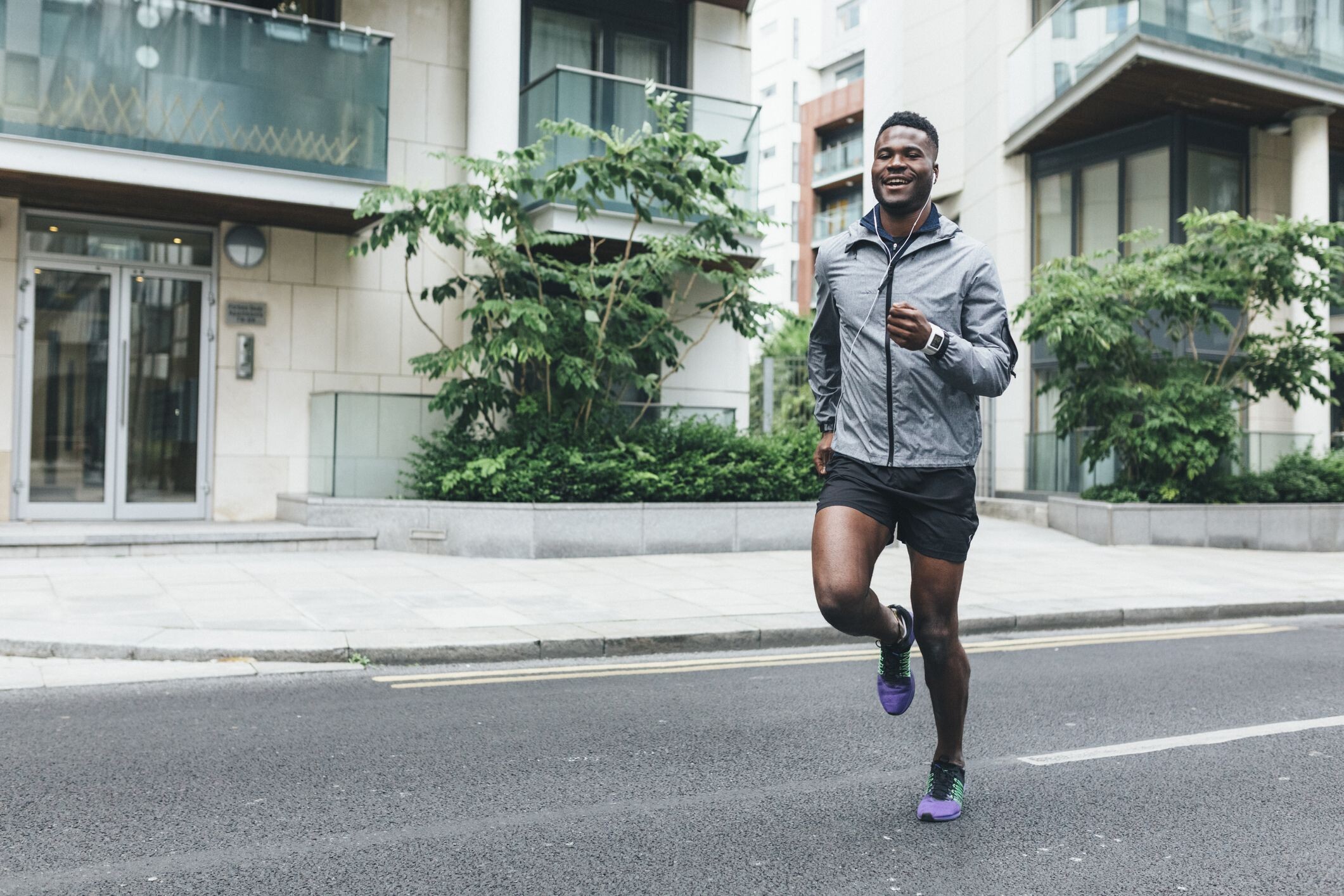
It can be easy to simply follow the instructions and repeat. It’s fantastic if you can hit all your goals in a scheduled running session, but understanding the real purpose behind the workout will help you reap the rewards. Are you running 800m repeats in order to get faster at short distances, or to build your ability to run smoothly on tired legs?
If you have a coach, make sure you’re asking questions so that you know the ‘why’ behind every session; if you plan your own training, do some research. Knowing what training effect a workout is intended to achieve will help you know what to look for while you’re running, and recover optimally.

2.- Variation is key
Adaptive resistance occurs when you do the same workout week after week. Your body becomes familiar with the particular stresses being applied to them and skilled at achieving the workout goals. The speed session (or track repeats, or whatever your workout of choice is) becomes less potent and you may stop seeing a training effect.
Switching it up, from road to track, solo runs to training with a group, or between speedwork and long runs keeps your brain and muscles firing. Rotating exercises and activities not only keep us seeing benefits as we run hard sessions, but also prevents repetitive stress injuries.
3.- Make recovery essential
If you haven’t made recovery as important as training, it’s time to start. Recovery is essential for our mental and physical health. Every single workout you do breaks your body down, causing tiny amounts of tissue damage. Running perfect splits in your track session is pointless if you don’t allow your body time to properly recover: you risk overtraining as well.
Make sure to take at least one day off per week, fuel and hydrate properly, and sleep well. You’ll reap the benefits of every run when you’re well rested, know what your goals are, and incorporate a variety of challenges into your training.
(08/09/2022) ⚡AMPby Keeley Milne
Sydney McLaughlin ran the sixth-fastest 400m hurdles time in history in what she said beforehand was her last race of the season
Sydney McLaughlin, who lowered her world record at June’s USATF Outdoor Championships (51.41) and July’s world championships (50.68), ran 51.68 at a Continental Tour meet in Hungary on Monday.
McLaughlin, who turned 23 on Sunday, extended her win streak to seven meets since her last defeat at the 2019 World Championships. Her time on Monday would have been a world record up until the Tokyo Olympics, where she lowered it from 51.90 to 51.46.
Next season is another world championships year. McLaughlin has a bye into next August’s worlds in Budapest in the 400m hurdles as reigning champion but has said she could add or change events, perhaps to the flat 400m, as the 2024 Paris Olympics approach.
(08/08/2022) ⚡AMPAmusan and Richards join list of double champions at Commonwealth Games
World champion Tobi Amusan and world indoor champion Jereem Richards had a successful Sunday (7) on the final day of athletics action at the Commonwealth Games, as they joined Elaine Thompson-Herah and Jacob Kiplimo as double gold medalists in Birmingham.
The Nigerian sprint hurdler started the day by winning her specialist discipline, the 100m hurdles, in a Games record of 12.30 (-0.2m/s) – the second-fastest wind-legal clocking of her career behind the world record of 12.12 she clocked at the World Athletics Championships Oregon22.
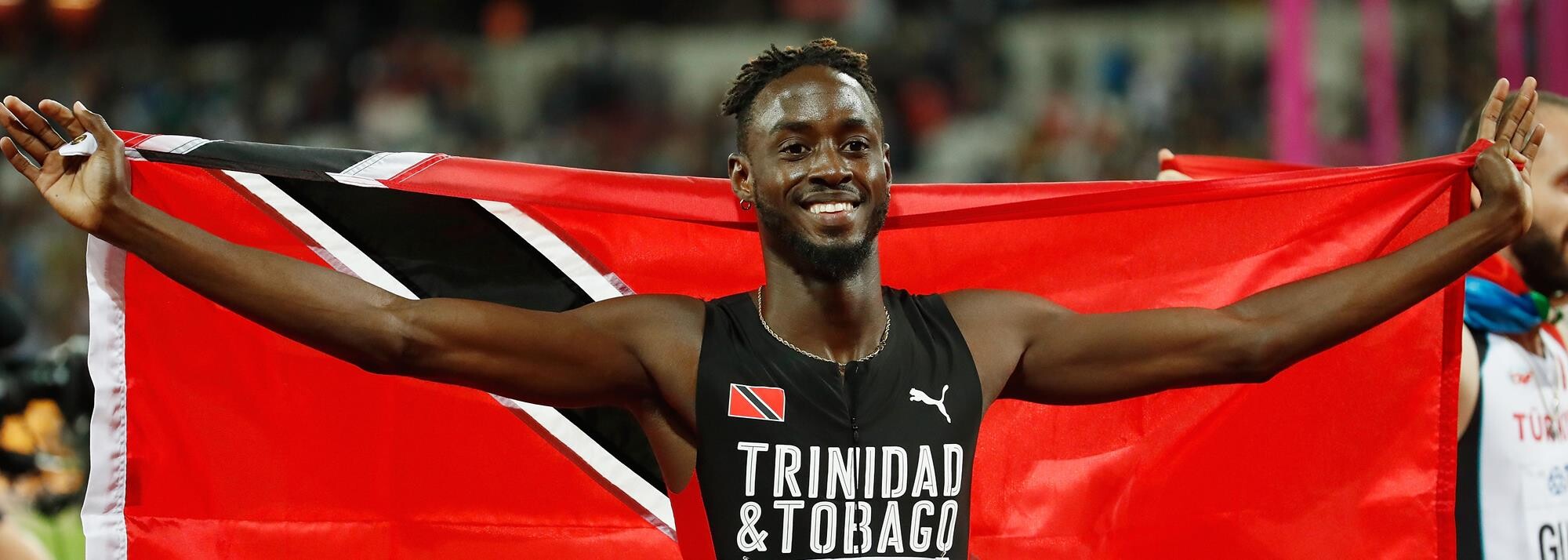
She won by a clear margin from Devynne Charlton of The Bahamas (12.58) and England’s Cindy Sember (12.59), all of whom finished inside the previous Games record.
“I think my first five hurdles were rusty but then I got it together,” said Amusan. “I’m just thankful for the win.”
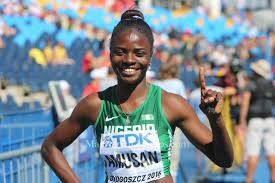
Later in the morning session, Amusan ran the lead-off leg for Nigeria in the 4x100m. She gave her team a strong start and handed over to 200m silver medalist Favour Ofili, who kept Nigeria level with England’s Imani Lansiquot. Rosemary Chukwuma than ran a storming third leg to give Nigeria a clear lead, then Grace Nwokocha anchored them to victory in 42.10, taking 0.12 off the African record they had set when finishing fourth at the recent World Championships.
England finished second in 42.41 and Jamaica, anchored by double sprint champion Elaine Thompson-Herah, took bronze in 43.08.
Much to the delight of the home crowd, England took victory in the men’s 4x100m just moments before the women’s race. They won in 38.35 from Trinidad & Tobago (38.70) and Nigeria (38.81).
Later in the day, Commonwealth 200m champion Jereem Richards added another gold medal to his collection, anchoring Trinidad & Tobago to victory in the men’s 4x400m. The world indoor 400m champion teamed up with Dwight St Hillaire, Asa Guevara and Machel Cedenio to win in 3:01.29 with Botswana finishing second in 3:01.85. Kenya placed third in 3:02.41.
The women’s race was much closer with hosts England crossing the line in first place 0.01 ahead of Canada. But England was later disqualified for a lane infringement, giving Canada gold in 3:25.84 ahead of Jamaica (3:26.93). Scotland took the bronze medal.
(08/08/2022) ⚡AMPby World Athletics
The Commonwealth Games
The Commonwealth Games are coming to Victoria - bringing an action packed sports program to our regional cities and delivering a long-term legacy for our future. From 17 to 29 March 2026, Geelong, Bendigo, Ballarat, Gippsland and Shepparton will be on the world stage, attracting millions of viewers and creating thousands of jobs. The multi-city model will...
more...Matthew Kimeli (28:38) And Fentyea Belayneh (32:06) Win Beach To Beacon 10k
Beach to Beacon returns after 2-year absence: ‘It’s great to be back!’
A carnival of calves, quads and cowbells came back to this seaside town Saturday, after an absence of 1,099 days.
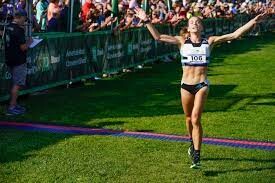
More than 5,000 runners paraded over the roads of Cape Elizabeth on a warm and cloudless morning in the 24th edition of the venerable TD Beach to Beacon 10K Road Race. Because of the pandemic, the race was canceled in 2020 and held virtually in 2021.
“It’s great to be back!” said Joan Benoit Samuelson, the race founder who grew up in Cape Elizabeth and went on to win the inaugural women’s Olympic marathon in the Los Angeles Games of 1984.

Along the route, which winds onto Old Ocean House Road before returning to Route 77 and continuing onto Shore Road until entering Fort Williams for the finish along a well-watered strip of green grass in sight of the lighthouse, spectators were abundant if not as thick as in past years.
The folks near the Mile 5 marker who grill bacon were back, enticing runners with mouth-watering scents of breakfast. (Beach to Bacon, reads their sign.) Bands and music added merriment and encouragement.
“It was so fun,” said Amy Davis, a Wisconsin native who placed fourth among all women. “The crowds get into it and the community, and it propels you forward. You feel like you’re never alone. That was really cool.”
Davis, 25, is the daughter of Nan Doak-Davis, a former national marathon champion who competed alongside Samuelson back in the day.
Befitting the 50th anniversary of Title IX legislation that opened doors long closed to female athletes, the women’s field on Saturday featured a dramatic race led for long stretches by Standish native Emily Durgin, a graduate of Cheverus High in Portland and the University of Connecticut.
The 28-year-old Durgin, now living and training in Flagstaff, Arizona, was runner-up by nine seconds to Fentaye Belayneh of Ethiopia. In her American road-racing debut, the 21-year-old Belayneh covered the 6.2 miles from Crescent Beach to the Portland Head Light in 32 minutes, 7 seconds.
No American woman has won Beach to Beacon. The only American man to do so is North Yarmouth native Ben True, six years ago. On Thursday night, True decided for health reasons to remain home in New Hampshire.
True’s absence paved the way for Mathew Kimeli, 24, of Kenya to run away from the men’s field. Hampered only by a brief entanglement with yellow caution tape after he turned onto Shore Road in Mile 4, Kimeli crossed the line with arms upraised in a winning time of 28:39.
Belayneh and Kimeli each received $10,000 for their victories. Durgin took home $5,000 for second place and another $5,000 as the top American finisher.
Because her connecting flight was canceled Thursday night, Durgin rented a car with her boyfriend and drove to Maine from Philadelphia on Friday, stopping at her favorite Connecticut diner (in Vernon) along the way.
“It was less stress because I knew I was coming to a familiar place,” said Durgin, whose parents picked up their luggage from the Portland jetport. “If I was going anyplace else, I probably would have gotten back on the plane and gone back to Phoenix.”
Once on the course, Durgin said she was surprised by the relatively pedestrian early pace – the first mile passed in 5:12 – until she realized her competitors were playing it safe amid hot and humid conditions.
“Then I found myself leading the whole race,” she said. “This is the first time that I’ve seen myself in the lead. It was not a super-familiar feeling.”
Kimeli’s time was the slowest for a men’s champion in race history. Belayneh’s was the slowest winning women’s time since 2011.
“The race was humid, and a lot of slopes,” said Kimeli, who was forced to stop to remove the tape from his leg when he couldn’t shake free from it. “Thank goodness we were not in a group. Maybe I would fall down if we were in a group.”
Twenty seconds passed before the surprise runner-up, Athanas Kioko, passed beneath the final banner. A recent graduate of Campbell University in Georgia, the 27-year-old Kioko registered for the race on Monday, picked up his four-digit bib number Saturday morning after a travel nightmare rivaled only by that of Durgin, and picked off two runners in the final mile to beat every invited elite athlete save Kimeli.
Two flight cancellations Friday morning in Atlanta forced Kioko to accept a diversion to Chicago, endure a four-hour layover, and eventually wind up in Manchester, New Hampshire. After a brief night in a motel, some Kenyan friends from Boston picked him up at 4:30 a.m. on their way to Maine. He got his bib at Cape Elizabeth High School less than an hour before the race, hopped on a bus to the start and enjoyed a 10-minute warm-up before the gun fired.
“Due to traveling, my lower back was a bit painful,” Kioko said. “But right now, I’m not tired.”
The Maine resident category saw a pair of first-time winners. Biddeford native Sam Mills, 21, whooped with joy before crossing the finish line in 31:09. Aly Ursiny of Yarmouth, 34, a mother of two who moved here from Boston last winter, was the fastest Maine woman in 36:17.
(08/08/2022) ⚡AMPby Glenn Jordan
TD Beach to Beacon 10K
Joan Benoit Samuelson, a native of Cape Elizabeth, Maine, won the first-ever women's Marathon at the 1984 Olympics in Los Angeles and is founder and chair of the TD Bank Beach to Beacon 10K. "A long time dream of mine has been realized" says Samuelson. "I've always wanted to create a race that brings runners to some of my most...
more...Crush your half marathon goals with these workouts
It’s racing season, and every sunny weekend seems like an opportunity to jump into (or train for) a fun event. If the half marathon is your jam, try these workouts to finesse the unique balance of endurance and speed that the distance requires.
Fatigue resistance repeats
Running some fast intervals after a tempo session can be an effective way to mimic maintaining that goal pace when you feel those slightly heavy mid-race legs.
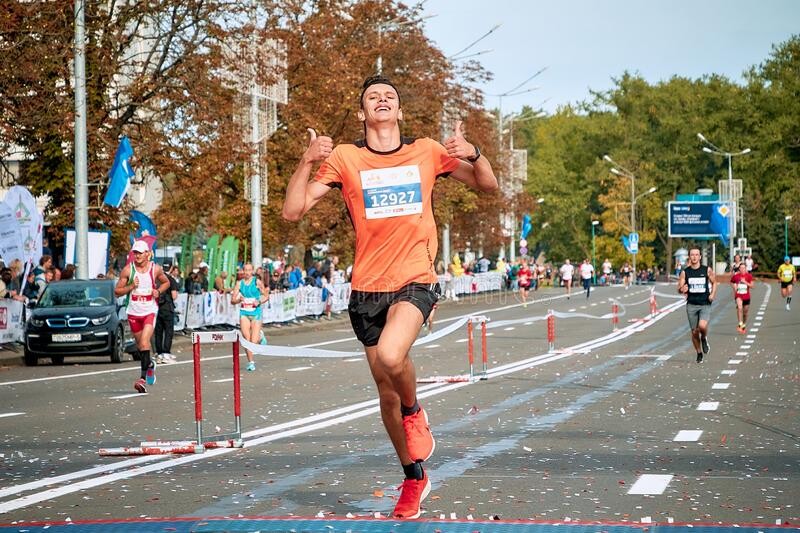
10 minutes easy running to warm up
25-30 minutes at a pace you can maintain for one hour
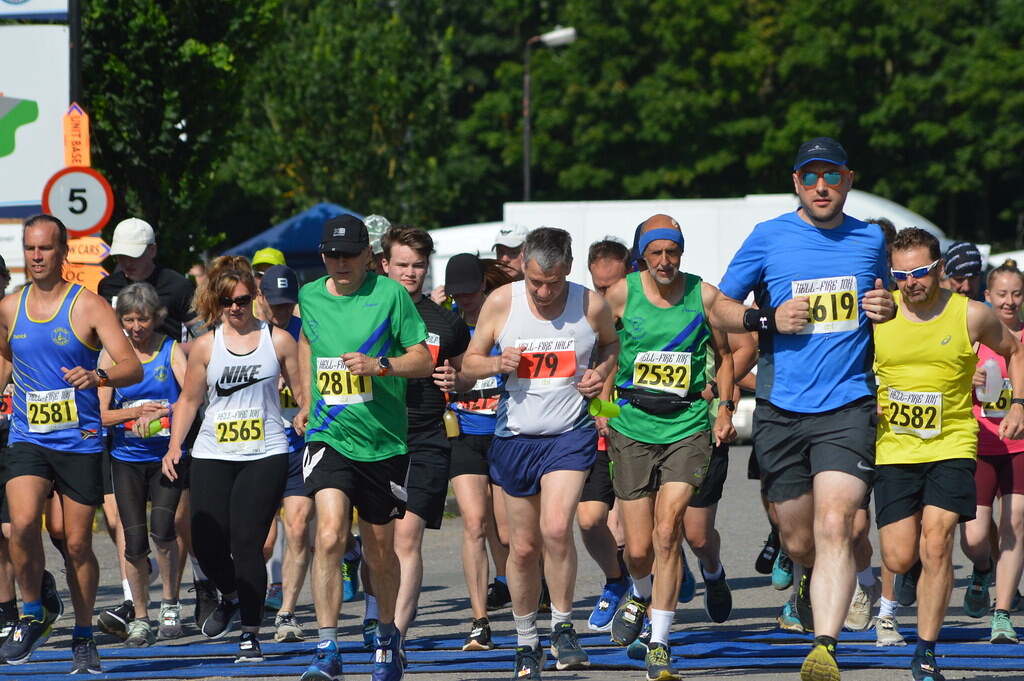
3-4 minutes recovery running
5 x 1 minute hard/1 minute easy
10 minutes easy running to cool down
Master the mile
Threshold pace intervals (roughly around a 10K race pace) are perfect training for the half marathon distance. On race day, you’ll have the stamina to maintain that tough, slightly below-threshold pace for the entire distance.
10-15 minutes easy running
4-5 x 1 mile (1,600m) at 10K race pace, with one minute of easy recovery between each repeat
10-15 minutes easy running
Practice the pace
Half marathon pace workouts should generally only be done a few times, close to race day (but before taper-time). You’ll gain familiarity with running at that perfect speed and add a confidence boost before the big event.
15 minutes easy running
3-4 x 3.5 km at half marathon pace, with 1 km easy recovery running between repeats
10 minutes easy running
Follow a speedwork session with an easy running or rest day, and hydrate well, especially in the summer heat.
(08/08/2022) ⚡AMPby Running Magazine
Ultra running is exploding in popularity around the world, but what actually is an ultramarathon?
The term Ultra covers a broad range of races, from mountains to road
Ultra running is fast becoming a mainstream sport. Once, it was the realm of a few crazy runners, and not the pastime of everyone from your boss to your neighbour. But what actually is an ultramarathon?
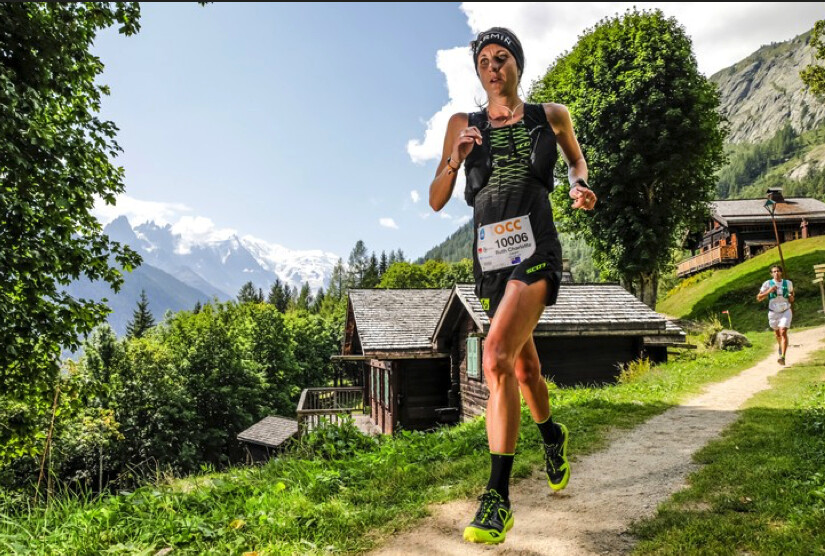
How long is an ultramarathon?
An ultramarathon is anything longer than a marathon, which is 26.2 miles (42.195km). So, you could complete a marathon and run back to your car and you’ve technically run an ultra distance.
Typically, ultramarathons start at 50km and go up from there. Standard distances are 50km, 100km and 161km (100 miles), the latter often being referred to as a “miler”.
While a marathon is never longer than 26.2 miles, ultras tend to vary a bit. For example, the Hong Kong 100 is in fact 103km. And the Ultra Marathon du Mont Blanc, a miler, is in fact 171km. Others are a bit shorter than advertised, too.

Aside from the above three types, there are ultra races of all sorts of distances and formats. As long as it’s more than a marathon, the distances and formats can be limitless.
An increasingly popular format is 250km split over stages, such as the Marathon Des Sables. Runners complete different distances each day, some less than an ultra, and sleep at night.
As the sport continues to grow, others try to push the boundaries – such as the 298km Hong Kong Four Trails Ultra Challenge, which is non-stop and has no support on the trails. Runners finish the distance in between around 48 and 70 hours.
The formats are becoming increasingly imaginative. A backyard ultra, for example, is around a 6.7km loop. The runners start on the hour every hour until there is just one runner left, so the distance is not set. It keeps going and going. Runners have gone on for more than 80 hours.
Outside organised events, runners often complete ultramarathons just for fun, to set a personal best or a Fastest Known Time (FKT), which is ultra terminology for a specific course record. This can be anything from the 44km Hong Kong Trail, which takes a few hours, to the 4,172km Pacific Crest Trail, which has an FKT of almost two months.
What terrain is an ultramarathon on?
With an infinite range of distances come infinite terrains. An ultramarathon can be road, flat, track, pavement, mountain, trail, snow and more. As long as you can run on it, you can run an ultramarathon on it.
A famous road ultramarathon is the 246km Spartathlon. It follows the legendary route run by Pheidippides, who ran from Athens to Sparta before the Battle of Marathon in Ancient Greece, thus inventing the marathon.
The most high-profile mountain ultra is the Ultra Marathon du Mont Blanc, which has a total of 10,040 metres accumulative elevation gain in the Alps.
Track ultras often take the format of a set time rather than distance. For example, how far you can travel in 24 hours, round and round the same athletics track.
When Zach Bitter set the 100-mile world record, which has since been broken again, he ran it around a 443m track by doing 363 laps.
The distances and terrains are so varied race to race they are essentially different sports. Kilian Jornet is considered one of the best ultra-mountain runners ever, but comparing him with Yiannis Kouros, considered one of the best ultra road runners ever, is like asking who is better at football: Tom Brady or Lionel Messi.
Is an ultra harder than a marathon?
The word ultra refers to the distance, not difficulty. An ultramarathon is inherently hard, but not inherently harder than a marathon or any other distance for that matter.
If you have a specific and demanding finishing time in mind for your marathon, you will have to stick to a specific split, keep your legs spinning and spinning, all the time concentrating on your pace and pushing your body.
Is that easier or harder than a 24-hour 100km over mountains, with variation in terrain and elevation, when you walk some parts and rest at check points?
What about a 5km? If you want to run a fast 5km, you will be at your absolute limit for the entire time and collapse over the finish line.
Non-runners often think an ultramarathon is the “next step” for runners looking for a new challenge. Searching for a faster time is just as challenging as searching for a longer distance.
Either can be harder than the other – it’s down to the runner.
The same is true within ultra running. Ruth Croft, one of the best runners, dominates races around 50km. She was repeatedly asked when she would do a 100 miler once she had “completed” a 50km. Croft resisted the urge to cave to the pressure to run further until she was ready, understanding that fast and far are two often incomparable metrics.
When you consider all of the above, the simple definition of “longer than a marathon” does not quite do justice to the massive range of events encapsulated by the term ultramarathon.
(08/08/2022) ⚡AMPCanadian Evan Dunfee smashes two records for gold at Commonwealth Games
Dunfee broke his own Canadian record along with the Commonwealth Games record in the 10,000m race walk
“Elation,” Evan Dunfee posted on social media Sunday morning. The Richmond, B.C. native won the men’s 10,000 meter race walk in a record-setting performance on Sunday at the Commonwealth Games in Birmingham, U.K. Dunfee, 31, broke his own national record along with the Commonwealth Games record, in 38:36.37.
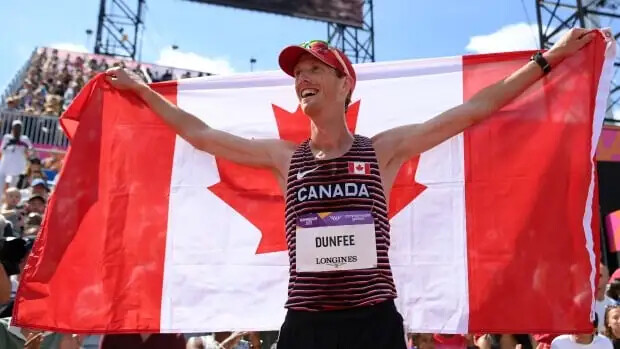
“Today’s goal was to believe in myself as much as my family and closest friends believe in me. I wavered in the middle but found it again in the closing stages,” Dunfee said. He fell back to fifth place around the halfway point, but moved up to take the lead in the closing stages. With 300m to go, Dunfee broke away to solidify the win.
Dunfee won bronze at the Tokyo Olympics in the 50K race walk (now non-existent), and finished sixth in the 35, 000 km race walk at the World Athletics Championships last month in Eugene, Ore. His previous national record was 3.35 seconds slower, in 38:39.72, set in June 2021 at the Harry Jerome Track Classic.
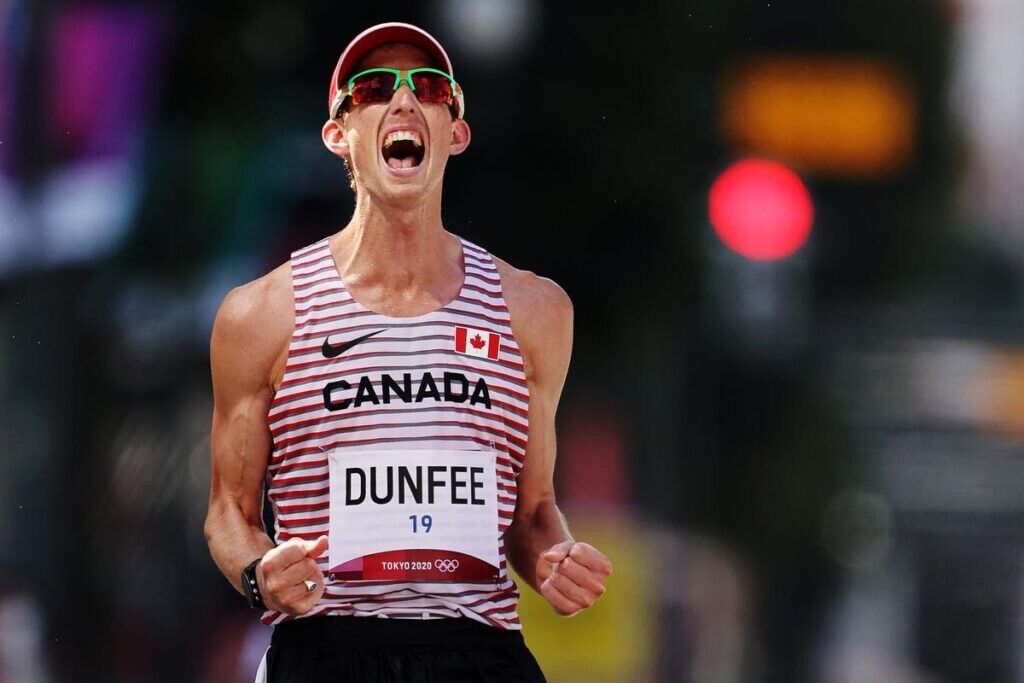
This is Dunfee’s first Commonwealth medal, and his third appearance at the Games. It’s Canada’s 23 gold medal at the 2022 Commonwealth Games.
How to watch?
Daily live coverage will be available on CBCSports.ca, the CBC Sports app and CBC Gem, with 10 hours of additional weekend broadcast coverage
(08/08/2022) ⚡AMPby Keeley Milne
The Commonwealth Games
The Commonwealth Games are coming to Victoria - bringing an action packed sports program to our regional cities and delivering a long-term legacy for our future. From 17 to 29 March 2026, Geelong, Bendigo, Ballarat, Gippsland and Shepparton will be on the world stage, attracting millions of viewers and creating thousands of jobs. The multi-city model will...
more...Eileen Gu, Freestyle Skiing Gold Medalist, Runs 1:41:07 in San Francisco Half Marathon
Gu placed second in her age group on July 24 after “spontaneously” signing up for the race.
At only 18 years old, Eileen Gu is a two-time Olympic gold medalist, model, and soon-to-be Stanford freshman. She is fluent in English and Mandarin Chinese and can play classical piano, too. With so many varied accolades and talents, one may wonder: Is there anything Gu can’t do?

As if seemingly responding to this unspoken question, Gu recently added another achievement to her already lengthy list.
On Sunday July 24, Gu completed the San Francisco Half Marathon—and placed second in her age group. This happened several days after she won two ESPY Awards: Best Breakthrough Athlete and Best Athlete, Women’s Action Sports.
Without formally training for the 13.1-mile race, Gu crossed the finish line in ç, an impressive 7:43 mile pace.
In an Instagram post she wrote, “Landed in San Francisco 36 hrs ago and spontaneously signed up for the San Francisco half marathon. Went in with the relatively simple goal of finishing the race but got a bit competitive around mile 7 & wanted to see what I could make happen… hyped to walk away with an unexpected second place in the 19 and under age group!! Still on a high. What a day.”
Although racing in San Fran was an impromptu decision, Gu has history with the sport. She was a competitive cross country runner for seven years and has expressed admiration and gratitude for her former coach.
In an Instagram post celebrating International Women’s Day in 2021, after thanking her grandma and mother, Gu wrote, “…to my unbelievably strong high school cross country coach (who showed me focus and fearlessness).”
Over the years, Gu has also posted on Instagram about her cross country meets and running workouts.
Running is an integral component of her training routine; she even credits it for helping her get ready for her Olympic debut where she represented China. Gu is American-born – her mother is Chinese, and her father is American – but has competed for China since 2019.
“It’s definitely not easy. But I ran a half-marathon every week over the summer to prepare,” she said in an interview before Beijing. “I feel proud of the work I’ve done to build up my endurance base, so this is what I’ve been preparing for.”
Gu’s former training camp coach, Peter Olenick, told the New York Post, "She is the first one at training and the last to leave. She competes in multiple events; then she goes home to run and train. That is unusual."
Her unconventional tactics worked. Gu snagged Olympic gold medals in big air and halfpipe and a silver medal in slopestyle. She became the youngest freestyle skiing Olympic champion and the first freestyle skier to medal three times in a single Winter game appearance.
All of this came on the heels of winning numerous gold medals at the 2021 World Championships and Winter X Games as well as two gold medals at the 2020 Winter Youth Olympics – in big air and halfpipe.
Despite her success on the slopes, Gu said that running is her second favorite sport.
"I can break my own boundaries through running. Running is a bit different from skiing, because running can be done by everyone. There is no need to fall and stand up again. Everyone can enjoy the joy of sports and nature."
(08/07/2022) ⚡AMPby Runner’s World
The Real-Life Diet of Ultramarathoner François D'Haene, Who Makes Dominating 100-Mile Races Sound Low-Key
France’s François D’haene is one of the best ultrarunners in the world. He’s won some of the hardest 100-mile foot races out there like the Ultra Trail du Mont Blanc in Chamonix (3-time winner) and the Hardrock 100 in Silverton, Colorado (he's the 2021 champion and course record holder). But he’s not a one-dimensional athlete, he’s stood atop over 50 podiums in both running and ski mountaineering. And in addition to being a freakishly good athlete, he’s also a wine producer in Beaujolais.
But the father of three children and takes a refreshingly chill approach to his success: there’s no rules, no training plans, no strict diet. We chatted with D’Haene as he was gearing up for the 2022 Hardrock this weekend.
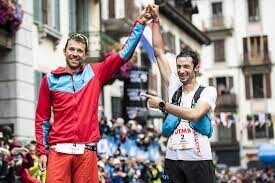
For Real-Life Diet, GQ talks to athletes, celebrities, and other high performers about their diet, exercise routines, and pursuit of wellness. Keep in mind that what works for them might not necessarily be healthy for you.
GQ: When you’re training for a big event, like the Hardrock 100, what time do you usually wake up? What’s the first thing you do?
François D'Haene: When I’m training for a big event, what time I wake up is different every day because I have to adapt every day—I also have a job and a family. I don’t have a regular plan!
Can you walk us through what a typical day looks like?
There is no typical day for me, but I always have something to do. This week I was cycling on Saturday (a casual 230-mile bike ride that took nearly 19 hours), with my children on Sunday, and wasn’t able to train on Monday because I had to deliver some wine to a few huts in the mountains by foot. Each day is totally different.
How do you balance training, raising three kids, and your wine business? Is it difficult to do all those things well?
It’s hard to manage it and get everything done, but I don’t want to make any compromises so I try to do as good as possible. I train when I can. I try to get some long days in the mountains and keep some moments for training, some moments for the business, and some for family. I work on my calendar with my wife. Of course, I don’t have so many moments for rest but I have to make room for the things I love.
What kind of workouts are you doing each week? How much mileage or how many hours do you spend training? How much vert are you getting in? Are you self-coached? Has your training in physiotherapy helped you develop your training plan?
I don’t have any regular training and I don’t want to have any regular training or workouts. I really just try to adapt myself and be happy with that and play in the mountains when I can. Because of my schedule, I don’t have a coach. I discuss my race calendar a lot with my team manager and we try to make it as good as possible. I just have to adapt.
Do you remember when you first fell in love with trail running or racing ultramarathons? Was there a specific moment?
It’s something that built up slowly over many years. I remember when I was a kid I always loved being in the mountains. For me it was a dream to understand what happened between the earth and the top of a mountain. I started to build my relationship with the mountain and adventure and trail running. When I was finally able to go by myself with friends (at around 16 or 17 years old when we had a car) I was so happy. The adventures became longer and longer and I fell in love with trail running. That was in 2002, so 20 years ago, and I’m still passionate about it.
What’s the most fun race or run that you’ve ever done? Why?
There are many many racing projects that are very fun. I like to do official races with bib numbers but I also like to do my own projects. I think that’s really cool and interesting. Doing the 211-mile John Muir Trail with friends was a nice experience and I think it’s one of the best memories I have in my trail running experience.
You say on your website that you are careful about keeping a healthy lifestyle. Can you expand on that? What does that mean for you, and what does it look like in your daily life?
For it’s more about longevity, about practicing activities that I love and being okay socially and with my job. This is my way to stay healthy: I ski a lot during winter, I try to do cycling too and not only running. I try to figure out my body and reset my body. When I have pain, I try not to run. Of course, you have some pain every day and every time, but it’s important to make the good choice sometimes and rest a bit. My way to stay healthy is to try to live a normal and well-balanced life and to think about it in terms of longevity. If it’s too stressful for you you won’t be able to do it for long, but if it’s okay in your life you can do it as long as you want.
Can you walk us through what you typically eat for each meal?
I think I won’t tell you because you will get afraid! No, I just try to eat normal. I mainly just eat by feel. I have some children and try to educate them about eating seasonally and locally. I like food and I like fat and I like to play with my food. I try to eat what I want and just try to think about what’s good for my body and for my children and the planet.
What do you eat and drink while running and what’s your strategy with that? How often do you eat or drink while training and racing?
There’s not one right strategy for this so it’s important that people figure out what works for their body. It is crucial to test everything out before the race. For me, I never drink water. I only drink nutrition drinks and I always drink the same one. For food, every hour I eat some sort of gel.
You’re a wine lover—do you drink wine at night during training periods or no?
During training, no! I try not to drink wine or beer. I’m not just a wine lover, I drink anything. I have a normal social life and I’m so happy to share beer with my friends, or a glass of wine. If you run 10 hours with friends then you are so happy to share beer or coffee or wine with them after. Do what you want—take pleasure in that. I think my best advice is to make sure you have longevity and continue to perform.
Can you talk to us about your work as a wine producer? How did you get started doing that and what kind of wine do you make?
It was a project with my wife so we could be together more and spend more time together. We were interested to spend some time in nature. Wine is something very interesting in France and all over the world because it’s always different from area to area, with the taste, the production, and the history. It’s a very interesting thing and to be a wine producer is a very complex job. You have many things to do. Of course we like the taste of wine and the moment when you drink wine. The kind of wine that we did in Beaujolais is a Gamay wine, 100%. It’s very social and fruity so I'm sure you should enjoy it.
Why do you want to go back to the Hardrock 100? What do you like about that race and what are your goals this year?
Just because I won last year and got the opportunity to come back! No, what I like about the race is it’s an interesting race and an iconic race. It’s 160 people and a very strong and deep community. It’s a very nice place and the mountains are amazing. It’s a mix between the altitude and technical trail and easy trail, and it’s just a perfect mix of everything for me to combine strategic training. I have very nice memories from the race and I hope we can build some new good memories this year.
(08/07/2022) ⚡AMPHow to Train for Technical Trails
Technical trails can ask a lot out of the runner. They demand a fine balance of concentration, strength, and agility that can take years to hone. But being a strong runner of technical trails can quickly translate to improved efficiency, faster races, and overall health.
Like anything, upping your game on technical trails requires practice and preparation. That's why we turned to our favorite coaches and athletes, asking them how best to build the skills for staying upright and moving fast through tricky terrain. Here's what they said:

Fancy Footwork
"One of my favorite sets of drills to build skills for technical trail running is Lauren Fleshman's dynamic drill routine," says elite mountain runner and coach Mason Coppi. "The routine includes dynamic drills that improve overall biomechanics, coordination, foot speed, and ability to move in multiple planes of motion."
Though the routine was originally designed for track and road runners, it targets skills and agility that translate well to trail running. These dynamic, multi-directional movements keep you on your toes and help with the precise footwork you need for tough terrain. Coppi likes the athletes he coaches to do the routine after each run, to reinforce good footwork and form, especially when the legs are fatigued.
Take action: Do 10-15 minutes of mobility and drills after two to three runs a week to improve agility and footwork. Use the video above, or try using a ladder, cones or even chalk your own "ladder' on the sidewalk to practice.
Strength Train
"Pure strength is always in fashion for any difficult race, so it's a good idea for trail runners to improve their maximum strength output," says Strength Running coach Jason Fitzgerald. "By getting substantially stronger, runners will be able to cover steep and technical sections with ease. And (of course!) spending time on technical trails is the best way to get better at them."
San Diego-based Coach Jessica Riojas Schnier agrees, and says athletes should specifically target their toes and feet with strength training.
"I do toe yoga (stretches that target the feet and toes) and ankle inversion/eversion exercises while sitting at my desk and occasionally use a wobble board to help strengthen my ankles," says Riojas Schnier. She also recommends toe yoga for athletes who struggle with foot and lower leg injuries, which can help with agility and stability on technical trails.
Being a strong runner of technical trails can quickly translate to improved efficiency, faster races, and overall health.
"When technical terrain is not available, I often utilize movement-specific strength work. The roots and rocks simply aren't ladders on the ground - that would be nice and predictable, but there is more to running technical trails than a quick high knee," says Coach Jenny Quilty.
Quilty and Schneir recommend David Roche's Speed Legs and Mountain Legs routines, which target limbs individually in addition to ankle and foot strengthening.
"To prepare for technical terrain, I use run-specific strength moves that best replicate the movement patterns of climbing or descending on trails," says Quilty. "A few of my favorite go-to strength moves often focus on eccentric loading to build stability and strength with downhill running. Since technical terrain often requires more time in the mid stance of the running gait (when the foot is planted on the ground) I incorporate a few moves to target stability and power navigating movements while a single leg is under load." She recommends moves like step downs, single leg lateral slider squats, step-ups, and reverse nordics.
Take action: Incorporate a wobble board or Mobo board into your mobility routine. Don't neglect your feet and toes when it comes to strength! Try this routine for a strong foot foundation.
Just Run
The best way to improve your technical trail running ability is to just get out there and do it.
"Go out on the trails and get comfortable," says coach and elite trail runner Tabor Hemming. She and her husband and co-coach Eli Hemming recommend getting out on the trails as much as possible, while augmenting that trail running with some targeted strength training.
"Some of our favorite strength exercises are lunges (front, back, and lateral) and then planks. These are the biggest bang for your buck exercises, especially for a time-crunched runner. We recommend incorporating them two to three times a week following your run."
trengthening your lower core with stabilization exercises like planks and leg lowers will also help with stability when moving quickly through technical terrain. But, there's no replacement for getting out on the trails, and honing your skills in the real world.
Nike pro runner and coach Matt Daniels recommends repetitive running on technical terrain. "It always helps to have someone who is faster than you on technical terrain to run in front so you can practice just staying with them and reacting to what's ahead quickly!"
"If it is accessible, the best way to improve is to practice, by following others, joining a group, doing sessions on a specific section of trail where you run for a few moments, walk back, and repeat to test out and build confidence in footing," says Quilty.
Take action: Grab a friend or join a running group and hit the trails. Notice the quick turnover and shortened stride most folks adopt when moving quickly through technical terrain, and see what lines your trail buds take.
(08/07/2022) ⚡AMPby Trail Runner Magazine
The Joys of Small Local Races
But what it lacks in high-falutin' swag, it more than makes up for in community and character. While there are speedsters at the front of the pack, pushing each year to lower the course record (now a mind-boggling 4:07:48), some runners take well over nine to complete the course, marshaled by regional runners and the Ouachita Amateur Radio Association.
The race is capped at around 90 runners and remains small enough to fit all entrants in an annual start line group photo. The race is the destination, not a waypoint en route to some larger, shinier thing.

"I think that ABF has always been special because it is one of those events that feels like a big family reunion," says Stacey Shaver, who's been the race director for ABF for the past five years. "It's also just a cool corner of the state, where you can forget that modern (in)conveniences like smartphones and email exist for a few hours. We have runners come back year after year and from across several states. Even for runners new to our event, it feels like going to grandma's house. Grandma's house means fun, games, laughter, and leaving well fed. That is exactly what our runners get."
In addition to the homey feel of Grandma's house, the past few year's awards for first place finishers have included hand-harvested local honey, hand-soldered fork statuettes, and a charming cross-stitched winner's plaque.
Community Roots
As more races are becoming consolidated under increasingly large banners, company sponsors, and race series, many runners are looking to smaller, home-grown events with a family feel. Few things top the feeling of seeing friends and run family out along the course and feeling supported by your home community.
Runner Justin Grigg recommends Missoula, Montana's Double Dip race for just that reason.
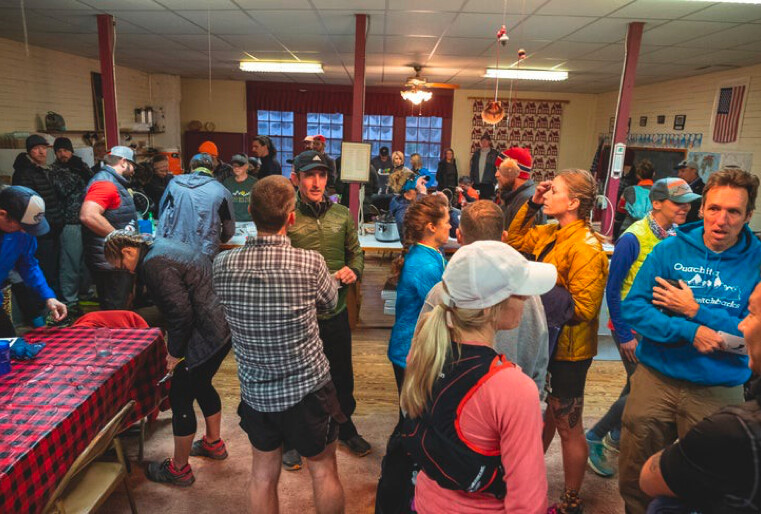
"You'll usually see friends racing, but also working aid stations, spectating along the course or gathered at the start/finish area. With the two out-and-back sections, you more than likely will see friends who are racing ahead of or behind you, and people who aren't racing will run up University and Sentinel to watch," says Grigg.
Many runners appreciate being able to share their race-day experience with the larger community and enjoy being cheered on while they're competing. Live music, food, and adult beverages don't hurt either when it comes to incentivizing community members to come and bask in the finish line stoke. Some events can almost feel at odds with the communities they happen in, and it's a breath of fresh air when everyone feels included in race day festivities.
Close to Home
The International Trail Running Association (ITRA) estimates there are around 3,600 trail races every year, and approximately 1,400 of those are in the U.S. While big events garner the most press and social media attention, there are hundreds, if not thousands of smaller, local races that are providing the bulk of opportunities for runners to lace up their shoes and hit the trails.
Aside from the accessibility, there are economic and environmental reasons that racing closer to home is more appealing.
Sam Robinson, from Oakland, California, loves the local Woodmonster Trail Race because it's practically in his backyard.
"I've run over every trail in the park numerous times. The main climb in the race is a spicy 0.9-mile ascent with a 14% grade-one of my favorite hills to run up in California. I know and love almost every inch of those trails and that makes the race joyous to me."
Traveling is a hassle. Trying to make sad hotel-room oatmeal in a tiny coffee maker from the 1990s at three a.m. before having a blow-out fight with my phone's GPS system to find the start line in the pitch dark of rural Nowhere is never fun. You know what's even better? Sleeping in your own bed, eating your own properly-cooked oatmeal, and navigating your own self to the start line.
Race locally. If not for the community or environmental plusses, then for the extra 20-90 minutes of sleep.
It's Not About Speed
"I love when a race director focuses more attention on the experience than the results of the race itself," says pro athlete Jeff Colt. "it makes the event fulfilling for the entire field instead of just some of the top runners. Jemez Mountain Trail Runs is another good example of this - instead of making grandiose prizes for the top three or some fancy sweatshirt included with registration. It makes the event fulfilling for the entire field instead of just some of the top runners." Colt's favorite small race is the Randolph Ramble, based in Randolph, New Hampshire.
Many RD's are subbing out swaggy grab bags filled with gear and gels no one wants with bespoke items and experiences instead. "The Jemez Mountain Runs offer breakfast before the race, amazing aid stations, a live band at the finish, and a full dinner after the race," says Colt.
Registration for the Ramble? Just $45. Many big ticket races cost hundreds of dollars to enter, before even forking over cash for housing and meals, making smaller, local races an affordable alternative. Washington State's Capitol Peak 50 only costs $50. At a dollar a mile, you'd be breaking even, even if you didn't have a lick of fun. Additionally, many smaller races like ABF invest in their home communities. Every cent raised at ABF goes directly to the Big Fork Community Center.
The community created by the races is important, too. While many larger races inspire buy-in from the community they happen in (I was recently blown away by the volunteers at the Western States Endurance Run, many of whom abandoned their weekend running plans to stand in a river or hand out flat coke), many volunteers at smaller races aren't trying to up their chances in a lottery or waitlist. They're simply there because they want to be. Whether it's operating a HAM radio or flipping pancakes at the finish, a race that's stacked with community-run aid stations feels extra special.
"I want to meet people at races and the ones that foster community are the ones that attract me the most. The Randolph Ramble welcomes runners in and makes them feel like a neighbor. I'd be surprised if you didn't end up with a new running buddy after running the Ramble," says Colt.
The worse the website the better the race.
The worse the website the better the race. For years, the race existed only as a Facebook page, with no website or online registration, a testament to the "if you build it they will come" spirit nascent in the true grassroots of trail running.
"At the Ramble, expect lumberjacks to be out there in their leather hiking boots, elite trail runners who prefer to stay out of the limelight, mountain wanderers who descend from above the clouds only to resupply for food and to run the Ramble, and other local north country neighbors who want a good morning workout," says Colt.
Race Director Doug Mayer (also a columnist for this magazine) says that the community feel is very much by design.
"We turn to our community for everything we need, from food courtesy of the local pub and cafe to handmade finisher awards. There's a strong sense of community and self-reliance in the White Mountains, so we're used to thinking this way. If you just stop and look for a moment, you'll discover all kinds of talents and services practically at your feet. And when the community is powering the event, almost by default it will have a great local vibe," says Mayer.
Are Small Races on the Rise?
"The big races grab the headlines, but under the surface, every day and all around the country, local trail runners are coming together to create authentic, unique, and wonderful events," says Mayer. "Most of us got our start that way. I'm deep in the world of marquee races now, but it's still true that nothing makes me happier than seeing 100 runners head up Mount Crescent at the start of every Ramble."
"Trail running as a whole is growing, and people who can't get into those events but still want the challenge of a mountain race will find that and much more at Athens Big Fork Trail Marathon but without the big race fees," says ABF RD, Stacey Shaver.
"We simply ask people to pay what they can. We don't want money to be the reason someone misses out on experiencing our races or feeling connected to the club and community. I also think it's really special to help people see the fantastic beauty that we have here in our backyard. I always feel such a sense of local pride when I see the beauty here, and I'm so grateful that we get to enjoy it in this special way."
Because local races are often directed by, well, locals, they can be more responsive and receptive to the community's needs, whether that's access or affordability. At ABF, it's not uncommon to see competitors hiking in full hunting get-ups. I've seen makeshift garbage bag ponchos, blue jeans, and an actual, hand-carved wooden hiking staff. And maximizing points of entry to the sport via affordable local events is a great way to grow the sport.
But what happens when races become victims of their own success? As a younger runner, sometimes it's hard not to feel nostalgic for a trail running world I never experienced but hear frequently about - one without waitlists or golden tickets, a utopic vision where you could register for marquee ultras day of, at the start line. The way these stories are passed down from my older trail buds, it seemed as though at every race you might see Scott Jurek flipping finish line pancakes, or that running Western States wasn't a matter of "if" but "when." It's hard not to pine for the trail running days of yore, even if they frequently involved non-technical fabrics and carrying your water in a Gatorade hockey bottle a la Matt Carpenter. It's not "Make Trail Running Great Again" nostalgia, but the ability to connect with the running community stripped of the pretenses of needing something flashier than the simple appeal to come and run.
Even so, I'm glad trail running is growing. And I'm glad it's getting more competitive. I'm especially glad that more folks every day might have the opportunity to race, wherever they are, and fall more in love with this wonderful, heart-breaking, silly sport.
Should I be more worried about people "discovering" my favorite local race? Will gushing about its unique charms be the very thing that causes it to become a big box event?
"I'm not worried about sharing how great this event is with a national publication, because the beauty of this event is that it can be recreated with little effort, and SHOULD BE recreated in your little pocket of the country," says Colt. "It's a local race, but it is a great example of what is needed to replicate this in your own backyard. You need an idea, a desire to gather some runners together, and maybe some local sponsors who dig what you're trying to doHave a fun, local event on the 10K of trails nearby your house and build that community where you are. We all have the tools to make something special."
There's nothing wrong with big races either. Getting to compete with the world's best athletes in amazing locations with well-trained aid station attendees is amazing - but it's no replacement for the local rotary club dishing out Fireball and pie on a 30-degree drizzly morning in the Ozarks.
Meanwhile, Back at Big Fork
I'll keep signing up for big races. I'll keep accepting swag bags full of expired lube samples and discount massage flyers. I'll keep setting alarms for the crack of dawn to register for races and I'll keep refreshing my browser to see if my name is moving up the waitlist.
But, I'll also still keep rolling up to the Big Fork Community Center on the second Saturday in January to subject my ligaments to the indifference of Ozark trails. I'll keep showing up to run a course that's only marked by comically sporadic blazes to get a result that will never show up on UltraSignup, or affect my ITRA score whatsoever.
I'll keep running ABF because I like that you can't upload the race to Strava for hours due to a lack of cell service. By the time you have enough bars to post a recap on Instagram, the urge to seek validation via screen has faded into a warm glow of post-run beer and real-life high fives.
I'll keep doing it because sometimes my legs and my heart need a reminder of why I trail run: not for accolades, recognition, or points, but for community and homemade chili. In lieu of a finishing chute, there's a chalk line etched onto the highway, a lone man clad in his warmest hunting wear with a clipboard marking down finishing times. Finish line IPAs and fresh biscuits are a bigger reward than any kudo, and time spent running in the woods with close friends will always be my favorite way to spend a Saturday.
here's no gun.
No timing mat. No official start line.
The Athens Big Fork Trail Marathon starts at the Big Fork Community Center, the barn-quilted hub of an unincorporated community in southern Arkansas boasting 179 residents, at last count. Nestled in the Polk County region of the Ouachita Mountains, the trail itself was constructed by the U. S. Postal Service 125 years ago along pre-established Choctaw and Caddo trade routes and game trails and was partially restored in 1986. Summits along the course, which boast (according to my GPS, though the thick foliage can fool even the highest of tech) almost 8,000 feet of climbing, are charmingly named Brushy, Big Tom, Brusheap, and Hurricane Knob. The average grade is 12%.
I was drawn to this race after reading about it in this very magazine, a story called The Toughest Trail Marathon You've Never Heard Of. After seeing how close this southern trail test-piece was to the Ozark hills, where I spent my childhood, I was drawn by the allure of something that felt comfortably familiar, and familiarly uncomfortable. There's a warning on the race's website meant to deter beginners. Below that, a secondary deterrent should the original warning have the opposite of its intended effect.
"Please do not be enticed into trying this run because of the difficulty warning-it is merely an honest attempt at preventing the run organizers from having to find and rescue someone ill-equipped for the event."
For the uninitiated, the trails of the southeast are punishingly steep and Dantean in nature - where the trail exists at all. For much of ABF (what locals lovingly call the marathon) the "trail" is in fact, a dried-out ol' crick. Mossy "baby-heads" (aptly named rolly-polly rocks approximately the size of a baby's head) and slick roots cackle at the futility of rubber outsoles and lugs. Forest Service literature euphemistically refers to it as "unsurfaced".
There's no entry fee. No timing chip. No YouTube stream.
(08/07/2022) ⚡AMPHow Your Mindset Can Play a Role in Injury Prevention
Sometimes, an obsession with running can raise your injury risk. Here’s how to recognize it.Research published by the Technische Universiteit Eindhoven in the Netherlands says your mindset could play a major role in reducing injury risk.
Researchers found a link between lower injury risk and the ability to detach from running, whereas an obsessively passionate mindset was linked to worse health outcomes.
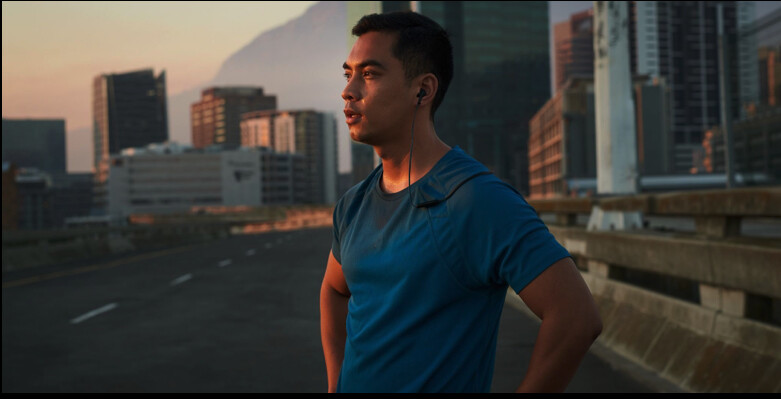
The study includes a list of statements to help you figure out your psychological view on running.
As a long-distance runner, you probably aim to do everything you can to prevent injury. You build your mileage gradually in your training, plan for rest days, strength train, and change your shoes once they’ve maxed out on mileage. But do you pay attention to your mindset when it comes to preventing injuries? According to research published by the Technische Universiteit Eindhoven in the Netherlands, that could play a major role in reducing injury risk.“How you view and manage your running from a psychological perspective appears to be important for which health outcomes you’ll experience from your sport,” Luuk van Iperen, Ph.D., researcher at the Human Performance Management group at the university tells Runner’s World. “There are good practices that can affect injury risk and fatigue associated with long-distance running.”
The Role Your Mindset Plays in Injury Risk and Prevention
Looking at more than 1,000 runners included in two studies, Iperen and his fellow researchers analyzed the effectiveness on injury prevention of functional self-regulatory mechanisms. He defines this self-regulation as a blend of physical, cognitive, and emotional components. In terms of psychology, these mechanisms include the ways runners cope with the demands of the sport.
They found a link between lower injury risk and certain mindsets, including the ability to “detach” from running. Being able to detach from running means you’re able to stop being cognitively and emotionally occupied with the sport when not training.
“Being obsessively passionate seems to link to both worse management of one’s running efforts, as well as worse health outcomes,” says Iperen. “Make sure you remain flexible in your efforts.”
This doesn’t mean trying to turn off your enthusiasm for the sport, he clarifies. In the research, Iperen and his team separated passion into two categories: obsessive and harmonious. The latter is characterized by flexibility and balance with other parts of your life—such as skipping a run on your training plan if your body needs rest, or making sure you don’t miss social gatherings or time with family due to running—while obsession involves more rigidity. How can you know the difference? Control, he says.
“If you feel like you’re lacking control over your efforts, that implies you’re out of balance with your passion, and that could increase injury risk,” he noted. For example, you may skip rest days, keep running even though you feel fatigued, and increase mileage too quickly if you have a more obsessive mindset toward running and less control over your commitment to hitting every workout.
How to Know if Your Mindset is Putting You at Risk of Injury
To help runners assess their own psychological perspective, the researchers developed a test with 12 statements—available in the appendix of the full study—that asks how often runners agree with sentiments like these:
If I could, I would only engage in running.
I can’t mentally distance myself from running.
After running, I don’t shake off the physical exertion from running.
I have trouble focusing my emotions on aspects other than running.
After running, I don’t tend to put all thoughts about running aside.
Strong or frequent agreement with these statements can imply a runner may be at higher risk for the “obsessive passion” that might lead to injury and fatigue.
That doesn’t mean you’ll automatically get injured if you’re deep into the running obsession—after all, the weeks leading up to a marathon or other race can get pretty intense and focused for many runners and tend to take over the psyche—but Iperen says that taking mental breaks can be helpful for reducing your risk level. That might include simple strategies like reading a book or magazine, meditating, spending time with friends, or even working.
The Role Your Mind Plays in Dealing with Current Injuries
Using psychological strategies to prevent injury may be helpful, but what about when you’re already injured? That can create a tricky balance. You might want to keep challenging yourself and push through the pain, but you need to recognize if doing that will worsen your injury, says Clint Soppe, M.D., orthopedic surgeon and sports medicine specialist at Cedars-Sinai Kerlan-Jobe Institute in Los Angeles, and orthopedic consultant for the LA Galaxy team.
Some ways to tell if you’re overdoing it, he suggests, include pain that’s sharp instead of a dull ache, and if pain persists for more than a few minutes once you stop running.
Your mindset and your larger running strategy should include knowing when to stop yourself from running, especially if you’re experiencing pain—which Soppe says is often a sign your body is sending as a way to get you to change what you’re doing.
This is usually the case with stress fractures, for example, a common running injury, Soppe tells Runner’s World. Because these fractures happen over time due to microtrauma to the bone, your mindset needs to include awareness about how your body is feeling on each run, not just in general, he says, so you can recognize the pain and take a few days off or seek help before it becomes something that really sidelines you.
“You can definitely get into a psychological frame of mind where you ignore signs of problems and brush them off as minor aches and pains, particularly if you’ve been running for a long time,” Soppe adds. “That’s true with stress fractures, but also for any type of potential issue. You really need to pay attention to mobility throughout the body and adjust as needed, because you can’t just think your way out of injury. Your mindset should be: What is happening with my body today, and how can I support that?”
(08/06/2022) ⚡AMPby Runner’s World
Kenya's Abraham Kibiwot digs deep to deliver Commonwealth steeplechase gold
Abraham Kibiwot was made to sweat before winning the 3,000m steeplechase gold at the ongoing Commonwealth Games at the Alexander Stadium on Saturday.
Kibiwott had to weather strong challenge from India's Avinash Mukund Sable to win in eight minutes and 11.15 seconds.
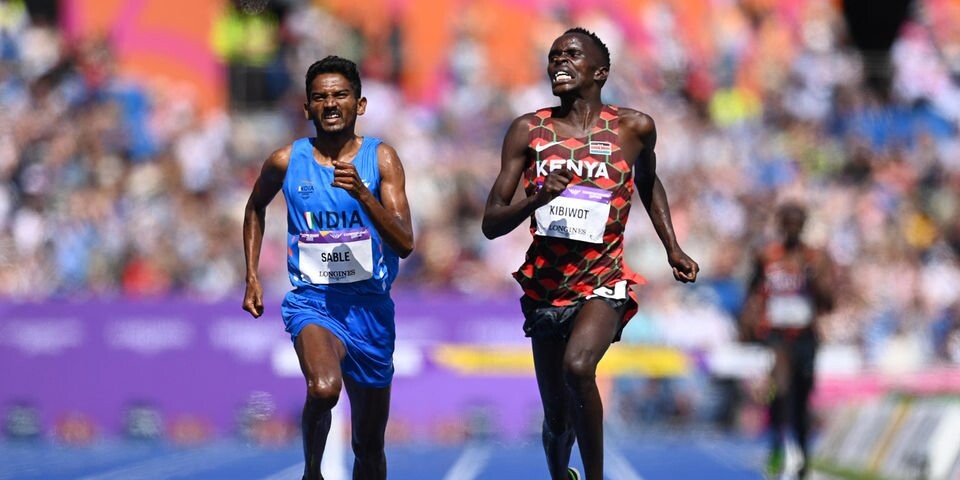
Mukund claimed silver in a Personal Best time of 8:11.20 as 2021 World Under-20 3,000m steeplechase Amos Serem grabbed bronze in 8:16.83.
Defending champion Conseslus Kipruto finished sixth in 8:34.98.
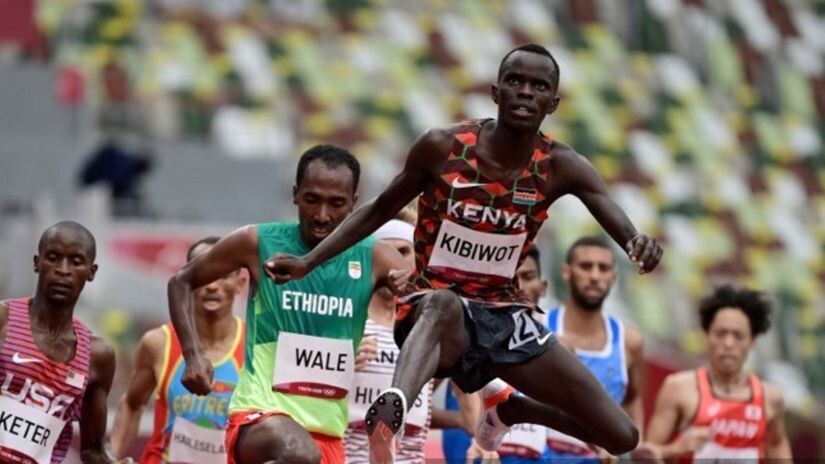
It was the third victory for Kenya at the Games with Ferdinand Omanyala (100m) and Jackline Chepkoech (3,000m steeplechase) having won gold in their respective events.
It brought to 12 the number of medals for Kenya; three gold, three silver and six bronze.
It was the first time Kenya failed to sweep all the podium places since 1998 Kuala Lumpur Games.
"I am happy to finally win after I got silver in 2018. It feels good," said Kibiwott adding that Kenya could have lost the title to the Indian if he had failed to inject in the pace.
"I know Mukund well from the World Athletics Championships in Oregon. He has beaten me once at some Diamond League race," said Kibiwott explaining that he is now at peace after the Tokyo Olympic Games and World Athletics Championships disappointment. "I won't rest until we have the Olympic and World titles back in Kenya," explained Kibiwott.
"I thank God for bronze. It was a fast race but I am happy Kibiwott's tactics worked otherwise it could have been bad. We thank God this far we have reached," said Serem.
"My lower back problem recurred midway through the race hence I couldn't push any further. I had to slow down," said Kipruto. "It's not a good performance but I am glad I finished the race. There's nothing much you can do with an injury."
(08/06/2022) ⚡AMPby Ayumba Ayodi
The Commonwealth Games
The Commonwealth Games are coming to Victoria - bringing an action packed sports program to our regional cities and delivering a long-term legacy for our future. From 17 to 29 March 2026, Geelong, Bendigo, Ballarat, Gippsland and Shepparton will be on the world stage, attracting millions of viewers and creating thousands of jobs. The multi-city model will...
more...

